Quick filters:
Perigynous Stock Photos and Images
 Black and white image of withered rose sepals and hypanthium Stock Photohttps://www.alamy.com/image-license-details/?v=1https://www.alamy.com/black-and-white-image-of-withered-rose-sepals-and-hypanthium-image442970414.html
Black and white image of withered rose sepals and hypanthium Stock Photohttps://www.alamy.com/image-license-details/?v=1https://www.alamy.com/black-and-white-image-of-withered-rose-sepals-and-hypanthium-image442970414.htmlRF2GMK17X–Black and white image of withered rose sepals and hypanthium
 Detailed closeup of the radial heart of a bright yellow sunflower with pollen Stock Photohttps://www.alamy.com/image-license-details/?v=1https://www.alamy.com/detailed-closeup-of-the-radial-heart-of-a-bright-yellow-sunflower-with-pollen-image440442617.html
Detailed closeup of the radial heart of a bright yellow sunflower with pollen Stock Photohttps://www.alamy.com/image-license-details/?v=1https://www.alamy.com/detailed-closeup-of-the-radial-heart-of-a-bright-yellow-sunflower-with-pollen-image440442617.htmlRF2GGFW1D–Detailed closeup of the radial heart of a bright yellow sunflower with pollen
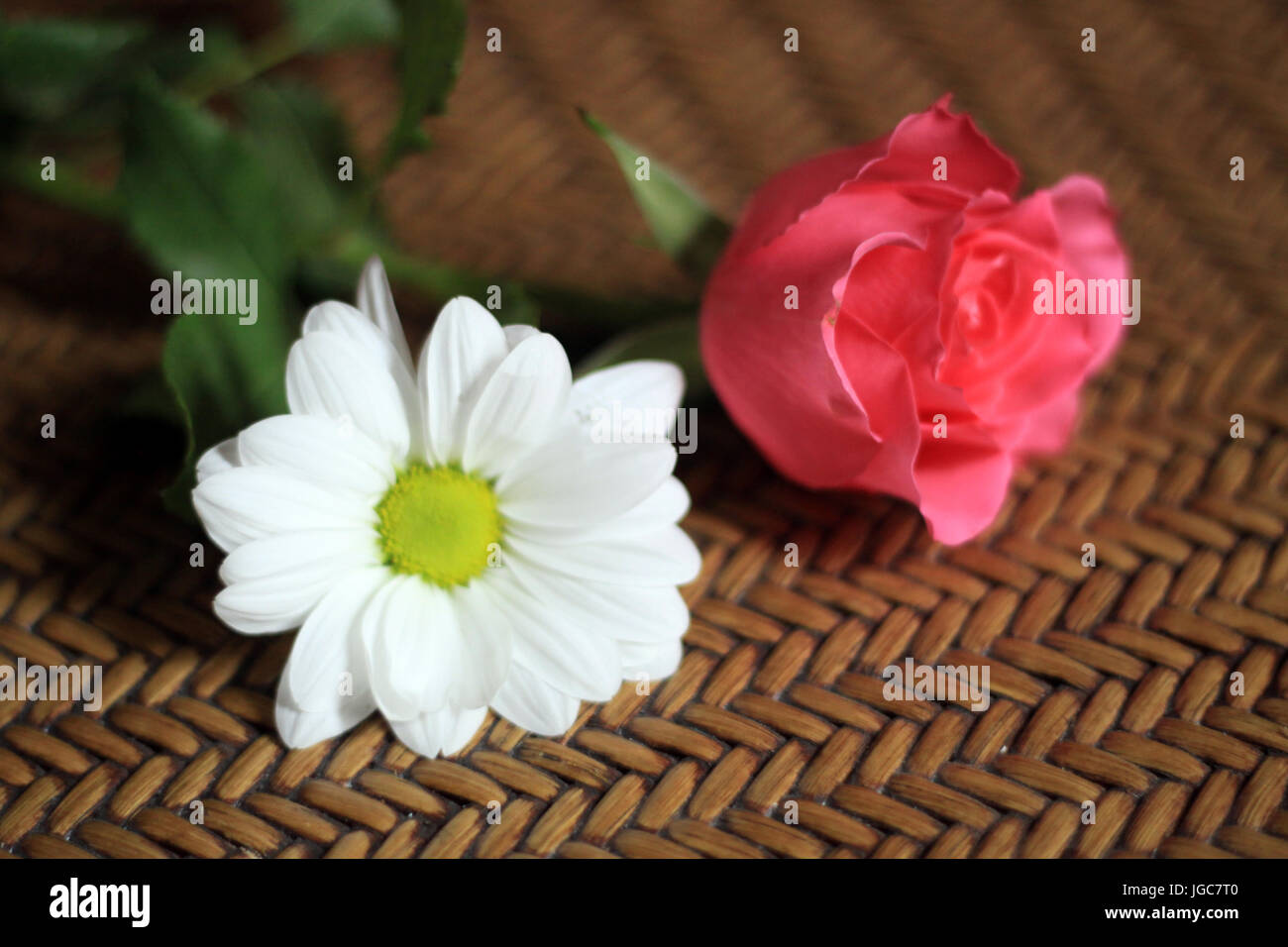 Flowering Flowers of Colour and Beauty Stock Photohttps://www.alamy.com/image-license-details/?v=1https://www.alamy.com/stock-photo-flowering-flowers-of-colour-and-beauty-147787024.html
Flowering Flowers of Colour and Beauty Stock Photohttps://www.alamy.com/image-license-details/?v=1https://www.alamy.com/stock-photo-flowering-flowers-of-colour-and-beauty-147787024.htmlRFJGC7T0–Flowering Flowers of Colour and Beauty
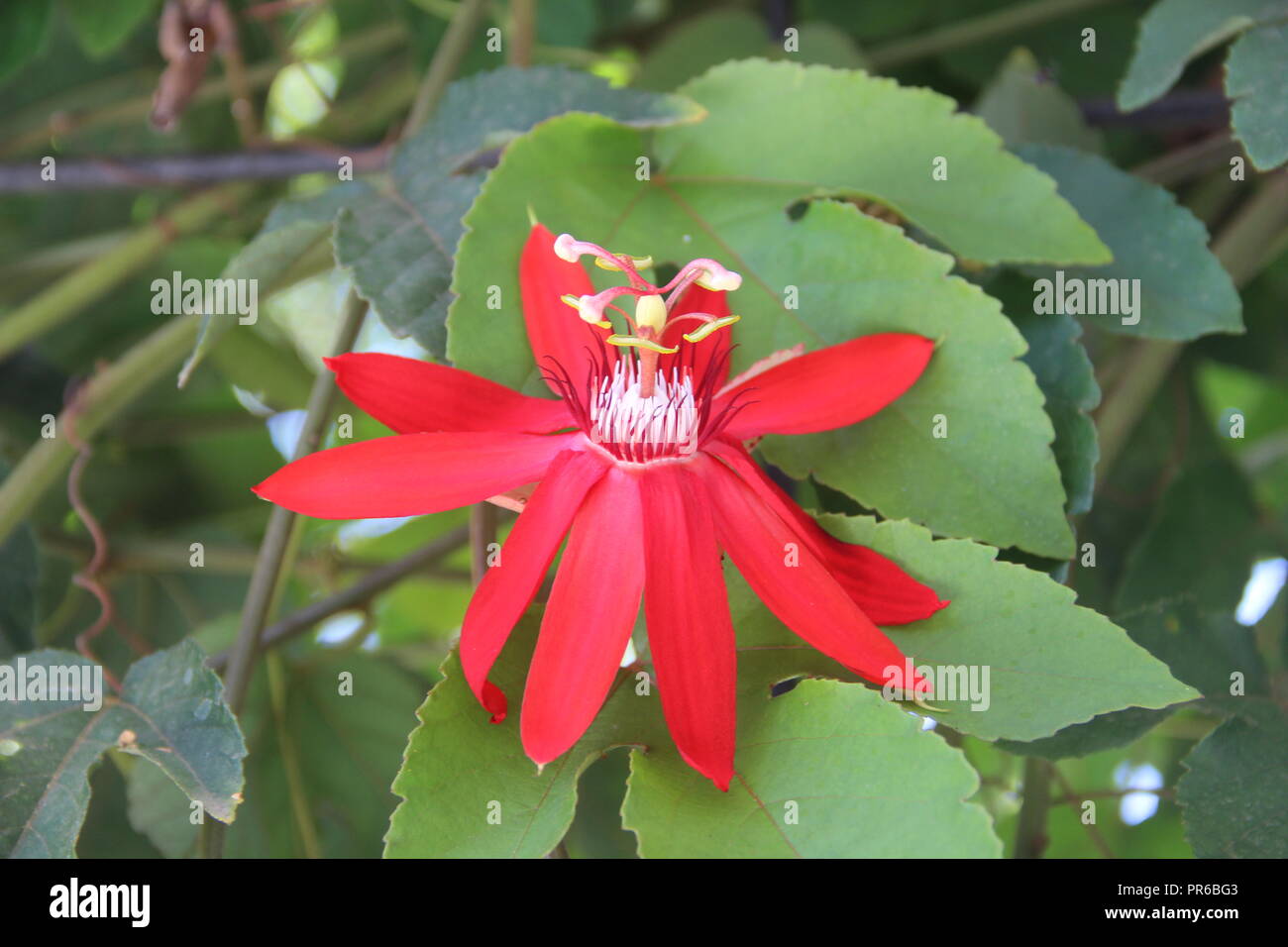 Beautiful and Flowers in Central Java, Indonesia Stock Photohttps://www.alamy.com/image-license-details/?v=1https://www.alamy.com/beautiful-and-flowers-in-central-java-indonesia-image220802291.html
Beautiful and Flowers in Central Java, Indonesia Stock Photohttps://www.alamy.com/image-license-details/?v=1https://www.alamy.com/beautiful-and-flowers-in-central-java-indonesia-image220802291.htmlRMPR6BG3–Beautiful and Flowers in Central Java, Indonesia
 Anacamptis pyramidalis - the pyramidal orchid Stock Photohttps://www.alamy.com/image-license-details/?v=1https://www.alamy.com/anacamptis-pyramidalis-the-pyramidal-orchid-image261601648.html
Anacamptis pyramidalis - the pyramidal orchid Stock Photohttps://www.alamy.com/image-license-details/?v=1https://www.alamy.com/anacamptis-pyramidalis-the-pyramidal-orchid-image261601648.htmlRMW5GYG0–Anacamptis pyramidalis - the pyramidal orchid
 Beautiful flower background Amazing view of bright yellow,red blooming in the garden at the middle of sunny spring day with green grass Stock Photohttps://www.alamy.com/image-license-details/?v=1https://www.alamy.com/stock-image-beautiful-flower-background-amazing-view-of-bright-yellowred-blooming-165863544.html
Beautiful flower background Amazing view of bright yellow,red blooming in the garden at the middle of sunny spring day with green grass Stock Photohttps://www.alamy.com/image-license-details/?v=1https://www.alamy.com/stock-image-beautiful-flower-background-amazing-view-of-bright-yellowred-blooming-165863544.htmlRFKHRMJ0–Beautiful flower background Amazing view of bright yellow,red blooming in the garden at the middle of sunny spring day with green grass
 Rosemary flowers Stock Photohttps://www.alamy.com/image-license-details/?v=1https://www.alamy.com/rosemary-flowers-image263245588.html
Rosemary flowers Stock Photohttps://www.alamy.com/image-license-details/?v=1https://www.alamy.com/rosemary-flowers-image263245588.htmlRMW87TC4–Rosemary flowers
 This picture is showing a Perigynous stamen. It looks like a pot. The stigma and anther growing up side, vintage line drawing or engraving illustratio Stock Vectorhttps://www.alamy.com/image-license-details/?v=1https://www.alamy.com/this-picture-is-showing-a-perigynous-stamen-it-looks-like-a-pot-the-stigma-and-anther-growing-up-side-vintage-line-drawing-or-engraving-illustratio-image244529476.html
This picture is showing a Perigynous stamen. It looks like a pot. The stigma and anther growing up side, vintage line drawing or engraving illustratio Stock Vectorhttps://www.alamy.com/image-license-details/?v=1https://www.alamy.com/this-picture-is-showing-a-perigynous-stamen-it-looks-like-a-pot-the-stigma-and-anther-growing-up-side-vintage-line-drawing-or-engraving-illustratio-image244529476.htmlRFT5R7RG–This picture is showing a Perigynous stamen. It looks like a pot. The stigma and anther growing up side, vintage line drawing or engraving illustratio
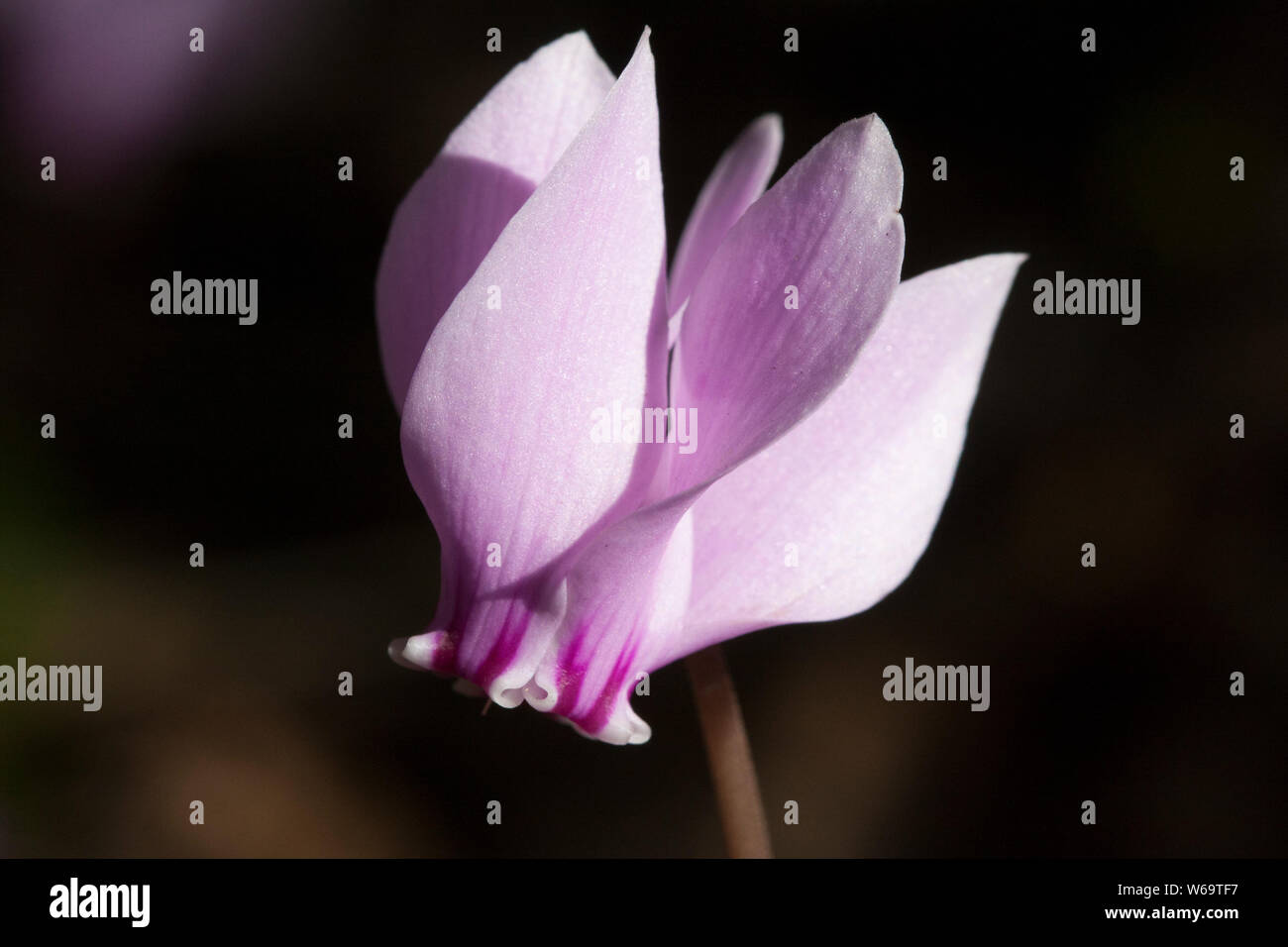 Flower, Plants / Magnoliophyta (Angiospermae) Stock Photohttps://www.alamy.com/image-license-details/?v=1https://www.alamy.com/flower-plants-magnoliophyta-angiospermae-image262060267.html
Flower, Plants / Magnoliophyta (Angiospermae) Stock Photohttps://www.alamy.com/image-license-details/?v=1https://www.alamy.com/flower-plants-magnoliophyta-angiospermae-image262060267.htmlRMW69TF7–Flower, Plants / Magnoliophyta (Angiospermae)
 Text-book of structural and physiological botany . FiG. 209.—Longitudinal section through the flowerof Rammcuhts acris, showing the hypogynouscalyx, corolla, and stamens.. Fig. 210.—Longitudinal section through the flower of Mesemhryantheinumfalci-fonne, showing the epigynous calyx, corolla, and stamens. rounds the free pistil, as in the rose; the calyx, corolla, andstamens then having a half-superior oxperigynous ^ insertion. ^ [Practically the term perigynous is used in English descriptive bo-tany with reference to the stamens to express their union to the calyx ;when attached to the corolla Stock Photohttps://www.alamy.com/image-license-details/?v=1https://www.alamy.com/text-book-of-structural-and-physiological-botany-fig-209longitudinal-section-through-the-flowerof-rammcuhts-acris-showing-the-hypogynouscalyx-corolla-and-stamens-fig-210longitudinal-section-through-the-flower-of-mesemhryantheinumfalci-fonne-showing-the-epigynous-calyx-corolla-and-stamens-rounds-the-free-pistil-as-in-the-rose-the-calyx-corolla-andstamens-then-having-a-half-superior-oxperigynous-insertion-practically-the-term-perigynous-is-used-in-english-descriptive-bo-tany-with-reference-to-the-stamens-to-express-their-union-to-the-calyx-when-attached-to-the-corolla-image343352799.html
Text-book of structural and physiological botany . FiG. 209.—Longitudinal section through the flowerof Rammcuhts acris, showing the hypogynouscalyx, corolla, and stamens.. Fig. 210.—Longitudinal section through the flower of Mesemhryantheinumfalci-fonne, showing the epigynous calyx, corolla, and stamens. rounds the free pistil, as in the rose; the calyx, corolla, andstamens then having a half-superior oxperigynous ^ insertion. ^ [Practically the term perigynous is used in English descriptive bo-tany with reference to the stamens to express their union to the calyx ;when attached to the corolla Stock Photohttps://www.alamy.com/image-license-details/?v=1https://www.alamy.com/text-book-of-structural-and-physiological-botany-fig-209longitudinal-section-through-the-flowerof-rammcuhts-acris-showing-the-hypogynouscalyx-corolla-and-stamens-fig-210longitudinal-section-through-the-flower-of-mesemhryantheinumfalci-fonne-showing-the-epigynous-calyx-corolla-and-stamens-rounds-the-free-pistil-as-in-the-rose-the-calyx-corolla-andstamens-then-having-a-half-superior-oxperigynous-insertion-practically-the-term-perigynous-is-used-in-english-descriptive-bo-tany-with-reference-to-the-stamens-to-express-their-union-to-the-calyx-when-attached-to-the-corolla-image343352799.htmlRM2AXH1YY–Text-book of structural and physiological botany . FiG. 209.—Longitudinal section through the flowerof Rammcuhts acris, showing the hypogynouscalyx, corolla, and stamens.. Fig. 210.—Longitudinal section through the flower of Mesemhryantheinumfalci-fonne, showing the epigynous calyx, corolla, and stamens. rounds the free pistil, as in the rose; the calyx, corolla, andstamens then having a half-superior oxperigynous ^ insertion. ^ [Practically the term perigynous is used in English descriptive bo-tany with reference to the stamens to express their union to the calyx ;when attached to the corolla
 . The natural history of plants. Botany. Fia. 207. Flower ()i FlO. 208. Longitudinal section of flower. perigynous as in many Ccesalpiniete, but its flowers are apetalous, while its stamens are indefinite as in Aldina and Tounatea.^ ' We cannot treat of the general clasBification, geographical distribution, and uses of this order until after the enumeration of the characters of its several genera, which immediately follows. The ahove points will therefore he found after the ensuing Genera.. Please note that these images are extracted from scanned page images that may have been digitally enhan Stock Photohttps://www.alamy.com/image-license-details/?v=1https://www.alamy.com/the-natural-history-of-plants-botany-fia-207-flower-i-flo-208-longitudinal-section-of-flower-perigynous-as-in-many-ccesalpiniete-but-its-flowers-are-apetalous-while-its-stamens-are-indefinite-as-in-aldina-and-tounatea-we-cannot-treat-of-the-general-clasbification-geographical-distribution-and-uses-of-this-order-until-after-the-enumeration-of-the-characters-of-its-several-genera-which-immediately-follows-the-ahove-points-will-therefore-he-found-after-the-ensuing-genera-please-note-that-these-images-are-extracted-from-scanned-page-images-that-may-have-been-digitally-enhan-image216423050.html
. The natural history of plants. Botany. Fia. 207. Flower ()i FlO. 208. Longitudinal section of flower. perigynous as in many Ccesalpiniete, but its flowers are apetalous, while its stamens are indefinite as in Aldina and Tounatea.^ ' We cannot treat of the general clasBification, geographical distribution, and uses of this order until after the enumeration of the characters of its several genera, which immediately follows. The ahove points will therefore he found after the ensuing Genera.. Please note that these images are extracted from scanned page images that may have been digitally enhan Stock Photohttps://www.alamy.com/image-license-details/?v=1https://www.alamy.com/the-natural-history-of-plants-botany-fia-207-flower-i-flo-208-longitudinal-section-of-flower-perigynous-as-in-many-ccesalpiniete-but-its-flowers-are-apetalous-while-its-stamens-are-indefinite-as-in-aldina-and-tounatea-we-cannot-treat-of-the-general-clasbification-geographical-distribution-and-uses-of-this-order-until-after-the-enumeration-of-the-characters-of-its-several-genera-which-immediately-follows-the-ahove-points-will-therefore-he-found-after-the-ensuing-genera-please-note-that-these-images-are-extracted-from-scanned-page-images-that-may-have-been-digitally-enhan-image216423050.htmlRMPG2WPJ–. The natural history of plants. Botany. Fia. 207. Flower ()i FlO. 208. Longitudinal section of flower. perigynous as in many Ccesalpiniete, but its flowers are apetalous, while its stamens are indefinite as in Aldina and Tounatea.^ ' We cannot treat of the general clasBification, geographical distribution, and uses of this order until after the enumeration of the characters of its several genera, which immediately follows. The ahove points will therefore he found after the ensuing Genera.. Please note that these images are extracted from scanned page images that may have been digitally enhan
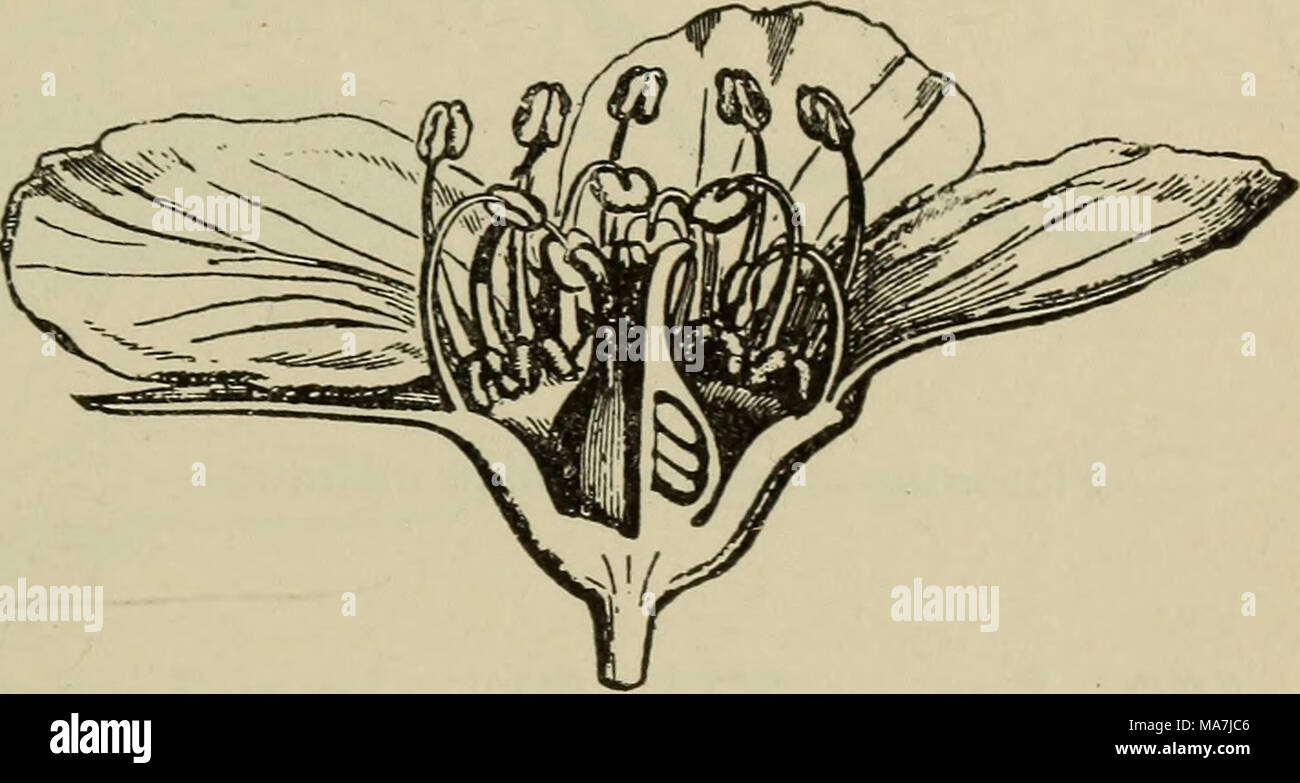 . Elementary botany . Fig. 362. Perigynous flower of spiraea (S. lanceolata). Warming.) (From Stock Photohttps://www.alamy.com/image-license-details/?v=1https://www.alamy.com/elementary-botany-fig-362-perigynous-flower-of-spiraea-s-lanceolata-warming-from-image178418358.html
. Elementary botany . Fig. 362. Perigynous flower of spiraea (S. lanceolata). Warming.) (From Stock Photohttps://www.alamy.com/image-license-details/?v=1https://www.alamy.com/elementary-botany-fig-362-perigynous-flower-of-spiraea-s-lanceolata-warming-from-image178418358.htmlRMMA7JC6–. Elementary botany . Fig. 362. Perigynous flower of spiraea (S. lanceolata). Warming.) (From
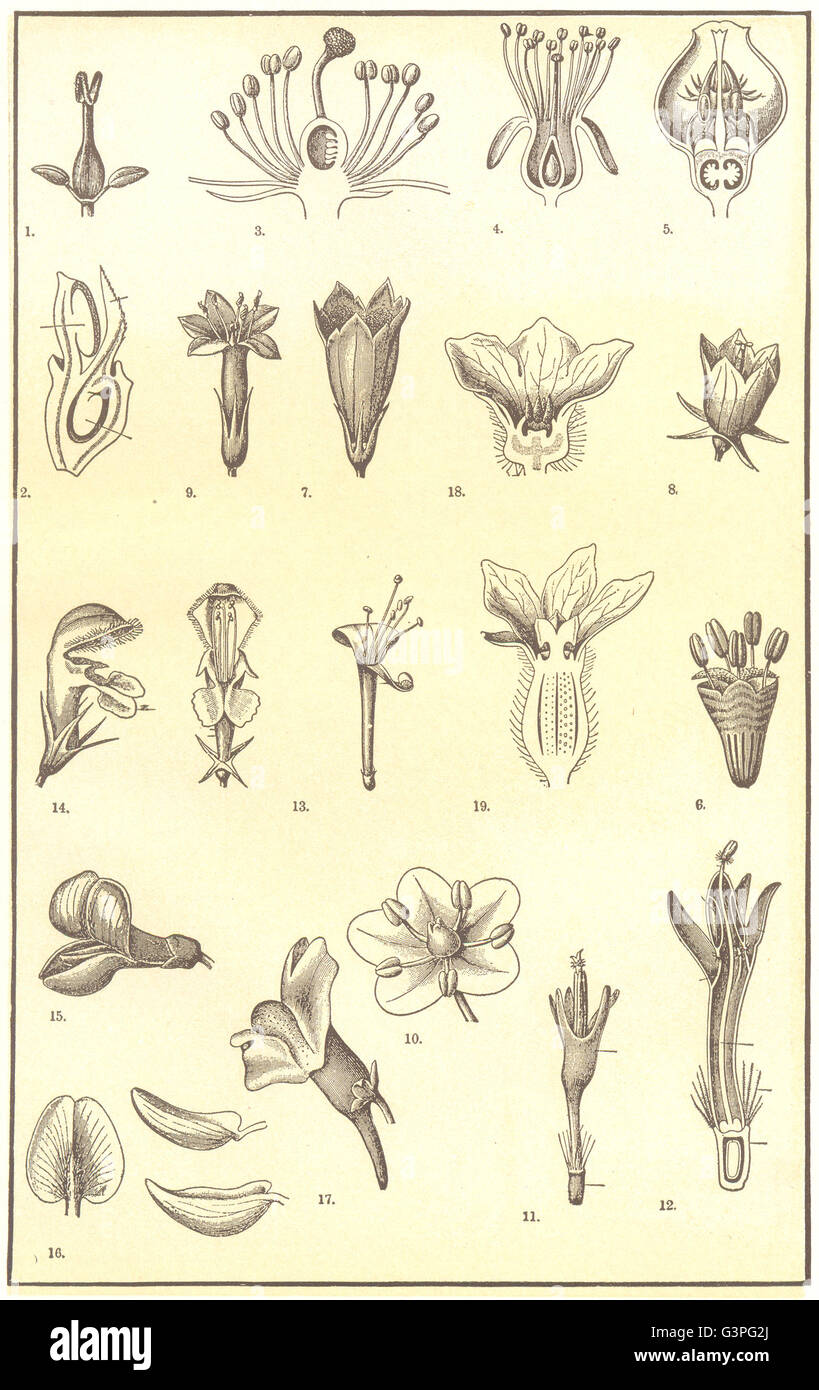 FLOWER MORPHOLOGY: Ash Hippuris sun-rose cherry Elm Gentian corolla melon, 1907 Stock Photohttps://www.alamy.com/image-license-details/?v=1https://www.alamy.com/stock-photo-flower-morphology-ash-hippuris-sun-rose-cherry-elm-gentian-corolla-105601738.html
FLOWER MORPHOLOGY: Ash Hippuris sun-rose cherry Elm Gentian corolla melon, 1907 Stock Photohttps://www.alamy.com/image-license-details/?v=1https://www.alamy.com/stock-photo-flower-morphology-ash-hippuris-sun-rose-cherry-elm-gentian-corolla-105601738.htmlRFG3PG2J–FLOWER MORPHOLOGY: Ash Hippuris sun-rose cherry Elm Gentian corolla melon, 1907
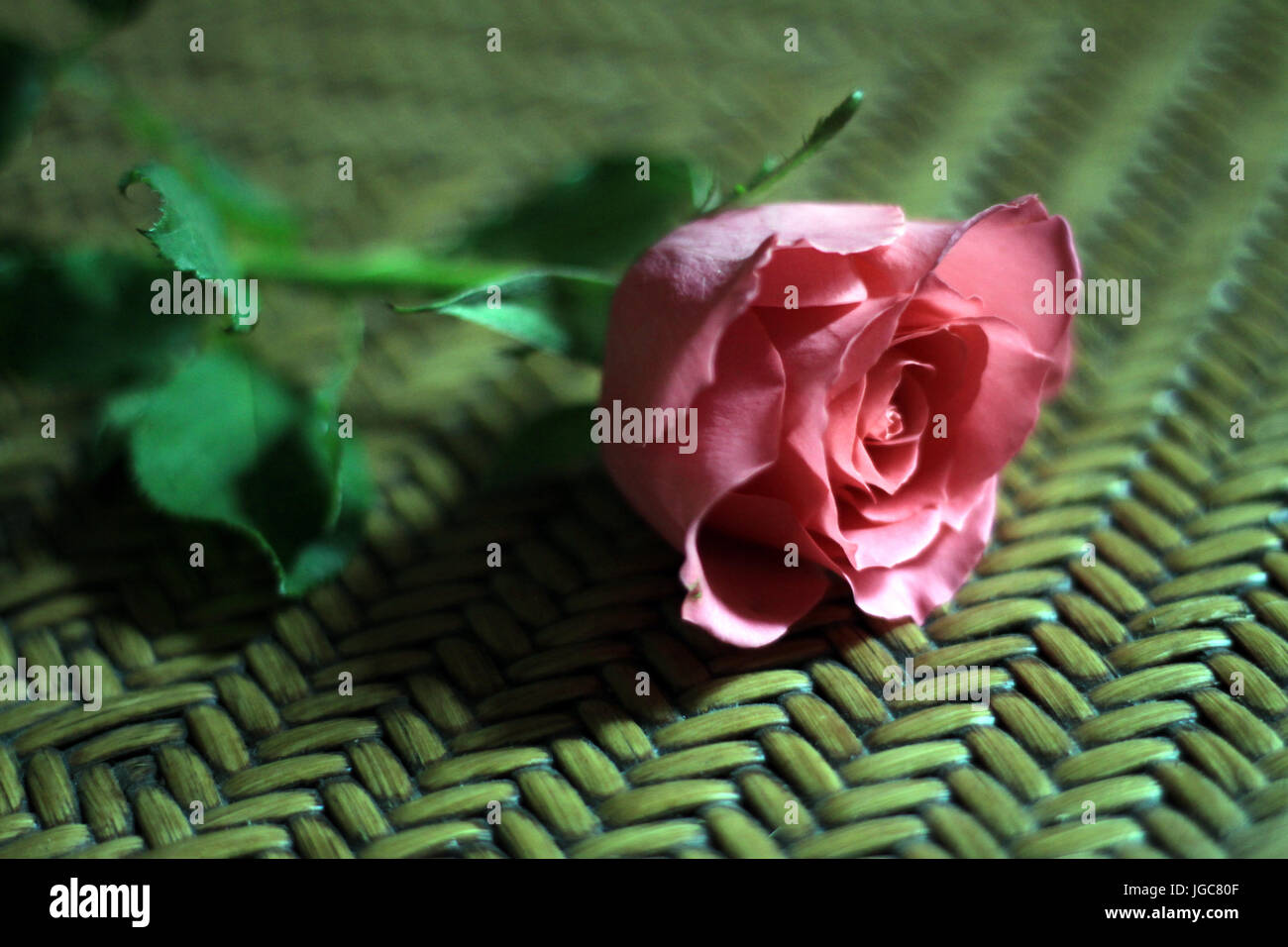 Flowering Flowers of Colour and Beauty Stock Photohttps://www.alamy.com/image-license-details/?v=1https://www.alamy.com/stock-photo-flowering-flowers-of-colour-and-beauty-147787151.html
Flowering Flowers of Colour and Beauty Stock Photohttps://www.alamy.com/image-license-details/?v=1https://www.alamy.com/stock-photo-flowering-flowers-of-colour-and-beauty-147787151.htmlRFJGC80F–Flowering Flowers of Colour and Beauty
 Botany of the Southern states . Stamen perigynous. Stamen epigynoos. Stamen hypogynous. the petals and that of the ovarium. Their apparent originvaries remarkably, sometimes appearing to rise from the ca-lyx (Fig. 119), when they are said to be perigynous ; at othertimes they rise from the pistil itself (Fig. 120), and are said to How in the order Primulaceae ? How accounted for? What is usuallythe number of stamens?—119. What is always the origin of stamens?When perigynous ? FILAMENT. 75 be epigynous, or from under the pistil, their true origin, andcalled hypogynous. (Fig. 121.) Fig. 122. Fig Stock Photohttps://www.alamy.com/image-license-details/?v=1https://www.alamy.com/botany-of-the-southern-states-stamen-perigynous-stamen-epigynoos-stamen-hypogynous-the-petals-and-that-of-the-ovarium-their-apparent-originvaries-remarkably-sometimes-appearing-to-rise-from-the-ca-lyx-fig-119-when-they-are-said-to-be-perigynous-at-othertimes-they-rise-from-the-pistil-itself-fig-120-and-are-said-to-how-in-the-order-primulaceae-how-accounted-for-what-is-usuallythe-number-of-stamens119-what-is-always-the-origin-of-stamenswhen-perigynous-filament-75-be-epigynous-or-from-under-the-pistil-their-true-origin-andcalled-hypogynous-fig-121-fig-122-fig-image339066906.html
Botany of the Southern states . Stamen perigynous. Stamen epigynoos. Stamen hypogynous. the petals and that of the ovarium. Their apparent originvaries remarkably, sometimes appearing to rise from the ca-lyx (Fig. 119), when they are said to be perigynous ; at othertimes they rise from the pistil itself (Fig. 120), and are said to How in the order Primulaceae ? How accounted for? What is usuallythe number of stamens?—119. What is always the origin of stamens?When perigynous ? FILAMENT. 75 be epigynous, or from under the pistil, their true origin, andcalled hypogynous. (Fig. 121.) Fig. 122. Fig Stock Photohttps://www.alamy.com/image-license-details/?v=1https://www.alamy.com/botany-of-the-southern-states-stamen-perigynous-stamen-epigynoos-stamen-hypogynous-the-petals-and-that-of-the-ovarium-their-apparent-originvaries-remarkably-sometimes-appearing-to-rise-from-the-ca-lyx-fig-119-when-they-are-said-to-be-perigynous-at-othertimes-they-rise-from-the-pistil-itself-fig-120-and-are-said-to-how-in-the-order-primulaceae-how-accounted-for-what-is-usuallythe-number-of-stamens119-what-is-always-the-origin-of-stamenswhen-perigynous-filament-75-be-epigynous-or-from-under-the-pistil-their-true-origin-andcalled-hypogynous-fig-121-fig-122-fig-image339066906.htmlRM2AKHR8A–Botany of the Southern states . Stamen perigynous. Stamen epigynoos. Stamen hypogynous. the petals and that of the ovarium. Their apparent originvaries remarkably, sometimes appearing to rise from the ca-lyx (Fig. 119), when they are said to be perigynous ; at othertimes they rise from the pistil itself (Fig. 120), and are said to How in the order Primulaceae ? How accounted for? What is usuallythe number of stamens?—119. What is always the origin of stamens?When perigynous ? FILAMENT. 75 be epigynous, or from under the pistil, their true origin, andcalled hypogynous. (Fig. 121.) Fig. 122. Fig
 . Elements of botany. Botany; Botany. STRUCTURE OF THE FLOWER AND ITS ORGANS. 149 all inserted on the receptacle, and the corolla and stamens are said to be hypogynous, that is, beneath-the-pistil. In- II the petals and the stamens appear as if they had grown fast to the calyx for some distance, so that they surround the pistil, and they are therefore said to be perigynous, that is, around-the-pistil. In III all the parts are free or uncon- PiG. 130. — Diadelphous Stamens of Sweet Pea. Fio. 129.—Mona- delphous stamens of Mallow.. A' B ' C Fig. 132.—Principal Types of Placenta. Aj parietal pl Stock Photohttps://www.alamy.com/image-license-details/?v=1https://www.alamy.com/elements-of-botany-botany-botany-structure-of-the-flower-and-its-organs-149-all-inserted-on-the-receptacle-and-the-corolla-and-stamens-are-said-to-be-hypogynous-that-is-beneath-the-pistil-in-ii-the-petals-and-the-stamens-appear-as-if-they-had-grown-fast-to-the-calyx-for-some-distance-so-that-they-surround-the-pistil-and-they-are-therefore-said-to-be-perigynous-that-is-around-the-pistil-in-iii-all-the-parts-are-free-or-uncon-pig-130-diadelphous-stamens-of-sweet-pea-fio-129mona-delphous-stamens-of-mallow-a-b-c-fig-132principal-types-of-placenta-aj-parietal-pl-image216448445.html
. Elements of botany. Botany; Botany. STRUCTURE OF THE FLOWER AND ITS ORGANS. 149 all inserted on the receptacle, and the corolla and stamens are said to be hypogynous, that is, beneath-the-pistil. In- II the petals and the stamens appear as if they had grown fast to the calyx for some distance, so that they surround the pistil, and they are therefore said to be perigynous, that is, around-the-pistil. In III all the parts are free or uncon- PiG. 130. — Diadelphous Stamens of Sweet Pea. Fio. 129.—Mona- delphous stamens of Mallow.. A' B ' C Fig. 132.—Principal Types of Placenta. Aj parietal pl Stock Photohttps://www.alamy.com/image-license-details/?v=1https://www.alamy.com/elements-of-botany-botany-botany-structure-of-the-flower-and-its-organs-149-all-inserted-on-the-receptacle-and-the-corolla-and-stamens-are-said-to-be-hypogynous-that-is-beneath-the-pistil-in-ii-the-petals-and-the-stamens-appear-as-if-they-had-grown-fast-to-the-calyx-for-some-distance-so-that-they-surround-the-pistil-and-they-are-therefore-said-to-be-perigynous-that-is-around-the-pistil-in-iii-all-the-parts-are-free-or-uncon-pig-130-diadelphous-stamens-of-sweet-pea-fio-129mona-delphous-stamens-of-mallow-a-b-c-fig-132principal-types-of-placenta-aj-parietal-pl-image216448445.htmlRMPG425H–. Elements of botany. Botany; Botany. STRUCTURE OF THE FLOWER AND ITS ORGANS. 149 all inserted on the receptacle, and the corolla and stamens are said to be hypogynous, that is, beneath-the-pistil. In- II the petals and the stamens appear as if they had grown fast to the calyx for some distance, so that they surround the pistil, and they are therefore said to be perigynous, that is, around-the-pistil. In III all the parts are free or uncon- PiG. 130. — Diadelphous Stamens of Sweet Pea. Fio. 129.—Mona- delphous stamens of Mallow.. A' B ' C Fig. 132.—Principal Types of Placenta. Aj parietal pl
 . corolla being inferior and superior, or when speaking of the ovary or fruit, the opposite. In some cases, especially in the plants contained in the fourteenth class of Linnaeus, when the corolla is oblique, the stamens are generally on one side, and called declinate. The words Thalamiflora, Calyciflom, and Corolliflom, are divisional terms used by some botanists; the first two being equivalent to hypogynous and perigynous, and the third when the corolla is monopetalous, with perigynous stamens and free of the calyx. Stock Photohttps://www.alamy.com/image-license-details/?v=1https://www.alamy.com/corolla-being-inferior-and-superior-or-when-speaking-of-the-ovary-or-fruit-the-opposite-in-some-cases-especially-in-the-plants-contained-in-the-fourteenth-class-of-linnaeus-when-the-corolla-is-oblique-the-stamens-are-generally-on-one-side-and-called-declinate-the-words-thalamiflora-calyciflom-and-corolliflom-are-divisional-terms-used-by-some-botanists-the-first-two-being-equivalent-to-hypogynous-and-perigynous-and-the-third-when-the-corolla-is-monopetalous-with-perigynous-stamens-and-free-of-the-calyx-image179907086.html
. corolla being inferior and superior, or when speaking of the ovary or fruit, the opposite. In some cases, especially in the plants contained in the fourteenth class of Linnaeus, when the corolla is oblique, the stamens are generally on one side, and called declinate. The words Thalamiflora, Calyciflom, and Corolliflom, are divisional terms used by some botanists; the first two being equivalent to hypogynous and perigynous, and the third when the corolla is monopetalous, with perigynous stamens and free of the calyx. Stock Photohttps://www.alamy.com/image-license-details/?v=1https://www.alamy.com/corolla-being-inferior-and-superior-or-when-speaking-of-the-ovary-or-fruit-the-opposite-in-some-cases-especially-in-the-plants-contained-in-the-fourteenth-class-of-linnaeus-when-the-corolla-is-oblique-the-stamens-are-generally-on-one-side-and-called-declinate-the-words-thalamiflora-calyciflom-and-corolliflom-are-divisional-terms-used-by-some-botanists-the-first-two-being-equivalent-to-hypogynous-and-perigynous-and-the-third-when-the-corolla-is-monopetalous-with-perigynous-stamens-and-free-of-the-calyx-image179907086.htmlRMMCKD92–. corolla being inferior and superior, or when speaking of the ovary or fruit, the opposite. In some cases, especially in the plants contained in the fourteenth class of Linnaeus, when the corolla is oblique, the stamens are generally on one side, and called declinate. The words Thalamiflora, Calyciflom, and Corolliflom, are divisional terms used by some botanists; the first two being equivalent to hypogynous and perigynous, and the third when the corolla is monopetalous, with perigynous stamens and free of the calyx.
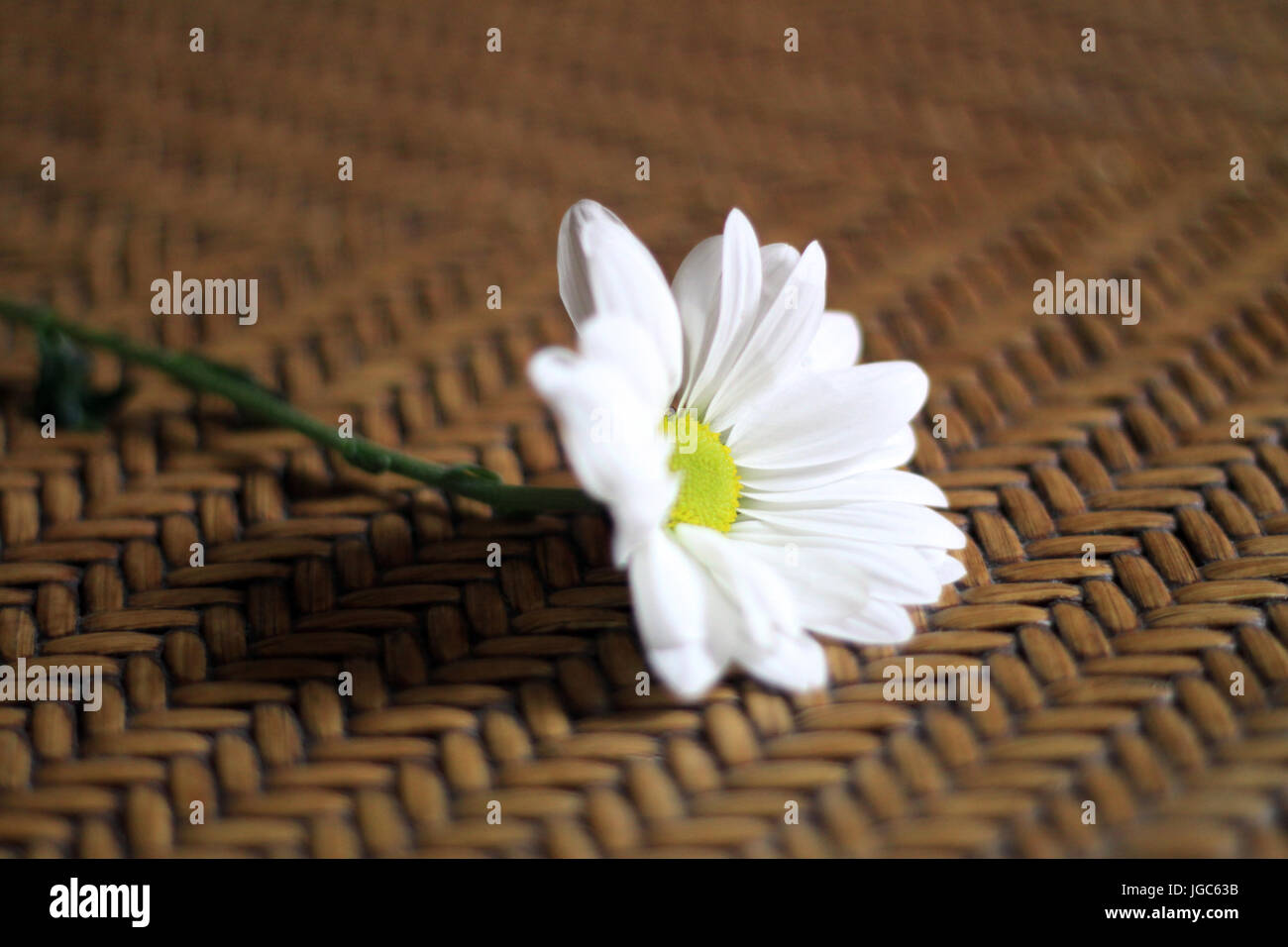 Flowering Flowers of Colour and Beauty Stock Photohttps://www.alamy.com/image-license-details/?v=1https://www.alamy.com/stock-photo-flowering-flowers-of-colour-and-beauty-147785663.html
Flowering Flowers of Colour and Beauty Stock Photohttps://www.alamy.com/image-license-details/?v=1https://www.alamy.com/stock-photo-flowering-flowers-of-colour-and-beauty-147785663.htmlRFJGC63B–Flowering Flowers of Colour and Beauty
 Flowering Flowers of Colour and Beauty Stock Photohttps://www.alamy.com/image-license-details/?v=1https://www.alamy.com/stock-photo-flowering-flowers-of-colour-and-beauty-147785581.html
Flowering Flowers of Colour and Beauty Stock Photohttps://www.alamy.com/image-license-details/?v=1https://www.alamy.com/stock-photo-flowering-flowers-of-colour-and-beauty-147785581.htmlRFJGC60D–Flowering Flowers of Colour and Beauty
 Text-book of botany, morphological and physiological . y, thereceptacle is hoflowed out like a cup or saucer, bearing the perianth and stamens onits annular margin, while the gynaeceum springs from the bottom (Fig. 353 A), theflower is said to be perigynous. It is obvious that intermediate forms are possiblebetween extreme cases of hypogynous and perigynous flowers; and these are in fact 4^0 PHANEROGAMS. common, especially among Rosiflorae. In both these forms of flower the gynaiceumis free, the receptacle taking no part in the formation of the wall of the ovary,although this appears to be the Stock Photohttps://www.alamy.com/image-license-details/?v=1https://www.alamy.com/text-book-of-botany-morphological-and-physiological-y-thereceptacle-is-hoflowed-out-like-a-cup-or-saucer-bearing-the-perianth-and-stamens-onits-annular-margin-while-the-gynaeceum-springs-from-the-bottom-fig-353-a-theflower-is-said-to-be-perigynous-it-is-obvious-that-intermediate-forms-are-possiblebetween-extreme-cases-of-hypogynous-and-perigynous-flowers-and-these-are-in-fact-40-phanerogams-common-especially-among-rosiflorae-in-both-these-forms-of-flower-the-gynaiceumis-free-the-receptacle-taking-no-part-in-the-formation-of-the-wall-of-the-ovaryalthough-this-appears-to-be-the-image342882794.html
Text-book of botany, morphological and physiological . y, thereceptacle is hoflowed out like a cup or saucer, bearing the perianth and stamens onits annular margin, while the gynaeceum springs from the bottom (Fig. 353 A), theflower is said to be perigynous. It is obvious that intermediate forms are possiblebetween extreme cases of hypogynous and perigynous flowers; and these are in fact 4^0 PHANEROGAMS. common, especially among Rosiflorae. In both these forms of flower the gynaiceumis free, the receptacle taking no part in the formation of the wall of the ovary,although this appears to be the Stock Photohttps://www.alamy.com/image-license-details/?v=1https://www.alamy.com/text-book-of-botany-morphological-and-physiological-y-thereceptacle-is-hoflowed-out-like-a-cup-or-saucer-bearing-the-perianth-and-stamens-onits-annular-margin-while-the-gynaeceum-springs-from-the-bottom-fig-353-a-theflower-is-said-to-be-perigynous-it-is-obvious-that-intermediate-forms-are-possiblebetween-extreme-cases-of-hypogynous-and-perigynous-flowers-and-these-are-in-fact-40-phanerogams-common-especially-among-rosiflorae-in-both-these-forms-of-flower-the-gynaiceumis-free-the-receptacle-taking-no-part-in-the-formation-of-the-wall-of-the-ovaryalthough-this-appears-to-be-the-image342882794.htmlRM2AWRJE2–Text-book of botany, morphological and physiological . y, thereceptacle is hoflowed out like a cup or saucer, bearing the perianth and stamens onits annular margin, while the gynaeceum springs from the bottom (Fig. 353 A), theflower is said to be perigynous. It is obvious that intermediate forms are possiblebetween extreme cases of hypogynous and perigynous flowers; and these are in fact 4^0 PHANEROGAMS. common, especially among Rosiflorae. In both these forms of flower the gynaiceumis free, the receptacle taking no part in the formation of the wall of the ovary,although this appears to be the
 . Essentials of botany. Botany; Botany. When the receptacle is concave, so that the pistil is inserted on the same level with the stamens or lower, but not at all united with the receptacle, the flower is said to be perigynous (around the pistil) and the ovary is half- inferior (Fig. 114, II). When the ovary is united with the I li III receptacle, the flower is said to Tig. 114. Insertion of the )q epigynous (upon the pistil) or Floral Organs. ^^^ ^^^^^ ^^ inferior (Fig. 99). I, hypogynous, all the other parts on ,gg pio-alDiap-ramq the receptacle, beneath the pistil; ^^^- -TiOrai JJiagramS. Stock Photohttps://www.alamy.com/image-license-details/?v=1https://www.alamy.com/essentials-of-botany-botany-botany-when-the-receptacle-is-concave-so-that-the-pistil-is-inserted-on-the-same-level-with-the-stamens-or-lower-but-not-at-all-united-with-the-receptacle-the-flower-is-said-to-be-perigynous-around-the-pistil-and-the-ovary-is-half-inferior-fig-114-ii-when-the-ovary-is-united-with-the-i-li-iii-receptacle-the-flower-is-said-to-tig-114-insertion-of-the-q-epigynous-upon-the-pistil-or-floral-organs-inferior-fig-99-i-hypogynous-all-the-other-parts-on-gg-pio-aldiap-ramq-the-receptacle-beneath-the-pistil-tiorai-jjiagrams-image216448235.html
. Essentials of botany. Botany; Botany. When the receptacle is concave, so that the pistil is inserted on the same level with the stamens or lower, but not at all united with the receptacle, the flower is said to be perigynous (around the pistil) and the ovary is half- inferior (Fig. 114, II). When the ovary is united with the I li III receptacle, the flower is said to Tig. 114. Insertion of the )q epigynous (upon the pistil) or Floral Organs. ^^^ ^^^^^ ^^ inferior (Fig. 99). I, hypogynous, all the other parts on ,gg pio-alDiap-ramq the receptacle, beneath the pistil; ^^^- -TiOrai JJiagramS. Stock Photohttps://www.alamy.com/image-license-details/?v=1https://www.alamy.com/essentials-of-botany-botany-botany-when-the-receptacle-is-concave-so-that-the-pistil-is-inserted-on-the-same-level-with-the-stamens-or-lower-but-not-at-all-united-with-the-receptacle-the-flower-is-said-to-be-perigynous-around-the-pistil-and-the-ovary-is-half-inferior-fig-114-ii-when-the-ovary-is-united-with-the-i-li-iii-receptacle-the-flower-is-said-to-tig-114-insertion-of-the-q-epigynous-upon-the-pistil-or-floral-organs-inferior-fig-99-i-hypogynous-all-the-other-parts-on-gg-pio-aldiap-ramq-the-receptacle-beneath-the-pistil-tiorai-jjiagrams-image216448235.htmlRMPG41X3–. Essentials of botany. Botany; Botany. When the receptacle is concave, so that the pistil is inserted on the same level with the stamens or lower, but not at all united with the receptacle, the flower is said to be perigynous (around the pistil) and the ovary is half- inferior (Fig. 114, II). When the ovary is united with the I li III receptacle, the flower is said to Tig. 114. Insertion of the )q epigynous (upon the pistil) or Floral Organs. ^^^ ^^^^^ ^^ inferior (Fig. 99). I, hypogynous, all the other parts on ,gg pio-alDiap-ramq the receptacle, beneath the pistil; ^^^- -TiOrai JJiagramS.
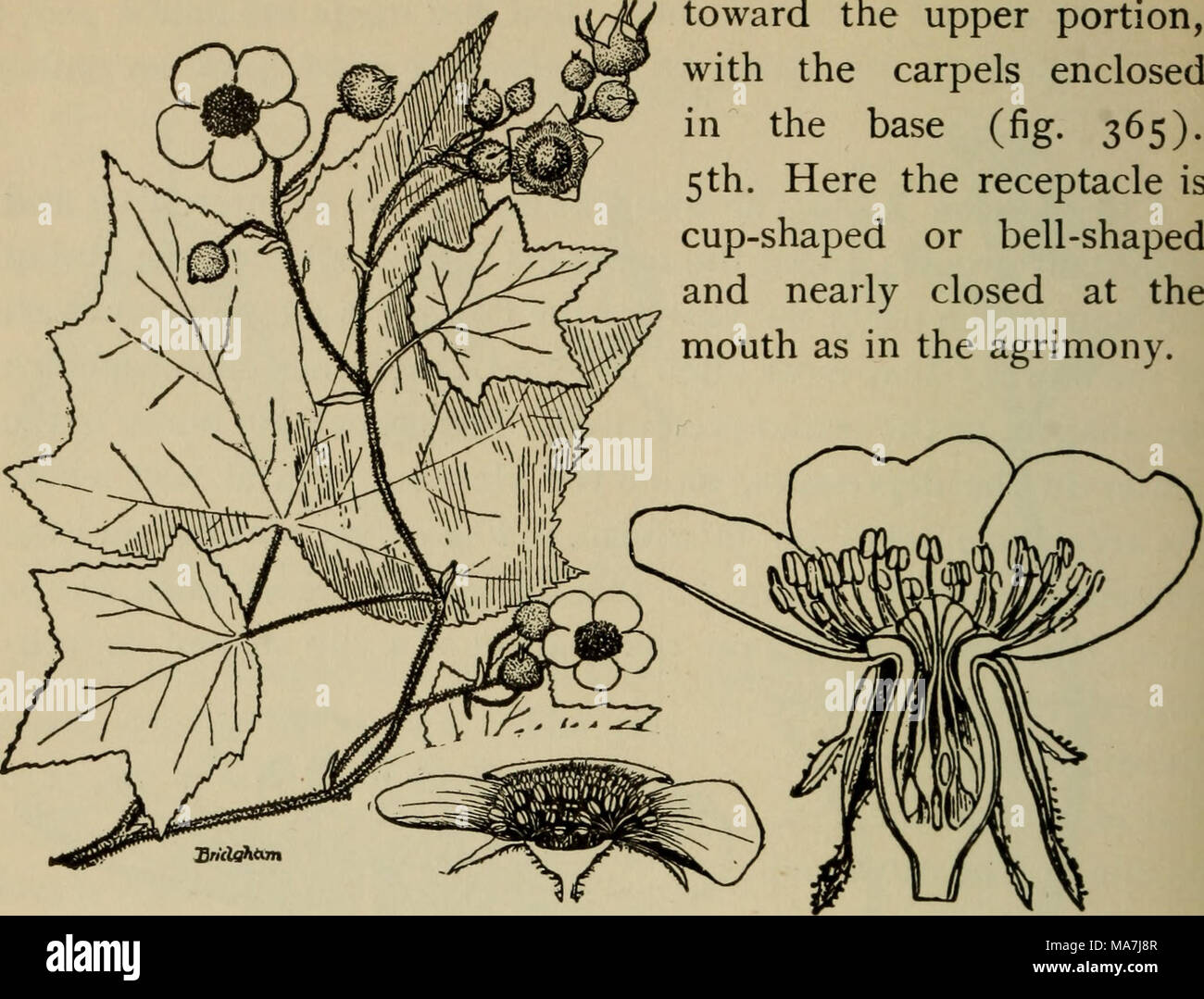 . Elementary botany . toward the upper portion, with the carpels enclosed in the base (fig. 365). 5 th. Here the receptacle is cup-shaped or bell-shaped and nearly closed at the mouth as in the agrimony. Fig. 364. Flowering raspberry (Rubus odoratus). Fig. 365- Perigynous flower of rosa, with contracted receptacle. (From Warming.) 532. Lesson XII. The almond or plum family (amygdala- ceae).—The members of this family are trees or shrubs. The common choke-cherry (fig. 366) will serve to represent one of the types. The flowers of this species are borne in racemes. The receptacle is cup-shaped. O Stock Photohttps://www.alamy.com/image-license-details/?v=1https://www.alamy.com/elementary-botany-toward-the-upper-portion-with-the-carpels-enclosed-in-the-base-fig-365-5-th-here-the-receptacle-is-cup-shaped-or-bell-shaped-and-nearly-closed-at-the-mouth-as-in-the-agrimony-fig-364-flowering-raspberry-rubus-odoratus-fig-365-perigynous-flower-of-rosa-with-contracted-receptacle-from-warming-532-lesson-xii-the-almond-or-plum-family-amygdala-ceaethe-members-of-this-family-are-trees-or-shrubs-the-common-choke-cherry-fig-366-will-serve-to-represent-one-of-the-types-the-flowers-of-this-species-are-borne-in-racemes-the-receptacle-is-cup-shaped-o-image178418263.html
. Elementary botany . toward the upper portion, with the carpels enclosed in the base (fig. 365). 5 th. Here the receptacle is cup-shaped or bell-shaped and nearly closed at the mouth as in the agrimony. Fig. 364. Flowering raspberry (Rubus odoratus). Fig. 365- Perigynous flower of rosa, with contracted receptacle. (From Warming.) 532. Lesson XII. The almond or plum family (amygdala- ceae).—The members of this family are trees or shrubs. The common choke-cherry (fig. 366) will serve to represent one of the types. The flowers of this species are borne in racemes. The receptacle is cup-shaped. O Stock Photohttps://www.alamy.com/image-license-details/?v=1https://www.alamy.com/elementary-botany-toward-the-upper-portion-with-the-carpels-enclosed-in-the-base-fig-365-5-th-here-the-receptacle-is-cup-shaped-or-bell-shaped-and-nearly-closed-at-the-mouth-as-in-the-agrimony-fig-364-flowering-raspberry-rubus-odoratus-fig-365-perigynous-flower-of-rosa-with-contracted-receptacle-from-warming-532-lesson-xii-the-almond-or-plum-family-amygdala-ceaethe-members-of-this-family-are-trees-or-shrubs-the-common-choke-cherry-fig-366-will-serve-to-represent-one-of-the-types-the-flowers-of-this-species-are-borne-in-racemes-the-receptacle-is-cup-shaped-o-image178418263.htmlRMMA7J8R–. Elementary botany . toward the upper portion, with the carpels enclosed in the base (fig. 365). 5 th. Here the receptacle is cup-shaped or bell-shaped and nearly closed at the mouth as in the agrimony. Fig. 364. Flowering raspberry (Rubus odoratus). Fig. 365- Perigynous flower of rosa, with contracted receptacle. (From Warming.) 532. Lesson XII. The almond or plum family (amygdala- ceae).—The members of this family are trees or shrubs. The common choke-cherry (fig. 366) will serve to represent one of the types. The flowers of this species are borne in racemes. The receptacle is cup-shaped. O
 Flowering Flowers of Colour and Beauty Stock Photohttps://www.alamy.com/image-license-details/?v=1https://www.alamy.com/stock-photo-flowering-flowers-of-colour-and-beauty-147785600.html
Flowering Flowers of Colour and Beauty Stock Photohttps://www.alamy.com/image-license-details/?v=1https://www.alamy.com/stock-photo-flowering-flowers-of-colour-and-beauty-147785600.htmlRFJGC614–Flowering Flowers of Colour and Beauty
 Botany of the Southern states . Stamen perigynous. Stamen epigynoos. Stamen hypogynous. the petals and that of the ovarium. Their apparent originvaries remarkably, sometimes appearing to rise from the ca-lyx (Fig. 119), when they are said to be perigynous ; at othertimes they rise from the pistil itself (Fig. 120), and are said to How in the order Primulaceae ? How accounted for? What is usuallythe number of stamens?—119. What is always the origin of stamens?When perigynous ? FILAMENT. 75 be epigynous, or from under the pistil, their true origin, andcalled hypogynous. (Fig. 121.) Fig. 122. Fig Stock Photohttps://www.alamy.com/image-license-details/?v=1https://www.alamy.com/botany-of-the-southern-states-stamen-perigynous-stamen-epigynoos-stamen-hypogynous-the-petals-and-that-of-the-ovarium-their-apparent-originvaries-remarkably-sometimes-appearing-to-rise-from-the-ca-lyx-fig-119-when-they-are-said-to-be-perigynous-at-othertimes-they-rise-from-the-pistil-itself-fig-120-and-are-said-to-how-in-the-order-primulaceae-how-accounted-for-what-is-usuallythe-number-of-stamens119-what-is-always-the-origin-of-stamenswhen-perigynous-filament-75-be-epigynous-or-from-under-the-pistil-their-true-origin-andcalled-hypogynous-fig-121-fig-122-fig-image339066763.html
Botany of the Southern states . Stamen perigynous. Stamen epigynoos. Stamen hypogynous. the petals and that of the ovarium. Their apparent originvaries remarkably, sometimes appearing to rise from the ca-lyx (Fig. 119), when they are said to be perigynous ; at othertimes they rise from the pistil itself (Fig. 120), and are said to How in the order Primulaceae ? How accounted for? What is usuallythe number of stamens?—119. What is always the origin of stamens?When perigynous ? FILAMENT. 75 be epigynous, or from under the pistil, their true origin, andcalled hypogynous. (Fig. 121.) Fig. 122. Fig Stock Photohttps://www.alamy.com/image-license-details/?v=1https://www.alamy.com/botany-of-the-southern-states-stamen-perigynous-stamen-epigynoos-stamen-hypogynous-the-petals-and-that-of-the-ovarium-their-apparent-originvaries-remarkably-sometimes-appearing-to-rise-from-the-ca-lyx-fig-119-when-they-are-said-to-be-perigynous-at-othertimes-they-rise-from-the-pistil-itself-fig-120-and-are-said-to-how-in-the-order-primulaceae-how-accounted-for-what-is-usuallythe-number-of-stamens119-what-is-always-the-origin-of-stamenswhen-perigynous-filament-75-be-epigynous-or-from-under-the-pistil-their-true-origin-andcalled-hypogynous-fig-121-fig-122-fig-image339066763.htmlRM2AKHR37–Botany of the Southern states . Stamen perigynous. Stamen epigynoos. Stamen hypogynous. the petals and that of the ovarium. Their apparent originvaries remarkably, sometimes appearing to rise from the ca-lyx (Fig. 119), when they are said to be perigynous ; at othertimes they rise from the pistil itself (Fig. 120), and are said to How in the order Primulaceae ? How accounted for? What is usuallythe number of stamens?—119. What is always the origin of stamens?When perigynous ? FILAMENT. 75 be epigynous, or from under the pistil, their true origin, andcalled hypogynous. (Fig. 121.) Fig. 122. Fig
 . Lessons in botany. Botany. ARRANGEMENTS OF FLOWER PARTS. 223 flower is said to be epigynous, as in the evening primrose. When the stamens or petals are borne on the calyx, the flower is said to be perigynous, or the stamens are said to be perigy- nous, as in the cherry (fig. 229), apple, etc. The flower is hypogynous when all the parts of the calyx, corolla, and andrce-. Fig. 196. The bluet (Houstonia coerulea). cium are free in their insertion, that is, when they are inserted on the receptacle, "under the pistil," since the pistil termi- nates fthe floral axis (example, the butter Stock Photohttps://www.alamy.com/image-license-details/?v=1https://www.alamy.com/lessons-in-botany-botany-arrangements-of-flower-parts-223-flower-is-said-to-be-epigynous-as-in-the-evening-primrose-when-the-stamens-or-petals-are-borne-on-the-calyx-the-flower-is-said-to-be-perigynous-or-the-stamens-are-said-to-be-perigy-nous-as-in-the-cherry-fig-229-apple-etc-the-flower-is-hypogynous-when-all-the-parts-of-the-calyx-corolla-and-andrce-fig-196-the-bluet-houstonia-coerulea-cium-are-free-in-their-insertion-that-is-when-they-are-inserted-on-the-receptacle-quotunder-the-pistilquot-since-the-pistil-termi-nates-fthe-floral-axis-example-the-butter-image216359361.html
. Lessons in botany. Botany. ARRANGEMENTS OF FLOWER PARTS. 223 flower is said to be epigynous, as in the evening primrose. When the stamens or petals are borne on the calyx, the flower is said to be perigynous, or the stamens are said to be perigy- nous, as in the cherry (fig. 229), apple, etc. The flower is hypogynous when all the parts of the calyx, corolla, and andrce-. Fig. 196. The bluet (Houstonia coerulea). cium are free in their insertion, that is, when they are inserted on the receptacle, "under the pistil," since the pistil termi- nates fthe floral axis (example, the butter Stock Photohttps://www.alamy.com/image-license-details/?v=1https://www.alamy.com/lessons-in-botany-botany-arrangements-of-flower-parts-223-flower-is-said-to-be-epigynous-as-in-the-evening-primrose-when-the-stamens-or-petals-are-borne-on-the-calyx-the-flower-is-said-to-be-perigynous-or-the-stamens-are-said-to-be-perigy-nous-as-in-the-cherry-fig-229-apple-etc-the-flower-is-hypogynous-when-all-the-parts-of-the-calyx-corolla-and-andrce-fig-196-the-bluet-houstonia-coerulea-cium-are-free-in-their-insertion-that-is-when-they-are-inserted-on-the-receptacle-quotunder-the-pistilquot-since-the-pistil-termi-nates-fthe-floral-axis-example-the-butter-image216359361.htmlRMPG00G1–. Lessons in botany. Botany. ARRANGEMENTS OF FLOWER PARTS. 223 flower is said to be epigynous, as in the evening primrose. When the stamens or petals are borne on the calyx, the flower is said to be perigynous, or the stamens are said to be perigy- nous, as in the cherry (fig. 229), apple, etc. The flower is hypogynous when all the parts of the calyx, corolla, and andrce-. Fig. 196. The bluet (Houstonia coerulea). cium are free in their insertion, that is, when they are inserted on the receptacle, "under the pistil," since the pistil termi- nates fthe floral axis (example, the butter
 . An illustrated flora of the northern United States, Canada and the British possessions : from Newfoundland to the parallel of the southern boundary of Virginia and from the Atlantic Ocean westward to the 102nd meridian . Low slender perennial herbs, with opposite petioled dentate leaves, and small white per- fect flowers in terminal and lateral racemes. Calyx-tube hairy, slightly prolonged beyond the ovary, its limb 2-parted Petals 2, obcordate, inserted on the perigynous disk. Stamens- 2, alternate with the petals; filaments filiform. Ovary 1-2-celled; united styles filiform; stigma capitat Stock Photohttps://www.alamy.com/image-license-details/?v=1https://www.alamy.com/an-illustrated-flora-of-the-northern-united-states-canada-and-the-british-possessions-from-newfoundland-to-the-parallel-of-the-southern-boundary-of-virginia-and-from-the-atlantic-ocean-westward-to-the-102nd-meridian-low-slender-perennial-herbs-with-opposite-petioled-dentate-leaves-and-small-white-per-fect-flowers-in-terminal-and-lateral-racemes-calyx-tube-hairy-slightly-prolonged-beyond-the-ovary-its-limb-2-parted-petals-2-obcordate-inserted-on-the-perigynous-disk-stamens-2-alternate-with-the-petals-filaments-filiform-ovary-1-2-celled-united-styles-filiform-stigma-capitat-image178474345.html
. An illustrated flora of the northern United States, Canada and the British possessions : from Newfoundland to the parallel of the southern boundary of Virginia and from the Atlantic Ocean westward to the 102nd meridian . Low slender perennial herbs, with opposite petioled dentate leaves, and small white per- fect flowers in terminal and lateral racemes. Calyx-tube hairy, slightly prolonged beyond the ovary, its limb 2-parted Petals 2, obcordate, inserted on the perigynous disk. Stamens- 2, alternate with the petals; filaments filiform. Ovary 1-2-celled; united styles filiform; stigma capitat Stock Photohttps://www.alamy.com/image-license-details/?v=1https://www.alamy.com/an-illustrated-flora-of-the-northern-united-states-canada-and-the-british-possessions-from-newfoundland-to-the-parallel-of-the-southern-boundary-of-virginia-and-from-the-atlantic-ocean-westward-to-the-102nd-meridian-low-slender-perennial-herbs-with-opposite-petioled-dentate-leaves-and-small-white-per-fect-flowers-in-terminal-and-lateral-racemes-calyx-tube-hairy-slightly-prolonged-beyond-the-ovary-its-limb-2-parted-petals-2-obcordate-inserted-on-the-perigynous-disk-stamens-2-alternate-with-the-petals-filaments-filiform-ovary-1-2-celled-united-styles-filiform-stigma-capitat-image178474345.htmlRMMAA5RN–. An illustrated flora of the northern United States, Canada and the British possessions : from Newfoundland to the parallel of the southern boundary of Virginia and from the Atlantic Ocean westward to the 102nd meridian . Low slender perennial herbs, with opposite petioled dentate leaves, and small white per- fect flowers in terminal and lateral racemes. Calyx-tube hairy, slightly prolonged beyond the ovary, its limb 2-parted Petals 2, obcordate, inserted on the perigynous disk. Stamens- 2, alternate with the petals; filaments filiform. Ovary 1-2-celled; united styles filiform; stigma capitat
 Flowering Flowers of Colour and Beauty Stock Photohttps://www.alamy.com/image-license-details/?v=1https://www.alamy.com/stock-photo-flowering-flowers-of-colour-and-beauty-147785554.html
Flowering Flowers of Colour and Beauty Stock Photohttps://www.alamy.com/image-license-details/?v=1https://www.alamy.com/stock-photo-flowering-flowers-of-colour-and-beauty-147785554.htmlRFJGC5YE–Flowering Flowers of Colour and Beauty
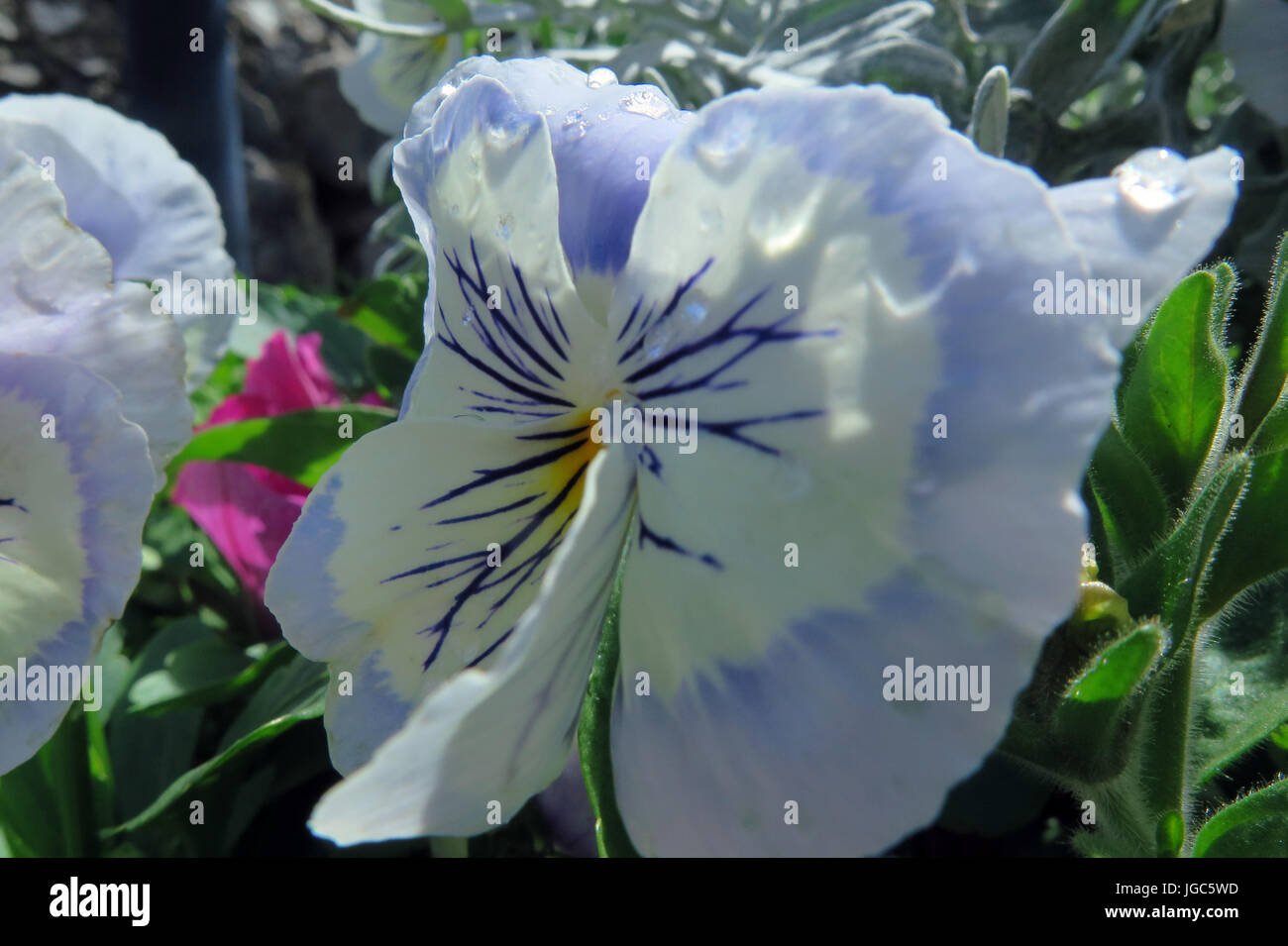 Flowering Flowers of Colour and Beauty Stock Photohttps://www.alamy.com/image-license-details/?v=1https://www.alamy.com/stock-photo-flowering-flowers-of-colour-and-beauty-147785497.html
Flowering Flowers of Colour and Beauty Stock Photohttps://www.alamy.com/image-license-details/?v=1https://www.alamy.com/stock-photo-flowering-flowers-of-colour-and-beauty-147785497.htmlRFJGC5WD–Flowering Flowers of Colour and Beauty
![Text-book of structural and physiological botany . Fig. 2<4.—Caryophyllaceous corolla of Lychnis vespert- rtjwith corona (magnified). Fig. 255.—Longitudinal section through thecaryophyllaceous corolla of Dia?ithus (mag-nified). base of a gamosepalous [or sometimes aposepalous] calyx,[and each of the petals is often furnished with an appendageknown as the ligule^ (Fig. 251) and forming together the The External Form of Plants. 133 coronci. The rosaceous corolla (Fig. 257), consists of fivepetals which are not unguiculate, with perigynous adhesion,i.e. attached to that part of the urceolate Stock Photo Text-book of structural and physiological botany . Fig. 2<4.—Caryophyllaceous corolla of Lychnis vespert- rtjwith corona (magnified). Fig. 255.—Longitudinal section through thecaryophyllaceous corolla of Dia?ithus (mag-nified). base of a gamosepalous [or sometimes aposepalous] calyx,[and each of the petals is often furnished with an appendageknown as the ligule^ (Fig. 251) and forming together the The External Form of Plants. 133 coronci. The rosaceous corolla (Fig. 257), consists of fivepetals which are not unguiculate, with perigynous adhesion,i.e. attached to that part of the urceolate Stock Photo](https://c8.alamy.com/comp/2AXGJN2/text-book-of-structural-and-physiological-botany-fig-2lt4caryophyllaceous-corolla-of-lychnis-vespert-rtjwith-corona-magnified-fig-255longitudinal-section-through-thecaryophyllaceous-corolla-of-diaithus-mag-nified-base-of-a-gamosepalous-or-sometimes-aposepalous-calyx-and-each-of-the-petals-is-often-furnished-with-an-appendageknown-as-the-ligule-fig-251-and-forming-together-the-the-external-form-of-plants-133-coronci-the-rosaceous-corolla-fig-257-consists-of-fivepetals-which-are-not-unguiculate-with-perigynous-adhesionie-attached-to-that-part-of-the-urceolate-2AXGJN2.jpg) Text-book of structural and physiological botany . Fig. 2<4.—Caryophyllaceous corolla of Lychnis vespert- rtjwith corona (magnified). Fig. 255.—Longitudinal section through thecaryophyllaceous corolla of Dia?ithus (mag-nified). base of a gamosepalous [or sometimes aposepalous] calyx,[and each of the petals is often furnished with an appendageknown as the ligule^ (Fig. 251) and forming together the The External Form of Plants. 133 coronci. The rosaceous corolla (Fig. 257), consists of fivepetals which are not unguiculate, with perigynous adhesion,i.e. attached to that part of the urceolate Stock Photohttps://www.alamy.com/image-license-details/?v=1https://www.alamy.com/text-book-of-structural-and-physiological-botany-fig-2lt4caryophyllaceous-corolla-of-lychnis-vespert-rtjwith-corona-magnified-fig-255longitudinal-section-through-thecaryophyllaceous-corolla-of-diaithus-mag-nified-base-of-a-gamosepalous-or-sometimes-aposepalous-calyx-and-each-of-the-petals-is-often-furnished-with-an-appendageknown-as-the-ligule-fig-251-and-forming-together-the-the-external-form-of-plants-133-coronci-the-rosaceous-corolla-fig-257-consists-of-fivepetals-which-are-not-unguiculate-with-perigynous-adhesionie-attached-to-that-part-of-the-urceolate-image343343982.html
Text-book of structural and physiological botany . Fig. 2<4.—Caryophyllaceous corolla of Lychnis vespert- rtjwith corona (magnified). Fig. 255.—Longitudinal section through thecaryophyllaceous corolla of Dia?ithus (mag-nified). base of a gamosepalous [or sometimes aposepalous] calyx,[and each of the petals is often furnished with an appendageknown as the ligule^ (Fig. 251) and forming together the The External Form of Plants. 133 coronci. The rosaceous corolla (Fig. 257), consists of fivepetals which are not unguiculate, with perigynous adhesion,i.e. attached to that part of the urceolate Stock Photohttps://www.alamy.com/image-license-details/?v=1https://www.alamy.com/text-book-of-structural-and-physiological-botany-fig-2lt4caryophyllaceous-corolla-of-lychnis-vespert-rtjwith-corona-magnified-fig-255longitudinal-section-through-thecaryophyllaceous-corolla-of-diaithus-mag-nified-base-of-a-gamosepalous-or-sometimes-aposepalous-calyx-and-each-of-the-petals-is-often-furnished-with-an-appendageknown-as-the-ligule-fig-251-and-forming-together-the-the-external-form-of-plants-133-coronci-the-rosaceous-corolla-fig-257-consists-of-fivepetals-which-are-not-unguiculate-with-perigynous-adhesionie-attached-to-that-part-of-the-urceolate-image343343982.htmlRM2AXGJN2–Text-book of structural and physiological botany . Fig. 2<4.—Caryophyllaceous corolla of Lychnis vespert- rtjwith corona (magnified). Fig. 255.—Longitudinal section through thecaryophyllaceous corolla of Dia?ithus (mag-nified). base of a gamosepalous [or sometimes aposepalous] calyx,[and each of the petals is often furnished with an appendageknown as the ligule^ (Fig. 251) and forming together the The External Form of Plants. 133 coronci. The rosaceous corolla (Fig. 257), consists of fivepetals which are not unguiculate, with perigynous adhesion,i.e. attached to that part of the urceolate
 . Botany for agricultural students . Botany. Fig. 438. — One of the Bindweeds {Convohulvus sepium), showing the corolla composed of united petals.. Fig. 439.— Alfalfa Dodder twining about an Alfalfa plant and drawing nourishment from it by means of parasitic roots (X§). Below, at the right, also a fruit, called capsule, of the Dodder is shown much enlarged. tropical forests. The flowers are usually regular, and both calyx and corolla are 4-5 lobed. The stamens are as many or twice as many as the lobes of the calyx or corolla, and the flowers are hypogynous or perigynous. Some, as the Cranberri Stock Photohttps://www.alamy.com/image-license-details/?v=1https://www.alamy.com/botany-for-agricultural-students-botany-fig-438-one-of-the-bindweeds-convohulvus-sepium-showing-the-corolla-composed-of-united-petals-fig-439-alfalfa-dodder-twining-about-an-alfalfa-plant-and-drawing-nourishment-from-it-by-means-of-parasitic-roots-x-below-at-the-right-also-a-fruit-called-capsule-of-the-dodder-is-shown-much-enlarged-tropical-forests-the-flowers-are-usually-regular-and-both-calyx-and-corolla-are-4-5-lobed-the-stamens-are-as-many-or-twice-as-many-as-the-lobes-of-the-calyx-or-corolla-and-the-flowers-are-hypogynous-or-perigynous-some-as-the-cranberri-image216442664.html
. Botany for agricultural students . Botany. Fig. 438. — One of the Bindweeds {Convohulvus sepium), showing the corolla composed of united petals.. Fig. 439.— Alfalfa Dodder twining about an Alfalfa plant and drawing nourishment from it by means of parasitic roots (X§). Below, at the right, also a fruit, called capsule, of the Dodder is shown much enlarged. tropical forests. The flowers are usually regular, and both calyx and corolla are 4-5 lobed. The stamens are as many or twice as many as the lobes of the calyx or corolla, and the flowers are hypogynous or perigynous. Some, as the Cranberri Stock Photohttps://www.alamy.com/image-license-details/?v=1https://www.alamy.com/botany-for-agricultural-students-botany-fig-438-one-of-the-bindweeds-convohulvus-sepium-showing-the-corolla-composed-of-united-petals-fig-439-alfalfa-dodder-twining-about-an-alfalfa-plant-and-drawing-nourishment-from-it-by-means-of-parasitic-roots-x-below-at-the-right-also-a-fruit-called-capsule-of-the-dodder-is-shown-much-enlarged-tropical-forests-the-flowers-are-usually-regular-and-both-calyx-and-corolla-are-4-5-lobed-the-stamens-are-as-many-or-twice-as-many-as-the-lobes-of-the-calyx-or-corolla-and-the-flowers-are-hypogynous-or-perigynous-some-as-the-cranberri-image216442664.htmlRMPG3PR4–. Botany for agricultural students . Botany. Fig. 438. — One of the Bindweeds {Convohulvus sepium), showing the corolla composed of united petals.. Fig. 439.— Alfalfa Dodder twining about an Alfalfa plant and drawing nourishment from it by means of parasitic roots (X§). Below, at the right, also a fruit, called capsule, of the Dodder is shown much enlarged. tropical forests. The flowers are usually regular, and both calyx and corolla are 4-5 lobed. The stamens are as many or twice as many as the lobes of the calyx or corolla, and the flowers are hypogynous or perigynous. Some, as the Cranberri
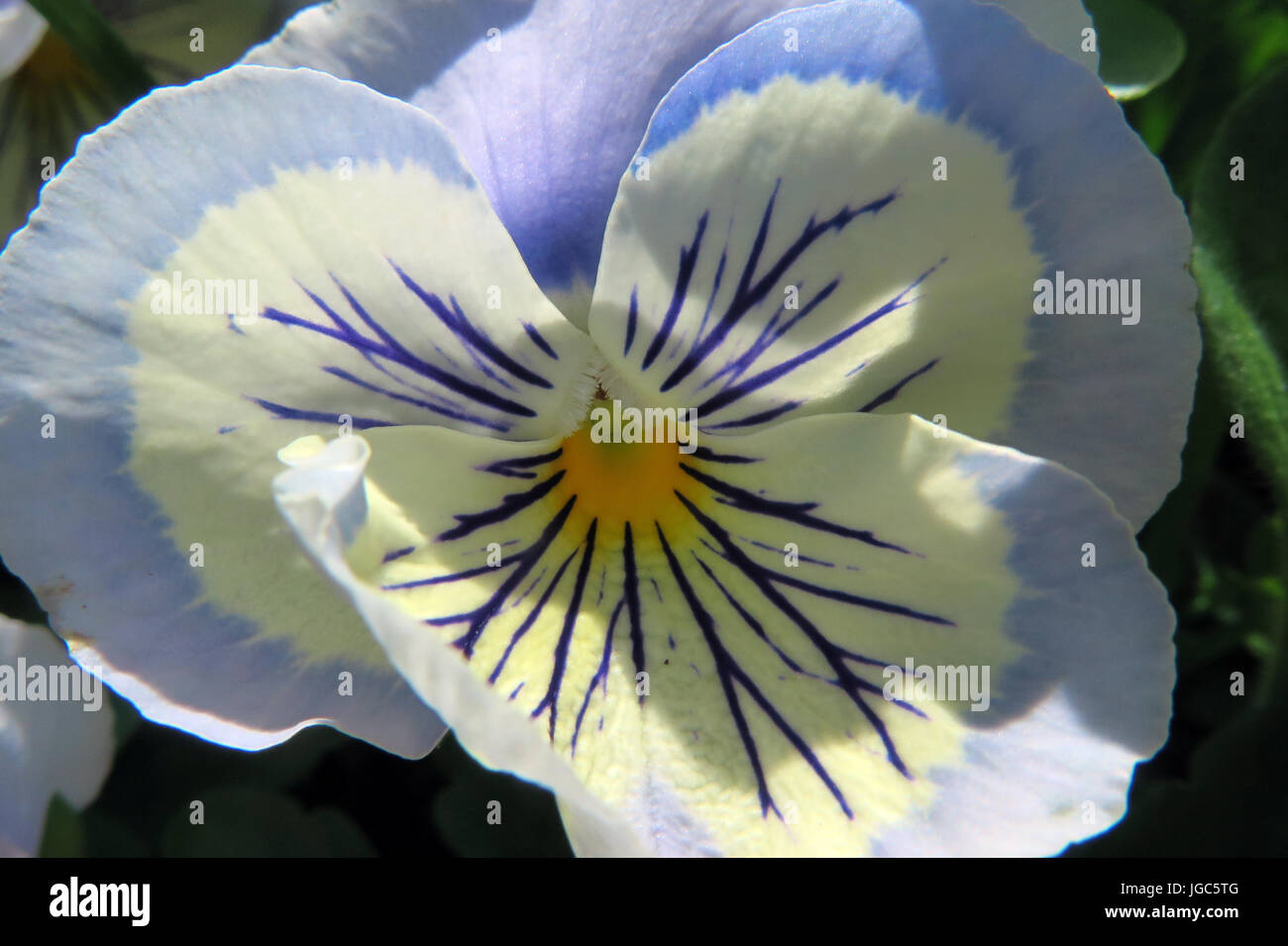 Flowering Flowers of Colour and Beauty Stock Photohttps://www.alamy.com/image-license-details/?v=1https://www.alamy.com/stock-photo-flowering-flowers-of-colour-and-beauty-147785472.html
Flowering Flowers of Colour and Beauty Stock Photohttps://www.alamy.com/image-license-details/?v=1https://www.alamy.com/stock-photo-flowering-flowers-of-colour-and-beauty-147785472.htmlRFJGC5TG–Flowering Flowers of Colour and Beauty
 Flowering Flowers of Colour and Beauty Stock Photohttps://www.alamy.com/image-license-details/?v=1https://www.alamy.com/stock-photo-flowering-flowers-of-colour-and-beauty-147785132.html
Flowering Flowers of Colour and Beauty Stock Photohttps://www.alamy.com/image-license-details/?v=1https://www.alamy.com/stock-photo-flowering-flowers-of-colour-and-beauty-147785132.htmlRFJGC5CC–Flowering Flowers of Colour and Beauty
 Plants and their ways in South Africa . Fig. 194.—Diagrams to illustrate the morphology of flowers. A, hypo-gynous ; B, perigynous ; C, epigynous. It is upon the degree of cohesion and adhesion thatBentham and Hooker make their main divisions in the classi-fication of Angiosperms. In Thalamifljrce and DisciflorcB thesepals are usually distinct and separate ; the ovary is alwayssuperior, that is the other floral parts are situated below theovary (hypogynous). In Disciflorae the receptacle is expandedinto a disk. In Calyciflone the receptacle is more or less ex-panded and hollowed, gradually bec Stock Photohttps://www.alamy.com/image-license-details/?v=1https://www.alamy.com/plants-and-their-ways-in-south-africa-fig-194diagrams-to-illustrate-the-morphology-of-flowers-a-hypo-gynous-b-perigynous-c-epigynous-it-is-upon-the-degree-of-cohesion-and-adhesion-thatbentham-and-hooker-make-their-main-divisions-in-the-classi-fication-of-angiosperms-in-thalamifljrce-and-disciflorcb-thesepals-are-usually-distinct-and-separate-the-ovary-is-alwayssuperior-that-is-the-other-floral-parts-are-situated-below-theovary-hypogynous-in-disciflorae-the-receptacle-is-expandedinto-a-disk-in-calyciflone-the-receptacle-is-more-or-less-ex-panded-and-hollowed-gradually-bec-image343273108.html
Plants and their ways in South Africa . Fig. 194.—Diagrams to illustrate the morphology of flowers. A, hypo-gynous ; B, perigynous ; C, epigynous. It is upon the degree of cohesion and adhesion thatBentham and Hooker make their main divisions in the classi-fication of Angiosperms. In Thalamifljrce and DisciflorcB thesepals are usually distinct and separate ; the ovary is alwayssuperior, that is the other floral parts are situated below theovary (hypogynous). In Disciflorae the receptacle is expandedinto a disk. In Calyciflone the receptacle is more or less ex-panded and hollowed, gradually bec Stock Photohttps://www.alamy.com/image-license-details/?v=1https://www.alamy.com/plants-and-their-ways-in-south-africa-fig-194diagrams-to-illustrate-the-morphology-of-flowers-a-hypo-gynous-b-perigynous-c-epigynous-it-is-upon-the-degree-of-cohesion-and-adhesion-thatbentham-and-hooker-make-their-main-divisions-in-the-classi-fication-of-angiosperms-in-thalamifljrce-and-disciflorcb-thesepals-are-usually-distinct-and-separate-the-ovary-is-alwayssuperior-that-is-the-other-floral-parts-are-situated-below-theovary-hypogynous-in-disciflorae-the-receptacle-is-expandedinto-a-disk-in-calyciflone-the-receptacle-is-more-or-less-ex-panded-and-hollowed-gradually-bec-image343273108.htmlRM2AXDC9T–Plants and their ways in South Africa . Fig. 194.—Diagrams to illustrate the morphology of flowers. A, hypo-gynous ; B, perigynous ; C, epigynous. It is upon the degree of cohesion and adhesion thatBentham and Hooker make their main divisions in the classi-fication of Angiosperms. In Thalamifljrce and DisciflorcB thesepals are usually distinct and separate ; the ovary is alwayssuperior, that is the other floral parts are situated below theovary (hypogynous). In Disciflorae the receptacle is expandedinto a disk. In Calyciflone the receptacle is more or less ex-panded and hollowed, gradually bec
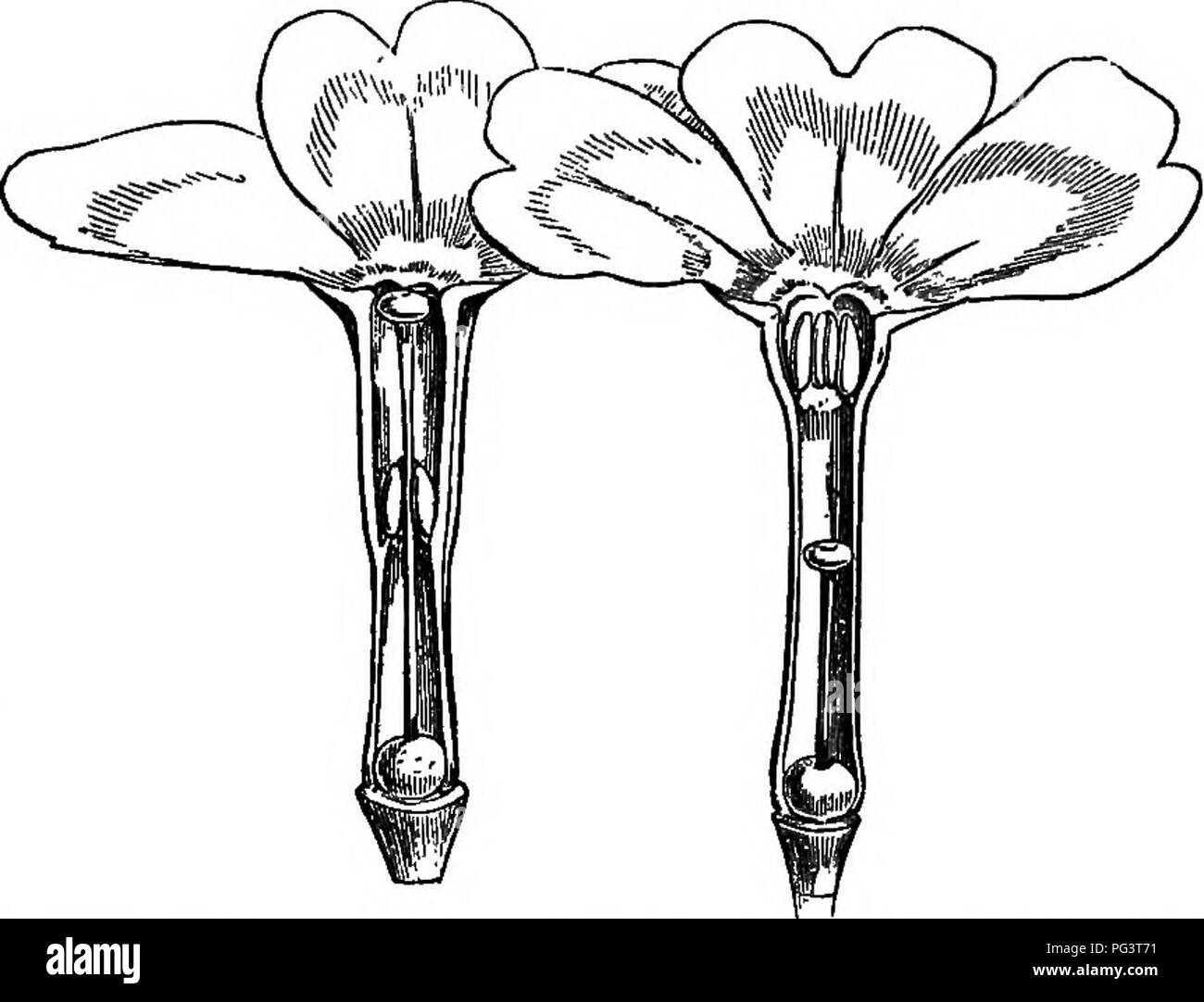 . The essentials of botany. Botany. &R0S8 ANATOMY Of FLOWERING PLANTS. XXXV rounded by the tubular sheath composed of adnate calyx, corolla, and androecium. In some nearly related cases, in addition to the structures described above as perigynous, there is a complete fusion of the calyx, corolla, and stamen bearing tube -with the gynoecium, so that the ovule-bearing portion of the latter is below the rest of the flower. The perianth and the stamens are said to be epigynous in such flowers, and the ovary is inferior. (Fig. XXXy.) Some cases of epigyny are doubtless to be re- garded as due t Stock Photohttps://www.alamy.com/image-license-details/?v=1https://www.alamy.com/the-essentials-of-botany-botany-ampr0s8-anatomy-of-flowering-plants-xxxv-rounded-by-the-tubular-sheath-composed-of-adnate-calyx-corolla-and-androecium-in-some-nearly-related-cases-in-addition-to-the-structures-described-above-as-perigynous-there-is-a-complete-fusion-of-the-calyx-corolla-and-stamen-bearing-tube-with-the-gynoecium-so-that-the-ovule-bearing-portion-of-the-latter-is-below-the-rest-of-the-flower-the-perianth-and-the-stamens-are-said-to-be-epigynous-in-such-flowers-and-the-ovary-is-inferior-fig-xxxy-some-cases-of-epigyny-are-doubtless-to-be-re-garded-as-due-t-image216443781.html
. The essentials of botany. Botany. &R0S8 ANATOMY Of FLOWERING PLANTS. XXXV rounded by the tubular sheath composed of adnate calyx, corolla, and androecium. In some nearly related cases, in addition to the structures described above as perigynous, there is a complete fusion of the calyx, corolla, and stamen bearing tube -with the gynoecium, so that the ovule-bearing portion of the latter is below the rest of the flower. The perianth and the stamens are said to be epigynous in such flowers, and the ovary is inferior. (Fig. XXXy.) Some cases of epigyny are doubtless to be re- garded as due t Stock Photohttps://www.alamy.com/image-license-details/?v=1https://www.alamy.com/the-essentials-of-botany-botany-ampr0s8-anatomy-of-flowering-plants-xxxv-rounded-by-the-tubular-sheath-composed-of-adnate-calyx-corolla-and-androecium-in-some-nearly-related-cases-in-addition-to-the-structures-described-above-as-perigynous-there-is-a-complete-fusion-of-the-calyx-corolla-and-stamen-bearing-tube-with-the-gynoecium-so-that-the-ovule-bearing-portion-of-the-latter-is-below-the-rest-of-the-flower-the-perianth-and-the-stamens-are-said-to-be-epigynous-in-such-flowers-and-the-ovary-is-inferior-fig-xxxy-some-cases-of-epigyny-are-doubtless-to-be-re-garded-as-due-t-image216443781.htmlRMPG3T71–. The essentials of botany. Botany. &R0S8 ANATOMY Of FLOWERING PLANTS. XXXV rounded by the tubular sheath composed of adnate calyx, corolla, and androecium. In some nearly related cases, in addition to the structures described above as perigynous, there is a complete fusion of the calyx, corolla, and stamen bearing tube -with the gynoecium, so that the ovule-bearing portion of the latter is below the rest of the flower. The perianth and the stamens are said to be epigynous in such flowers, and the ovary is inferior. (Fig. XXXy.) Some cases of epigyny are doubtless to be re- garded as due t
 Flowering Flowers of Colour and Beauty Stock Photohttps://www.alamy.com/image-license-details/?v=1https://www.alamy.com/stock-photo-flowering-flowers-of-colour-and-beauty-147785424.html
Flowering Flowers of Colour and Beauty Stock Photohttps://www.alamy.com/image-license-details/?v=1https://www.alamy.com/stock-photo-flowering-flowers-of-colour-and-beauty-147785424.htmlRFJGC5PT–Flowering Flowers of Colour and Beauty
![Text-book of structural and physiological botany . Fig. 2<4.—Caryophyllaceous corolla of Lychnis vespert- rtjwith corona (magnified). Fig. 255.—Longitudinal section through thecaryophyllaceous corolla of Dia?ithus (mag-nified). base of a gamosepalous [or sometimes aposepalous] calyx,[and each of the petals is often furnished with an appendageknown as the ligule^ (Fig. 251) and forming together the The External Form of Plants. 133 coronci. The rosaceous corolla (Fig. 257), consists of fivepetals which are not unguiculate, with perigynous adhesion,i.e. attached to that part of the urceolate Stock Photo Text-book of structural and physiological botany . Fig. 2<4.—Caryophyllaceous corolla of Lychnis vespert- rtjwith corona (magnified). Fig. 255.—Longitudinal section through thecaryophyllaceous corolla of Dia?ithus (mag-nified). base of a gamosepalous [or sometimes aposepalous] calyx,[and each of the petals is often furnished with an appendageknown as the ligule^ (Fig. 251) and forming together the The External Form of Plants. 133 coronci. The rosaceous corolla (Fig. 257), consists of fivepetals which are not unguiculate, with perigynous adhesion,i.e. attached to that part of the urceolate Stock Photo](https://c8.alamy.com/comp/2AXGK12/text-book-of-structural-and-physiological-botany-fig-2lt4caryophyllaceous-corolla-of-lychnis-vespert-rtjwith-corona-magnified-fig-255longitudinal-section-through-thecaryophyllaceous-corolla-of-diaithus-mag-nified-base-of-a-gamosepalous-or-sometimes-aposepalous-calyx-and-each-of-the-petals-is-often-furnished-with-an-appendageknown-as-the-ligule-fig-251-and-forming-together-the-the-external-form-of-plants-133-coronci-the-rosaceous-corolla-fig-257-consists-of-fivepetals-which-are-not-unguiculate-with-perigynous-adhesionie-attached-to-that-part-of-the-urceolate-2AXGK12.jpg) Text-book of structural and physiological botany . Fig. 2<4.—Caryophyllaceous corolla of Lychnis vespert- rtjwith corona (magnified). Fig. 255.—Longitudinal section through thecaryophyllaceous corolla of Dia?ithus (mag-nified). base of a gamosepalous [or sometimes aposepalous] calyx,[and each of the petals is often furnished with an appendageknown as the ligule^ (Fig. 251) and forming together the The External Form of Plants. 133 coronci. The rosaceous corolla (Fig. 257), consists of fivepetals which are not unguiculate, with perigynous adhesion,i.e. attached to that part of the urceolate Stock Photohttps://www.alamy.com/image-license-details/?v=1https://www.alamy.com/text-book-of-structural-and-physiological-botany-fig-2lt4caryophyllaceous-corolla-of-lychnis-vespert-rtjwith-corona-magnified-fig-255longitudinal-section-through-thecaryophyllaceous-corolla-of-diaithus-mag-nified-base-of-a-gamosepalous-or-sometimes-aposepalous-calyx-and-each-of-the-petals-is-often-furnished-with-an-appendageknown-as-the-ligule-fig-251-and-forming-together-the-the-external-form-of-plants-133-coronci-the-rosaceous-corolla-fig-257-consists-of-fivepetals-which-are-not-unguiculate-with-perigynous-adhesionie-attached-to-that-part-of-the-urceolate-image343344206.html
Text-book of structural and physiological botany . Fig. 2<4.—Caryophyllaceous corolla of Lychnis vespert- rtjwith corona (magnified). Fig. 255.—Longitudinal section through thecaryophyllaceous corolla of Dia?ithus (mag-nified). base of a gamosepalous [or sometimes aposepalous] calyx,[and each of the petals is often furnished with an appendageknown as the ligule^ (Fig. 251) and forming together the The External Form of Plants. 133 coronci. The rosaceous corolla (Fig. 257), consists of fivepetals which are not unguiculate, with perigynous adhesion,i.e. attached to that part of the urceolate Stock Photohttps://www.alamy.com/image-license-details/?v=1https://www.alamy.com/text-book-of-structural-and-physiological-botany-fig-2lt4caryophyllaceous-corolla-of-lychnis-vespert-rtjwith-corona-magnified-fig-255longitudinal-section-through-thecaryophyllaceous-corolla-of-diaithus-mag-nified-base-of-a-gamosepalous-or-sometimes-aposepalous-calyx-and-each-of-the-petals-is-often-furnished-with-an-appendageknown-as-the-ligule-fig-251-and-forming-together-the-the-external-form-of-plants-133-coronci-the-rosaceous-corolla-fig-257-consists-of-fivepetals-which-are-not-unguiculate-with-perigynous-adhesionie-attached-to-that-part-of-the-urceolate-image343344206.htmlRM2AXGK12–Text-book of structural and physiological botany . Fig. 2<4.—Caryophyllaceous corolla of Lychnis vespert- rtjwith corona (magnified). Fig. 255.—Longitudinal section through thecaryophyllaceous corolla of Dia?ithus (mag-nified). base of a gamosepalous [or sometimes aposepalous] calyx,[and each of the petals is often furnished with an appendageknown as the ligule^ (Fig. 251) and forming together the The External Form of Plants. 133 coronci. The rosaceous corolla (Fig. 257), consists of fivepetals which are not unguiculate, with perigynous adhesion,i.e. attached to that part of the urceolate
 . The natural history of plants. Botany. LYTHBARIACEjE. 441 (iampanulate receptacle, thin and membranous, is marginally con- tinuous with the six triangular valvate lobes of the calyx, glandular at the summit; in the intervals are an equal number of accessory teeth, the origin of which is the same as in Salicaria. To these teeth correspond an equal number of small obtuse Ammannia [FepUs) portuU. very caducous petals, which are sometimes entirely ab- sent. Much lower, on the internal surface of the re- ceptacle, are inserted six alternipetalous perigynous stamens formed, each, of an enclosed fi Stock Photohttps://www.alamy.com/image-license-details/?v=1https://www.alamy.com/the-natural-history-of-plants-botany-lythbariaceje-441-iampanulate-receptacle-thin-and-membranous-is-marginally-con-tinuous-with-the-six-triangular-valvate-lobes-of-the-calyx-glandular-at-the-summit-in-the-intervals-are-an-equal-number-of-accessory-teeth-the-origin-of-which-is-the-same-as-in-salicaria-to-these-teeth-correspond-an-equal-number-of-small-obtuse-ammannia-fepus-portuu-very-caducous-petals-which-are-sometimes-entirely-ab-sent-much-lower-on-the-internal-surface-of-the-re-ceptacle-are-inserted-six-alternipetalous-perigynous-stamens-formed-each-of-an-enclosed-fi-image216400794.html
. The natural history of plants. Botany. LYTHBARIACEjE. 441 (iampanulate receptacle, thin and membranous, is marginally con- tinuous with the six triangular valvate lobes of the calyx, glandular at the summit; in the intervals are an equal number of accessory teeth, the origin of which is the same as in Salicaria. To these teeth correspond an equal number of small obtuse Ammannia [FepUs) portuU. very caducous petals, which are sometimes entirely ab- sent. Much lower, on the internal surface of the re- ceptacle, are inserted six alternipetalous perigynous stamens formed, each, of an enclosed fi Stock Photohttps://www.alamy.com/image-license-details/?v=1https://www.alamy.com/the-natural-history-of-plants-botany-lythbariaceje-441-iampanulate-receptacle-thin-and-membranous-is-marginally-con-tinuous-with-the-six-triangular-valvate-lobes-of-the-calyx-glandular-at-the-summit-in-the-intervals-are-an-equal-number-of-accessory-teeth-the-origin-of-which-is-the-same-as-in-salicaria-to-these-teeth-correspond-an-equal-number-of-small-obtuse-ammannia-fepus-portuu-very-caducous-petals-which-are-sometimes-entirely-ab-sent-much-lower-on-the-internal-surface-of-the-re-ceptacle-are-inserted-six-alternipetalous-perigynous-stamens-formed-each-of-an-enclosed-fi-image216400794.htmlRMPG1WBP–. The natural history of plants. Botany. LYTHBARIACEjE. 441 (iampanulate receptacle, thin and membranous, is marginally con- tinuous with the six triangular valvate lobes of the calyx, glandular at the summit; in the intervals are an equal number of accessory teeth, the origin of which is the same as in Salicaria. To these teeth correspond an equal number of small obtuse Ammannia [FepUs) portuU. very caducous petals, which are sometimes entirely ab- sent. Much lower, on the internal surface of the re- ceptacle, are inserted six alternipetalous perigynous stamens formed, each, of an enclosed fi
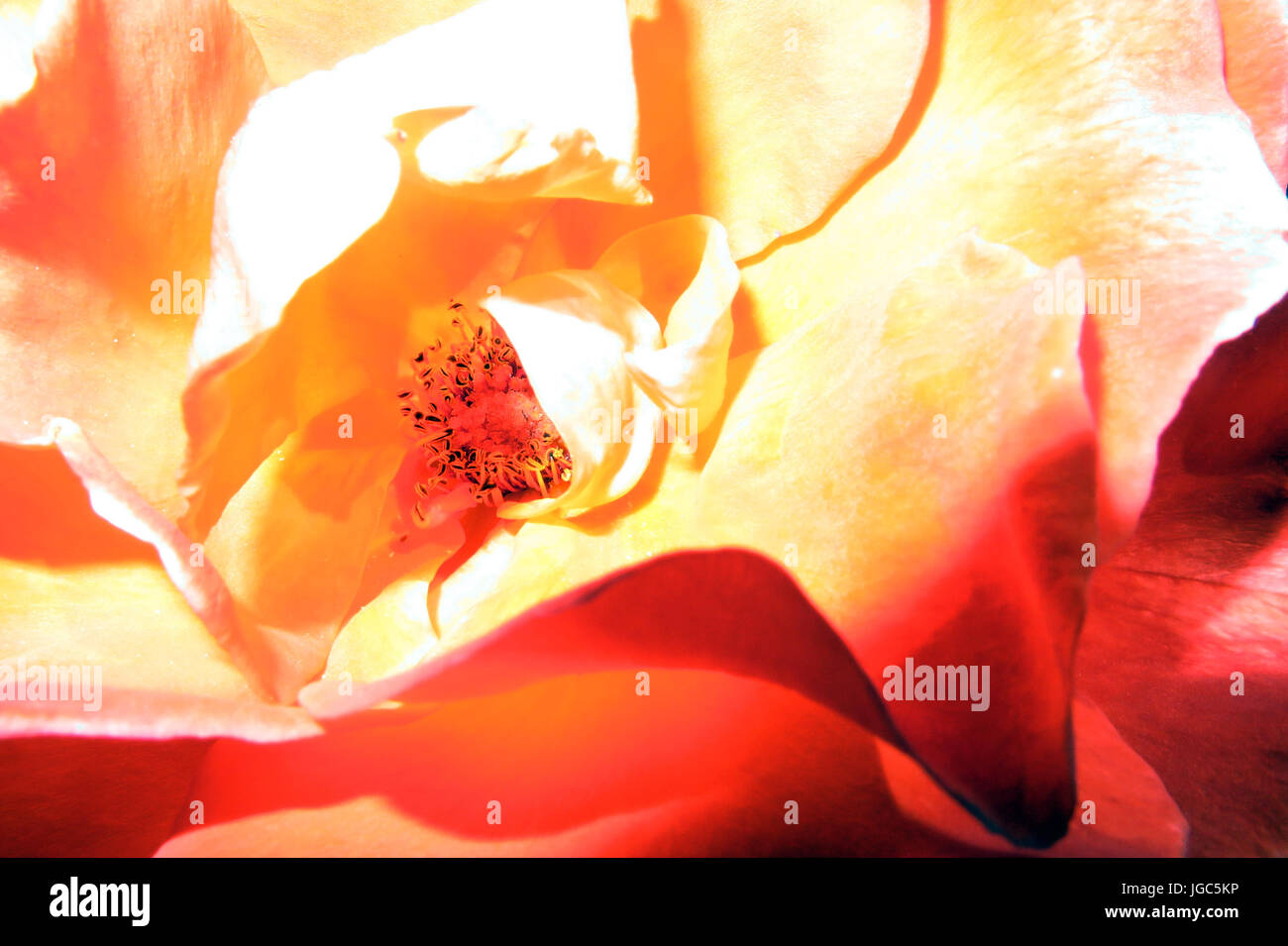 Flowering Flowers of Colour and Beauty Stock Photohttps://www.alamy.com/image-license-details/?v=1https://www.alamy.com/stock-photo-flowering-flowers-of-colour-and-beauty-147785338.html
Flowering Flowers of Colour and Beauty Stock Photohttps://www.alamy.com/image-license-details/?v=1https://www.alamy.com/stock-photo-flowering-flowers-of-colour-and-beauty-147785338.htmlRFJGC5KP–Flowering Flowers of Colour and Beauty
 . Lessons with plants. Suggestions for seeing and interpreting some of the common forms of vegetation. Pig. 242. Proliferous fruit ofstrawberry. upon the bush when the raspberry is picked, isthe receptacle. The pupil should now explain themorphology of the blackberry. 299. The pupil will now be in-terested in peaches, apricots, plumsand cherries. He has seen thestructure of the flower in Figs. 47,48, 144. There is a single superiorpistil. The petals and stamensare perigynous, and both fall soonafter fertilization has taken place.The gamosepalous calyx (or re-ceptacle-tube, 170) persists for at Stock Photohttps://www.alamy.com/image-license-details/?v=1https://www.alamy.com/lessons-with-plants-suggestions-for-seeing-and-interpreting-some-of-the-common-forms-of-vegetation-pig-242-proliferous-fruit-ofstrawberry-upon-the-bush-when-the-raspberry-is-picked-isthe-receptacle-the-pupil-should-now-explain-themorphology-of-the-blackberry-299-the-pupil-will-now-be-in-terested-in-peaches-apricots-plumsand-cherries-he-has-seen-thestructure-of-the-flower-in-figs-4748-144-there-is-a-single-superiorpistil-the-petals-and-stamensare-perigynous-and-both-fall-soonafter-fertilization-has-taken-placethe-gamosepalous-calyx-or-re-ceptacle-tube-170-persists-for-at-image336710009.html
. Lessons with plants. Suggestions for seeing and interpreting some of the common forms of vegetation. Pig. 242. Proliferous fruit ofstrawberry. upon the bush when the raspberry is picked, isthe receptacle. The pupil should now explain themorphology of the blackberry. 299. The pupil will now be in-terested in peaches, apricots, plumsand cherries. He has seen thestructure of the flower in Figs. 47,48, 144. There is a single superiorpistil. The petals and stamensare perigynous, and both fall soonafter fertilization has taken place.The gamosepalous calyx (or re-ceptacle-tube, 170) persists for at Stock Photohttps://www.alamy.com/image-license-details/?v=1https://www.alamy.com/lessons-with-plants-suggestions-for-seeing-and-interpreting-some-of-the-common-forms-of-vegetation-pig-242-proliferous-fruit-ofstrawberry-upon-the-bush-when-the-raspberry-is-picked-isthe-receptacle-the-pupil-should-now-explain-themorphology-of-the-blackberry-299-the-pupil-will-now-be-in-terested-in-peaches-apricots-plumsand-cherries-he-has-seen-thestructure-of-the-flower-in-figs-4748-144-there-is-a-single-superiorpistil-the-petals-and-stamensare-perigynous-and-both-fall-soonafter-fertilization-has-taken-placethe-gamosepalous-calyx-or-re-ceptacle-tube-170-persists-for-at-image336710009.htmlRM2AFPD1D–. Lessons with plants. Suggestions for seeing and interpreting some of the common forms of vegetation. Pig. 242. Proliferous fruit ofstrawberry. upon the bush when the raspberry is picked, isthe receptacle. The pupil should now explain themorphology of the blackberry. 299. The pupil will now be in-terested in peaches, apricots, plumsand cherries. He has seen thestructure of the flower in Figs. 47,48, 144. There is a single superiorpistil. The petals and stamensare perigynous, and both fall soonafter fertilization has taken place.The gamosepalous calyx (or re-ceptacle-tube, 170) persists for at
 . The natural history of plants. Botany. 108 NATURAL EISTOBT OF PLANTS. Symenaa {Trachylobimn) verrucosa. or more pairs of unsymmetrical leaflets, and caducous ill-developed stipules. The flowers form usually terminal shortly pedicellate racemes, simple or branched. HymencBd}^ has the floral symmetry of Schotia or Humboldtia. Its coriaceous obconical receptacle, lined by a thick disk, bears four slightly imbricate sepals, five subequal imbricate petals, and ten free perigynous stamens, five alternate with the petals, and five shorter superposed to them. The gynaeceum, inserted laterally at ,a Stock Photohttps://www.alamy.com/image-license-details/?v=1https://www.alamy.com/the-natural-history-of-plants-botany-108-natural-eistobt-of-plants-symenaa-trachylobimn-verrucosa-or-more-pairs-of-unsymmetrical-leaflets-and-caducous-ill-developed-stipules-the-flowers-form-usually-terminal-shortly-pedicellate-racemes-simple-or-branched-hymencbd-has-the-floral-symmetry-of-schotia-or-humboldtia-its-coriaceous-obconical-receptacle-lined-by-a-thick-disk-bears-four-slightly-imbricate-sepals-five-subequal-imbricate-petals-and-ten-free-perigynous-stamens-five-alternate-with-the-petals-and-five-shorter-superposed-to-them-the-gynaeceum-inserted-laterally-at-a-image216423401.html
. The natural history of plants. Botany. 108 NATURAL EISTOBT OF PLANTS. Symenaa {Trachylobimn) verrucosa. or more pairs of unsymmetrical leaflets, and caducous ill-developed stipules. The flowers form usually terminal shortly pedicellate racemes, simple or branched. HymencBd}^ has the floral symmetry of Schotia or Humboldtia. Its coriaceous obconical receptacle, lined by a thick disk, bears four slightly imbricate sepals, five subequal imbricate petals, and ten free perigynous stamens, five alternate with the petals, and five shorter superposed to them. The gynaeceum, inserted laterally at ,a Stock Photohttps://www.alamy.com/image-license-details/?v=1https://www.alamy.com/the-natural-history-of-plants-botany-108-natural-eistobt-of-plants-symenaa-trachylobimn-verrucosa-or-more-pairs-of-unsymmetrical-leaflets-and-caducous-ill-developed-stipules-the-flowers-form-usually-terminal-shortly-pedicellate-racemes-simple-or-branched-hymencbd-has-the-floral-symmetry-of-schotia-or-humboldtia-its-coriaceous-obconical-receptacle-lined-by-a-thick-disk-bears-four-slightly-imbricate-sepals-five-subequal-imbricate-petals-and-ten-free-perigynous-stamens-five-alternate-with-the-petals-and-five-shorter-superposed-to-them-the-gynaeceum-inserted-laterally-at-a-image216423401.htmlRMPG2X75–. The natural history of plants. Botany. 108 NATURAL EISTOBT OF PLANTS. Symenaa {Trachylobimn) verrucosa. or more pairs of unsymmetrical leaflets, and caducous ill-developed stipules. The flowers form usually terminal shortly pedicellate racemes, simple or branched. HymencBd}^ has the floral symmetry of Schotia or Humboldtia. Its coriaceous obconical receptacle, lined by a thick disk, bears four slightly imbricate sepals, five subequal imbricate petals, and ten free perigynous stamens, five alternate with the petals, and five shorter superposed to them. The gynaeceum, inserted laterally at ,a
 Flowering Flowers of Colour and Beauty Stock Photohttps://www.alamy.com/image-license-details/?v=1https://www.alamy.com/stock-photo-flowering-flowers-of-colour-and-beauty-147785325.html
Flowering Flowers of Colour and Beauty Stock Photohttps://www.alamy.com/image-license-details/?v=1https://www.alamy.com/stock-photo-flowering-flowers-of-colour-and-beauty-147785325.htmlRFJGC5K9–Flowering Flowers of Colour and Beauty
 . Lessons with plants. Suggestions for seeing and interpreting some of the common forms of vegetation. 256 ZESSONS WITE PLANTS. Pig. 242. Proliferous fruit ofstrawberry. upon the bush when the raspberry is picked, isthe receptacle. The pupil should now explain themorphology of the blackberry. 299. The pupil will now be in-terested in peaches, apricots, plumsand cherries. He has seen thestructure of the flower in Figs. 47,48, 144. There is a single superiorpistil. The petals and stamensare perigynous, and both fall soonafter fertilization has taken place.The gamosepalous calyx (or re-ceptacle-t Stock Photohttps://www.alamy.com/image-license-details/?v=1https://www.alamy.com/lessons-with-plants-suggestions-for-seeing-and-interpreting-some-of-the-common-forms-of-vegetation-256-zessons-wite-plants-pig-242-proliferous-fruit-ofstrawberry-upon-the-bush-when-the-raspberry-is-picked-isthe-receptacle-the-pupil-should-now-explain-themorphology-of-the-blackberry-299-the-pupil-will-now-be-in-terested-in-peaches-apricots-plumsand-cherries-he-has-seen-thestructure-of-the-flower-in-figs-4748-144-there-is-a-single-superiorpistil-the-petals-and-stamensare-perigynous-and-both-fall-soonafter-fertilization-has-taken-placethe-gamosepalous-calyx-or-re-ceptacle-t-image336710181.html
. Lessons with plants. Suggestions for seeing and interpreting some of the common forms of vegetation. 256 ZESSONS WITE PLANTS. Pig. 242. Proliferous fruit ofstrawberry. upon the bush when the raspberry is picked, isthe receptacle. The pupil should now explain themorphology of the blackberry. 299. The pupil will now be in-terested in peaches, apricots, plumsand cherries. He has seen thestructure of the flower in Figs. 47,48, 144. There is a single superiorpistil. The petals and stamensare perigynous, and both fall soonafter fertilization has taken place.The gamosepalous calyx (or re-ceptacle-t Stock Photohttps://www.alamy.com/image-license-details/?v=1https://www.alamy.com/lessons-with-plants-suggestions-for-seeing-and-interpreting-some-of-the-common-forms-of-vegetation-256-zessons-wite-plants-pig-242-proliferous-fruit-ofstrawberry-upon-the-bush-when-the-raspberry-is-picked-isthe-receptacle-the-pupil-should-now-explain-themorphology-of-the-blackberry-299-the-pupil-will-now-be-in-terested-in-peaches-apricots-plumsand-cherries-he-has-seen-thestructure-of-the-flower-in-figs-4748-144-there-is-a-single-superiorpistil-the-petals-and-stamensare-perigynous-and-both-fall-soonafter-fertilization-has-taken-placethe-gamosepalous-calyx-or-re-ceptacle-t-image336710181.htmlRM2AFPD7H–. Lessons with plants. Suggestions for seeing and interpreting some of the common forms of vegetation. 256 ZESSONS WITE PLANTS. Pig. 242. Proliferous fruit ofstrawberry. upon the bush when the raspberry is picked, isthe receptacle. The pupil should now explain themorphology of the blackberry. 299. The pupil will now be in-terested in peaches, apricots, plumsand cherries. He has seen thestructure of the flower in Figs. 47,48, 144. There is a single superiorpistil. The petals and stamensare perigynous, and both fall soonafter fertilization has taken place.The gamosepalous calyx (or re-ceptacle-t
 . Botany for agricultural students . Botany. 16 FLOWERS described as superior. Such flowers are hypogynous. In some flowers, as in the Peach shown in Figure 7, the calyx, corolla, and stamens are at- tached to the rim of a cup- like structure surrounding the ovary. In this case the flower is perigynous, and the ovary is described as half inferior. To which of the above classes does the Apple flower belong? In Figure 11 the three positions of the perianth and stamens in reference to the ovary are shown for comparison. Some Particular Forms of Flowers That there are numerous differences among fl Stock Photohttps://www.alamy.com/image-license-details/?v=1https://www.alamy.com/botany-for-agricultural-students-botany-16-flowers-described-as-superior-such-flowers-are-hypogynous-in-some-flowers-as-in-the-peach-shown-in-figure-7-the-calyx-corolla-and-stamens-are-at-tached-to-the-rim-of-a-cup-like-structure-surrounding-the-ovary-in-this-case-the-flower-is-perigynous-and-the-ovary-is-described-as-half-inferior-to-which-of-the-above-classes-does-the-apple-flower-belong-in-figure-11-the-three-positions-of-the-perianth-and-stamens-in-reference-to-the-ovary-are-shown-for-comparison-some-particular-forms-of-flowers-that-there-are-numerous-differences-among-fl-image216449390.html
. Botany for agricultural students . Botany. 16 FLOWERS described as superior. Such flowers are hypogynous. In some flowers, as in the Peach shown in Figure 7, the calyx, corolla, and stamens are at- tached to the rim of a cup- like structure surrounding the ovary. In this case the flower is perigynous, and the ovary is described as half inferior. To which of the above classes does the Apple flower belong? In Figure 11 the three positions of the perianth and stamens in reference to the ovary are shown for comparison. Some Particular Forms of Flowers That there are numerous differences among fl Stock Photohttps://www.alamy.com/image-license-details/?v=1https://www.alamy.com/botany-for-agricultural-students-botany-16-flowers-described-as-superior-such-flowers-are-hypogynous-in-some-flowers-as-in-the-peach-shown-in-figure-7-the-calyx-corolla-and-stamens-are-at-tached-to-the-rim-of-a-cup-like-structure-surrounding-the-ovary-in-this-case-the-flower-is-perigynous-and-the-ovary-is-described-as-half-inferior-to-which-of-the-above-classes-does-the-apple-flower-belong-in-figure-11-the-three-positions-of-the-perianth-and-stamens-in-reference-to-the-ovary-are-shown-for-comparison-some-particular-forms-of-flowers-that-there-are-numerous-differences-among-fl-image216449390.htmlRMPG43BA–. Botany for agricultural students . Botany. 16 FLOWERS described as superior. Such flowers are hypogynous. In some flowers, as in the Peach shown in Figure 7, the calyx, corolla, and stamens are at- tached to the rim of a cup- like structure surrounding the ovary. In this case the flower is perigynous, and the ovary is described as half inferior. To which of the above classes does the Apple flower belong? In Figure 11 the three positions of the perianth and stamens in reference to the ovary are shown for comparison. Some Particular Forms of Flowers That there are numerous differences among fl
 Flowering Flowers of Colour and Beauty Stock Photohttps://www.alamy.com/image-license-details/?v=1https://www.alamy.com/stock-photo-flowering-flowers-of-colour-and-beauty-147785200.html
Flowering Flowers of Colour and Beauty Stock Photohttps://www.alamy.com/image-license-details/?v=1https://www.alamy.com/stock-photo-flowering-flowers-of-colour-and-beauty-147785200.htmlRFJGC5ET–Flowering Flowers of Colour and Beauty
 Text-book of structural and physiological botany . la, and stamens. rounds the free pistil, as in the rose; the calyx, corolla, andstamens then having a half-superior oxperigynous ^ insertion. ^ [Practically the term perigynous is used in English descriptive bo-tany with reference to the stamens to express their union to the calyx ;when attached to the corolla they are epipetaloiis ; epigynous whenattached to the upper part of the ovary. An inferior ovary is alwaysthe result of the adhesion to the wall of the ovary of a part or the w^hole I z 116 Stnicttcral and Physiological Botany, An additi Stock Photohttps://www.alamy.com/image-license-details/?v=1https://www.alamy.com/text-book-of-structural-and-physiological-botany-la-and-stamens-rounds-the-free-pistil-as-in-the-rose-the-calyx-corolla-andstamens-then-having-a-half-superior-oxperigynous-insertion-practically-the-term-perigynous-is-used-in-english-descriptive-bo-tany-with-reference-to-the-stamens-to-express-their-union-to-the-calyx-when-attached-to-the-corolla-they-are-epipetaloiis-epigynous-whenattached-to-the-upper-part-of-the-ovary-an-inferior-ovary-is-alwaysthe-result-of-the-adhesion-to-the-wall-of-the-ovary-of-a-part-or-the-whole-i-z-116-stnicttcral-and-physiological-botany-an-additi-image343352521.html
Text-book of structural and physiological botany . la, and stamens. rounds the free pistil, as in the rose; the calyx, corolla, andstamens then having a half-superior oxperigynous ^ insertion. ^ [Practically the term perigynous is used in English descriptive bo-tany with reference to the stamens to express their union to the calyx ;when attached to the corolla they are epipetaloiis ; epigynous whenattached to the upper part of the ovary. An inferior ovary is alwaysthe result of the adhesion to the wall of the ovary of a part or the w^hole I z 116 Stnicttcral and Physiological Botany, An additi Stock Photohttps://www.alamy.com/image-license-details/?v=1https://www.alamy.com/text-book-of-structural-and-physiological-botany-la-and-stamens-rounds-the-free-pistil-as-in-the-rose-the-calyx-corolla-andstamens-then-having-a-half-superior-oxperigynous-insertion-practically-the-term-perigynous-is-used-in-english-descriptive-bo-tany-with-reference-to-the-stamens-to-express-their-union-to-the-calyx-when-attached-to-the-corolla-they-are-epipetaloiis-epigynous-whenattached-to-the-upper-part-of-the-ovary-an-inferior-ovary-is-alwaysthe-result-of-the-adhesion-to-the-wall-of-the-ovary-of-a-part-or-the-whole-i-z-116-stnicttcral-and-physiological-botany-an-additi-image343352521.htmlRM2AXH1J1–Text-book of structural and physiological botany . la, and stamens. rounds the free pistil, as in the rose; the calyx, corolla, andstamens then having a half-superior oxperigynous ^ insertion. ^ [Practically the term perigynous is used in English descriptive bo-tany with reference to the stamens to express their union to the calyx ;when attached to the corolla they are epipetaloiis ; epigynous whenattached to the upper part of the ovary. An inferior ovary is alwaysthe result of the adhesion to the wall of the ovary of a part or the w^hole I z 116 Stnicttcral and Physiological Botany, An additi
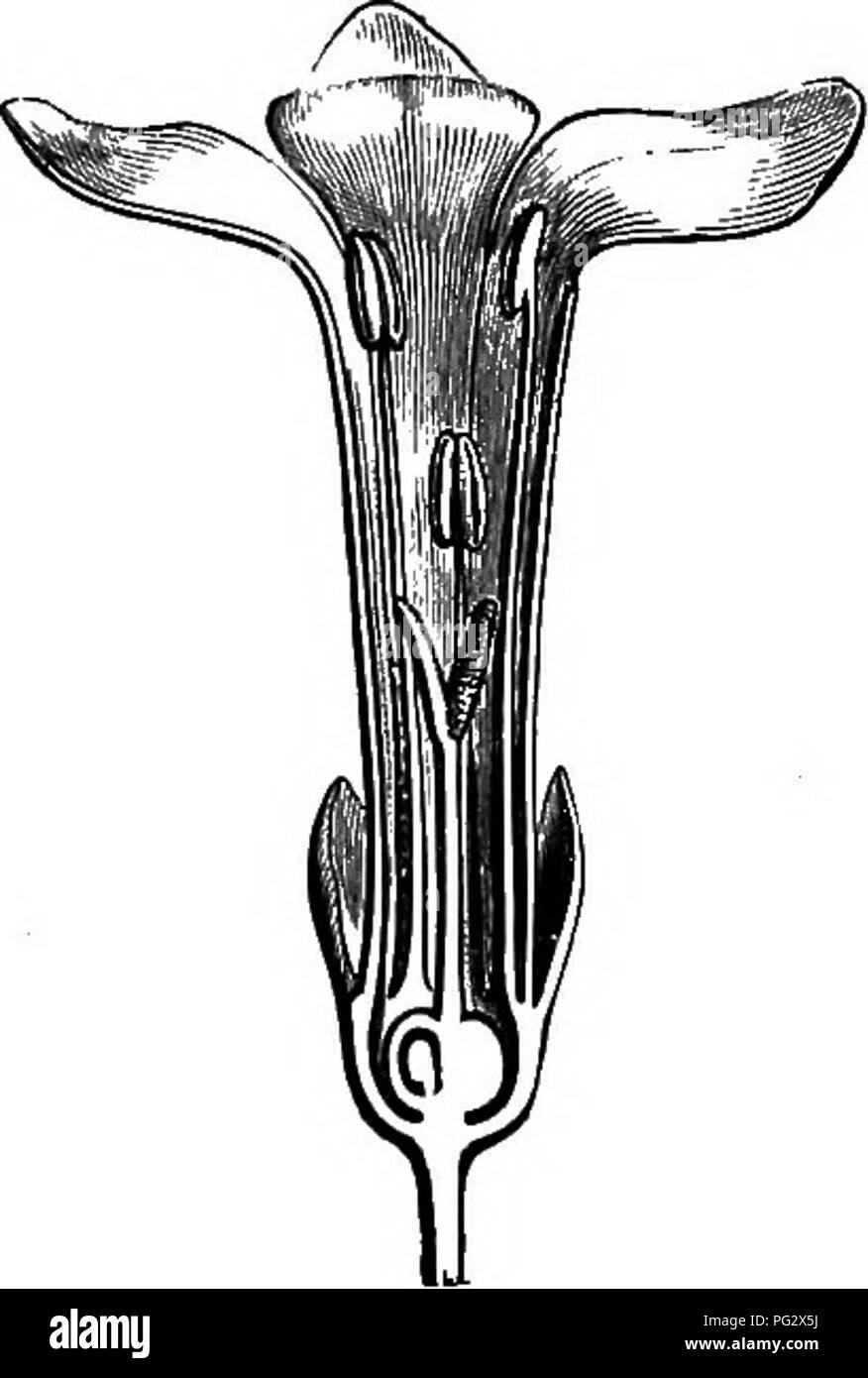 . The natural history of plants. Botany. NATUBAL HISTORY OF PLANTS. Stackhousia monogyna. II? STACKHOTJSIA SEKIES. StacJchousia^ (fig. 8-11), wMch has been made a distinct family, has regular and hermaphrodite flowers. The receptacle has the form of a hemispheric cup, the cavity of which is covered with a glandular disk. Outside the more â or less salient or often but slightly developed edges of this disk, the lips of the receptacle give insertion to the perianth and to a perigynous androecium, viz., to five imbricated sepals and five petals alternating with them, much longer exserted, free an Stock Photohttps://www.alamy.com/image-license-details/?v=1https://www.alamy.com/the-natural-history-of-plants-botany-natubal-history-of-plants-stackhousia-monogyna-ii-stackhotjsia-sekies-stacjchousia-fig-8-11-wmch-has-been-made-a-distinct-family-has-regular-and-hermaphrodite-flowers-the-receptacle-has-the-form-of-a-hemispheric-cup-the-cavity-of-which-is-covered-with-a-glandular-disk-outside-the-more-or-less-salient-or-often-but-slightly-developed-edges-of-this-disk-the-lips-of-the-receptacle-give-insertion-to-the-perianth-and-to-a-perigynous-androecium-viz-to-five-imbricated-sepals-and-five-petals-alternating-with-them-much-longer-exserted-free-an-image216423358.html
. The natural history of plants. Botany. NATUBAL HISTORY OF PLANTS. Stackhousia monogyna. II? STACKHOTJSIA SEKIES. StacJchousia^ (fig. 8-11), wMch has been made a distinct family, has regular and hermaphrodite flowers. The receptacle has the form of a hemispheric cup, the cavity of which is covered with a glandular disk. Outside the more â or less salient or often but slightly developed edges of this disk, the lips of the receptacle give insertion to the perianth and to a perigynous androecium, viz., to five imbricated sepals and five petals alternating with them, much longer exserted, free an Stock Photohttps://www.alamy.com/image-license-details/?v=1https://www.alamy.com/the-natural-history-of-plants-botany-natubal-history-of-plants-stackhousia-monogyna-ii-stackhotjsia-sekies-stacjchousia-fig-8-11-wmch-has-been-made-a-distinct-family-has-regular-and-hermaphrodite-flowers-the-receptacle-has-the-form-of-a-hemispheric-cup-the-cavity-of-which-is-covered-with-a-glandular-disk-outside-the-more-or-less-salient-or-often-but-slightly-developed-edges-of-this-disk-the-lips-of-the-receptacle-give-insertion-to-the-perianth-and-to-a-perigynous-androecium-viz-to-five-imbricated-sepals-and-five-petals-alternating-with-them-much-longer-exserted-free-an-image216423358.htmlRMPG2X5J–. The natural history of plants. Botany. NATUBAL HISTORY OF PLANTS. Stackhousia monogyna. II? STACKHOTJSIA SEKIES. StacJchousia^ (fig. 8-11), wMch has been made a distinct family, has regular and hermaphrodite flowers. The receptacle has the form of a hemispheric cup, the cavity of which is covered with a glandular disk. Outside the more â or less salient or often but slightly developed edges of this disk, the lips of the receptacle give insertion to the perianth and to a perigynous androecium, viz., to five imbricated sepals and five petals alternating with them, much longer exserted, free an
 Flowering Flowers of Colour and Beauty Stock Photohttps://www.alamy.com/image-license-details/?v=1https://www.alamy.com/stock-photo-flowering-flowers-of-colour-and-beauty-147784950.html
Flowering Flowers of Colour and Beauty Stock Photohttps://www.alamy.com/image-license-details/?v=1https://www.alamy.com/stock-photo-flowering-flowers-of-colour-and-beauty-147784950.htmlRFJGC55X–Flowering Flowers of Colour and Beauty
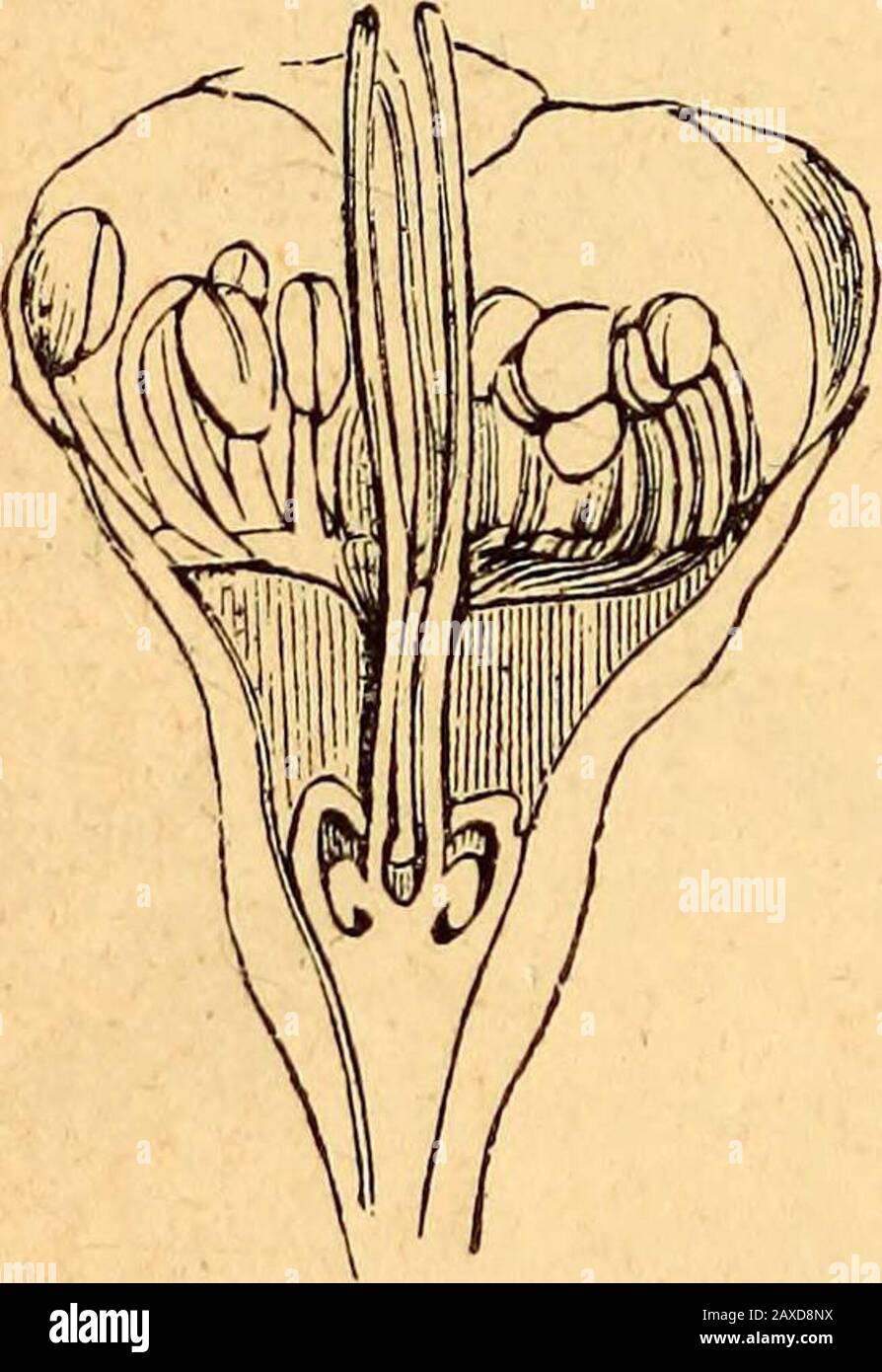 Text-book of structural and physiological botany . s.X Gum arable is obtained fromAcacia Seyal^ tortilis, and Ehrenbergiana, all natives of tropical Africa ;* terra japonica, or catechu, is the sap of Acacia Catechu of Bengaland Coromandel. Order 2. RosACEi^. The leaves are stipulate ; the calyx regular andusually gamosepalous and 5-partite, the odd section superior; the co-rolla regular ; the petals distinct, attached to the margin of the calyx,and equal in number with its teeth ; the stamens perigynous, usually manytimes the number of the petals, and bent inwards in vernation ; the ovarysome Stock Photohttps://www.alamy.com/image-license-details/?v=1https://www.alamy.com/text-book-of-structural-and-physiological-botany-sx-gum-arable-is-obtained-fromacacia-seyal-tortilis-and-ehrenbergiana-all-natives-of-tropical-africa-terra-japonica-or-catechu-is-the-sap-of-acacia-catechu-of-bengaland-coromandel-order-2-rosacei-the-leaves-are-stipulate-the-calyx-regular-andusually-gamosepalous-and-5-partite-the-odd-section-superior-the-co-rolla-regular-the-petals-distinct-attached-to-the-margin-of-the-calyxand-equal-in-number-with-its-teeth-the-stamens-perigynous-usually-manytimes-the-number-of-the-petals-and-bent-inwards-in-vernation-the-ovarysome-image343270310.html
Text-book of structural and physiological botany . s.X Gum arable is obtained fromAcacia Seyal^ tortilis, and Ehrenbergiana, all natives of tropical Africa ;* terra japonica, or catechu, is the sap of Acacia Catechu of Bengaland Coromandel. Order 2. RosACEi^. The leaves are stipulate ; the calyx regular andusually gamosepalous and 5-partite, the odd section superior; the co-rolla regular ; the petals distinct, attached to the margin of the calyx,and equal in number with its teeth ; the stamens perigynous, usually manytimes the number of the petals, and bent inwards in vernation ; the ovarysome Stock Photohttps://www.alamy.com/image-license-details/?v=1https://www.alamy.com/text-book-of-structural-and-physiological-botany-sx-gum-arable-is-obtained-fromacacia-seyal-tortilis-and-ehrenbergiana-all-natives-of-tropical-africa-terra-japonica-or-catechu-is-the-sap-of-acacia-catechu-of-bengaland-coromandel-order-2-rosacei-the-leaves-are-stipulate-the-calyx-regular-andusually-gamosepalous-and-5-partite-the-odd-section-superior-the-co-rolla-regular-the-petals-distinct-attached-to-the-margin-of-the-calyxand-equal-in-number-with-its-teeth-the-stamens-perigynous-usually-manytimes-the-number-of-the-petals-and-bent-inwards-in-vernation-the-ovarysome-image343270310.htmlRM2AXD8NX–Text-book of structural and physiological botany . s.X Gum arable is obtained fromAcacia Seyal^ tortilis, and Ehrenbergiana, all natives of tropical Africa ;* terra japonica, or catechu, is the sap of Acacia Catechu of Bengaland Coromandel. Order 2. RosACEi^. The leaves are stipulate ; the calyx regular andusually gamosepalous and 5-partite, the odd section superior; the co-rolla regular ; the petals distinct, attached to the margin of the calyx,and equal in number with its teeth ; the stamens perigynous, usually manytimes the number of the petals, and bent inwards in vernation ; the ovarysome
 . The botany of crop plants : a text and reference book. Botany, Economic. CHAPTER XXXI. RUTACE^ (Rue Family) Description.-—This family is represented by trees, shrubs, and herbs. The leaves are alternate or opposite, simple or compound, exstipulate, and glandular-dotted. The glands, which appear as translucent dots, are internal. They vary somewhat in size and shape. The flowers (Figs. 200 and 201) are soKtary or in small axillary or terminal cymes. The sepals are four to five in number, but sometimes absent. There are as many petals as sepals, and they are either hjrpogynous or perigynous. T Stock Photohttps://www.alamy.com/image-license-details/?v=1https://www.alamy.com/the-botany-of-crop-plants-a-text-and-reference-book-botany-economic-chapter-xxxi-rutace-rue-family-description-this-family-is-represented-by-trees-shrubs-and-herbs-the-leaves-are-alternate-or-opposite-simple-or-compound-exstipulate-and-glandular-dotted-the-glands-which-appear-as-translucent-dots-are-internal-they-vary-somewhat-in-size-and-shape-the-flowers-figs-200-and-201-are-soktary-or-in-small-axillary-or-terminal-cymes-the-sepals-are-four-to-five-in-number-but-sometimes-absent-there-are-as-many-petals-as-sepals-and-they-are-either-hjrpogynous-or-perigynous-t-image216390067.html
. The botany of crop plants : a text and reference book. Botany, Economic. CHAPTER XXXI. RUTACE^ (Rue Family) Description.-—This family is represented by trees, shrubs, and herbs. The leaves are alternate or opposite, simple or compound, exstipulate, and glandular-dotted. The glands, which appear as translucent dots, are internal. They vary somewhat in size and shape. The flowers (Figs. 200 and 201) are soKtary or in small axillary or terminal cymes. The sepals are four to five in number, but sometimes absent. There are as many petals as sepals, and they are either hjrpogynous or perigynous. T Stock Photohttps://www.alamy.com/image-license-details/?v=1https://www.alamy.com/the-botany-of-crop-plants-a-text-and-reference-book-botany-economic-chapter-xxxi-rutace-rue-family-description-this-family-is-represented-by-trees-shrubs-and-herbs-the-leaves-are-alternate-or-opposite-simple-or-compound-exstipulate-and-glandular-dotted-the-glands-which-appear-as-translucent-dots-are-internal-they-vary-somewhat-in-size-and-shape-the-flowers-figs-200-and-201-are-soktary-or-in-small-axillary-or-terminal-cymes-the-sepals-are-four-to-five-in-number-but-sometimes-absent-there-are-as-many-petals-as-sepals-and-they-are-either-hjrpogynous-or-perigynous-t-image216390067.htmlRMPG1BMK–. The botany of crop plants : a text and reference book. Botany, Economic. CHAPTER XXXI. RUTACE^ (Rue Family) Description.-—This family is represented by trees, shrubs, and herbs. The leaves are alternate or opposite, simple or compound, exstipulate, and glandular-dotted. The glands, which appear as translucent dots, are internal. They vary somewhat in size and shape. The flowers (Figs. 200 and 201) are soKtary or in small axillary or terminal cymes. The sepals are four to five in number, but sometimes absent. There are as many petals as sepals, and they are either hjrpogynous or perigynous. T
 Flowering Flowers of Colour and Beauty Stock Photohttps://www.alamy.com/image-license-details/?v=1https://www.alamy.com/stock-photo-flowering-flowers-of-colour-and-beauty-147785178.html
Flowering Flowers of Colour and Beauty Stock Photohttps://www.alamy.com/image-license-details/?v=1https://www.alamy.com/stock-photo-flowering-flowers-of-colour-and-beauty-147785178.htmlRFJGC5E2–Flowering Flowers of Colour and Beauty
 The American botanist and florist; including lessons in the structure, life, and growth of plants; together with a simple analytical flora, descriptive of the native and cultivated plants growing in the Atlantic division of the American union . pistil) is anadjective in frequent use, denoting that the organs are insertedinto the torus iinder^ or at the base of the ovary or pistil. Or-gans so situated are, of course, in the normal condition and free^there being no adhesions. Observe and explain the sections ofJeffersonia and Violet (49, 50). THE FLOEAL ENVELOPES. 33 96. Perigynous (-ts^/, aroun Stock Photohttps://www.alamy.com/image-license-details/?v=1https://www.alamy.com/the-american-botanist-and-florist-including-lessons-in-the-structure-life-and-growth-of-plants-together-with-a-simple-analytical-flora-descriptive-of-the-native-and-cultivated-plants-growing-in-the-atlantic-division-of-the-american-union-pistil-is-anadjective-in-frequent-use-denoting-that-the-organs-are-insertedinto-the-torus-iinder-or-at-the-base-of-the-ovary-or-pistil-or-gans-so-situated-are-of-course-in-the-normal-condition-and-freethere-being-no-adhesions-observe-and-explain-the-sections-ofjeffersonia-and-violet-49-50-the-floeal-envelopes-33-96-perigynous-ts-aroun-image339180920.html
The American botanist and florist; including lessons in the structure, life, and growth of plants; together with a simple analytical flora, descriptive of the native and cultivated plants growing in the Atlantic division of the American union . pistil) is anadjective in frequent use, denoting that the organs are insertedinto the torus iinder^ or at the base of the ovary or pistil. Or-gans so situated are, of course, in the normal condition and free^there being no adhesions. Observe and explain the sections ofJeffersonia and Violet (49, 50). THE FLOEAL ENVELOPES. 33 96. Perigynous (-ts^/, aroun Stock Photohttps://www.alamy.com/image-license-details/?v=1https://www.alamy.com/the-american-botanist-and-florist-including-lessons-in-the-structure-life-and-growth-of-plants-together-with-a-simple-analytical-flora-descriptive-of-the-native-and-cultivated-plants-growing-in-the-atlantic-division-of-the-american-union-pistil-is-anadjective-in-frequent-use-denoting-that-the-organs-are-insertedinto-the-torus-iinder-or-at-the-base-of-the-ovary-or-pistil-or-gans-so-situated-are-of-course-in-the-normal-condition-and-freethere-being-no-adhesions-observe-and-explain-the-sections-ofjeffersonia-and-violet-49-50-the-floeal-envelopes-33-96-perigynous-ts-aroun-image339180920.htmlRM2AKR0M8–The American botanist and florist; including lessons in the structure, life, and growth of plants; together with a simple analytical flora, descriptive of the native and cultivated plants growing in the Atlantic division of the American union . pistil) is anadjective in frequent use, denoting that the organs are insertedinto the torus iinder^ or at the base of the ovary or pistil. Or-gans so situated are, of course, in the normal condition and free^there being no adhesions. Observe and explain the sections ofJeffersonia and Violet (49, 50). THE FLOEAL ENVELOPES. 33 96. Perigynous (-ts^/, aroun
 . A textbook of botany for colleges and universities ... Botany. 828 ECOLOGY petals and to others that petals are transformed stamens, neither view having adequate support. When the calyx, corolla, and stamens are inserted on the receptacle below the ovary, the flower is called hypogynous (figs. 1137, 1138); when the corolla and stamens are inserted on the calyx at the level of the ovary, the flower is called perigynous (fig. 1139); and when the calyx appears to be inserted on the ovary, the flower is called epigynous (fig. 1140). A determinate inflorescence is one in which. 1139 Figs. 1138-11 Stock Photohttps://www.alamy.com/image-license-details/?v=1https://www.alamy.com/a-textbook-of-botany-for-colleges-and-universities-botany-828-ecology-petals-and-to-others-that-petals-are-transformed-stamens-neither-view-having-adequate-support-when-the-calyx-corolla-and-stamens-are-inserted-on-the-receptacle-below-the-ovary-the-flower-is-called-hypogynous-figs-1137-1138-when-the-corolla-and-stamens-are-inserted-on-the-calyx-at-the-level-of-the-ovary-the-flower-is-called-perigynous-fig-1139-and-when-the-calyx-appears-to-be-inserted-on-the-ovary-the-flower-is-called-epigynous-fig-1140-a-determinate-inflorescence-is-one-in-which-1139-figs-1138-11-image216436878.html
. A textbook of botany for colleges and universities ... Botany. 828 ECOLOGY petals and to others that petals are transformed stamens, neither view having adequate support. When the calyx, corolla, and stamens are inserted on the receptacle below the ovary, the flower is called hypogynous (figs. 1137, 1138); when the corolla and stamens are inserted on the calyx at the level of the ovary, the flower is called perigynous (fig. 1139); and when the calyx appears to be inserted on the ovary, the flower is called epigynous (fig. 1140). A determinate inflorescence is one in which. 1139 Figs. 1138-11 Stock Photohttps://www.alamy.com/image-license-details/?v=1https://www.alamy.com/a-textbook-of-botany-for-colleges-and-universities-botany-828-ecology-petals-and-to-others-that-petals-are-transformed-stamens-neither-view-having-adequate-support-when-the-calyx-corolla-and-stamens-are-inserted-on-the-receptacle-below-the-ovary-the-flower-is-called-hypogynous-figs-1137-1138-when-the-corolla-and-stamens-are-inserted-on-the-calyx-at-the-level-of-the-ovary-the-flower-is-called-perigynous-fig-1139-and-when-the-calyx-appears-to-be-inserted-on-the-ovary-the-flower-is-called-epigynous-fig-1140-a-determinate-inflorescence-is-one-in-which-1139-figs-1138-11-image216436878.htmlRMPG3FCE–. A textbook of botany for colleges and universities ... Botany. 828 ECOLOGY petals and to others that petals are transformed stamens, neither view having adequate support. When the calyx, corolla, and stamens are inserted on the receptacle below the ovary, the flower is called hypogynous (figs. 1137, 1138); when the corolla and stamens are inserted on the calyx at the level of the ovary, the flower is called perigynous (fig. 1139); and when the calyx appears to be inserted on the ovary, the flower is called epigynous (fig. 1140). A determinate inflorescence is one in which. 1139 Figs. 1138-11
 Flowering Flowers of Colour and Beauty Stock Photohttps://www.alamy.com/image-license-details/?v=1https://www.alamy.com/stock-photo-flowering-flowers-of-colour-and-beauty-147785101.html
Flowering Flowers of Colour and Beauty Stock Photohttps://www.alamy.com/image-license-details/?v=1https://www.alamy.com/stock-photo-flowering-flowers-of-colour-and-beauty-147785101.htmlRFJGC5B9–Flowering Flowers of Colour and Beauty
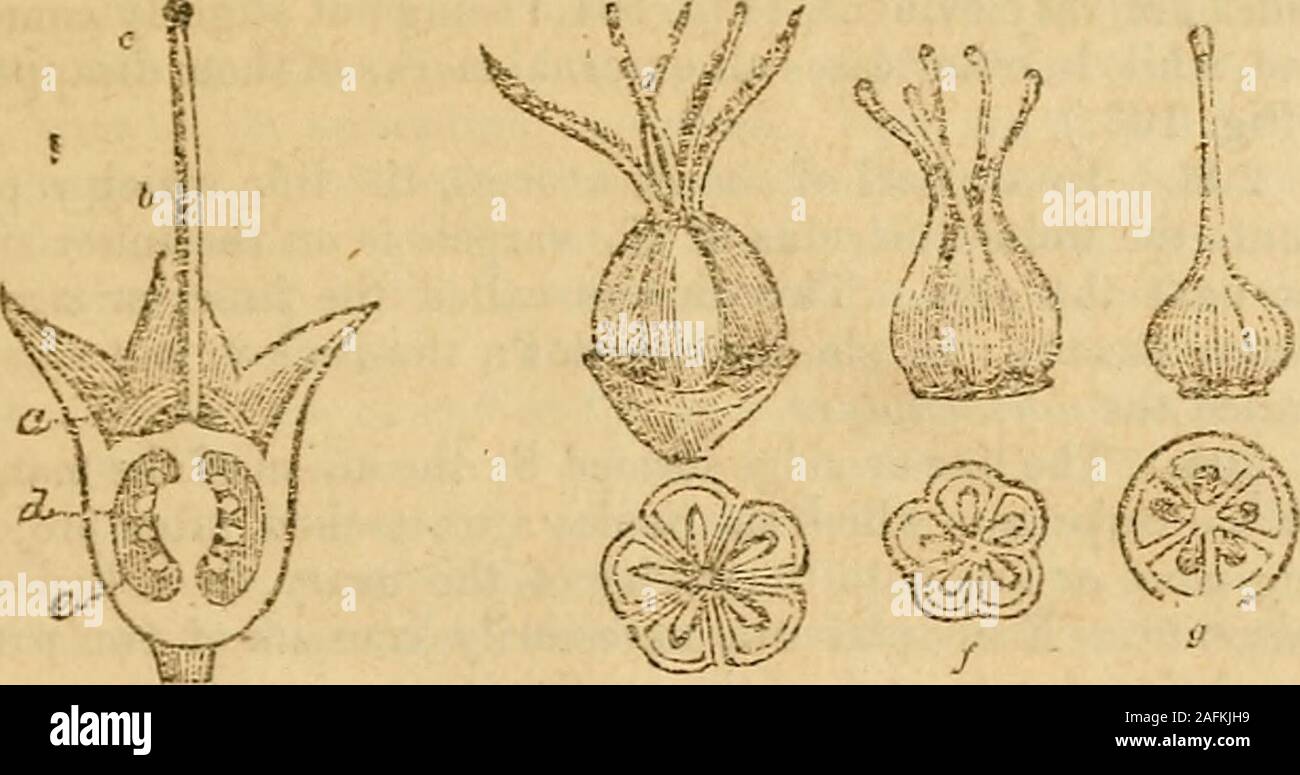 . The Botanical Class-Book and Flora of Pennsylvania. ission of a mucous fluid called the fovilla, to theovule. 190. The Fovilla consists of minute particles of mole- PISTIL. 65 culcs of a spherical or oblong form, suspended in a fluid pos-sessed of tremulous motion. 197. The Disk is a ring, either entire or lobed, or a rowof fleshy bodies, situated between the bases of the stamensand pistils. It is said to be hypogynous, when it surroundsthe base of the ovary, as in the Peony; when it adheres toand lines tho tube of the calyx, perigynous, as in llosaceousplants ; and when it. appears at the t Stock Photohttps://www.alamy.com/image-license-details/?v=1https://www.alamy.com/the-botanical-class-book-and-flora-of-pennsylvania-ission-of-a-mucous-fluid-called-the-fovilla-to-theovule-190-the-fovilla-consists-of-minute-particles-of-mole-pistil-65-culcs-of-a-spherical-or-oblong-form-suspended-in-a-fluid-pos-sessed-of-tremulous-motion-197-the-disk-is-a-ring-either-entire-or-lobed-or-a-rowof-fleshy-bodies-situated-between-the-bases-of-the-stamensand-pistils-it-is-said-to-be-hypogynous-when-it-surroundsthe-base-of-the-ovary-as-in-the-peony-when-it-adheres-toand-lines-tho-tube-of-the-calyx-perigynous-as-in-llosaceousplants-and-when-it-appears-at-the-t-image336648517.html
. The Botanical Class-Book and Flora of Pennsylvania. ission of a mucous fluid called the fovilla, to theovule. 190. The Fovilla consists of minute particles of mole- PISTIL. 65 culcs of a spherical or oblong form, suspended in a fluid pos-sessed of tremulous motion. 197. The Disk is a ring, either entire or lobed, or a rowof fleshy bodies, situated between the bases of the stamensand pistils. It is said to be hypogynous, when it surroundsthe base of the ovary, as in the Peony; when it adheres toand lines tho tube of the calyx, perigynous, as in llosaceousplants ; and when it. appears at the t Stock Photohttps://www.alamy.com/image-license-details/?v=1https://www.alamy.com/the-botanical-class-book-and-flora-of-pennsylvania-ission-of-a-mucous-fluid-called-the-fovilla-to-theovule-190-the-fovilla-consists-of-minute-particles-of-mole-pistil-65-culcs-of-a-spherical-or-oblong-form-suspended-in-a-fluid-pos-sessed-of-tremulous-motion-197-the-disk-is-a-ring-either-entire-or-lobed-or-a-rowof-fleshy-bodies-situated-between-the-bases-of-the-stamensand-pistils-it-is-said-to-be-hypogynous-when-it-surroundsthe-base-of-the-ovary-as-in-the-peony-when-it-adheres-toand-lines-tho-tube-of-the-calyx-perigynous-as-in-llosaceousplants-and-when-it-appears-at-the-t-image336648517.htmlRM2AFKJH9–. The Botanical Class-Book and Flora of Pennsylvania. ission of a mucous fluid called the fovilla, to theovule. 190. The Fovilla consists of minute particles of mole- PISTIL. 65 culcs of a spherical or oblong form, suspended in a fluid pos-sessed of tremulous motion. 197. The Disk is a ring, either entire or lobed, or a rowof fleshy bodies, situated between the bases of the stamensand pistils. It is said to be hypogynous, when it surroundsthe base of the ovary, as in the Peony; when it adheres toand lines tho tube of the calyx, perigynous, as in llosaceousplants ; and when it. appears at the t
 . Essentials of botany. Botany; Botany. 156 ESSENTIALS OF BOTANY. When the receptacle is concave, so that the pistil is inserted on the same level with the stamens or lower, but not at all united with the receptacle, the flower is said to be perigynous (around the pistil) and the ovary is half- inferior (Fig. 114, II). When the ovary is united with the I li III receptacle, the flower is said to Tig. 114. Insertion of the )q epigynous (upon the pistil) or Floral Organs. ^^^ ^^^^^ ^^ inferior (Fig. 99). I, hypogynous, all the other parts on ,gg pio-alDiap-ramq the receptacle, beneath the pistil Stock Photohttps://www.alamy.com/image-license-details/?v=1https://www.alamy.com/essentials-of-botany-botany-botany-156-essentials-of-botany-when-the-receptacle-is-concave-so-that-the-pistil-is-inserted-on-the-same-level-with-the-stamens-or-lower-but-not-at-all-united-with-the-receptacle-the-flower-is-said-to-be-perigynous-around-the-pistil-and-the-ovary-is-half-inferior-fig-114-ii-when-the-ovary-is-united-with-the-i-li-iii-receptacle-the-flower-is-said-to-tig-114-insertion-of-the-q-epigynous-upon-the-pistil-or-floral-organs-inferior-fig-99-i-hypogynous-all-the-other-parts-on-gg-pio-aldiap-ramq-the-receptacle-beneath-the-pistil-image216448242.html
. Essentials of botany. Botany; Botany. 156 ESSENTIALS OF BOTANY. When the receptacle is concave, so that the pistil is inserted on the same level with the stamens or lower, but not at all united with the receptacle, the flower is said to be perigynous (around the pistil) and the ovary is half- inferior (Fig. 114, II). When the ovary is united with the I li III receptacle, the flower is said to Tig. 114. Insertion of the )q epigynous (upon the pistil) or Floral Organs. ^^^ ^^^^^ ^^ inferior (Fig. 99). I, hypogynous, all the other parts on ,gg pio-alDiap-ramq the receptacle, beneath the pistil Stock Photohttps://www.alamy.com/image-license-details/?v=1https://www.alamy.com/essentials-of-botany-botany-botany-156-essentials-of-botany-when-the-receptacle-is-concave-so-that-the-pistil-is-inserted-on-the-same-level-with-the-stamens-or-lower-but-not-at-all-united-with-the-receptacle-the-flower-is-said-to-be-perigynous-around-the-pistil-and-the-ovary-is-half-inferior-fig-114-ii-when-the-ovary-is-united-with-the-i-li-iii-receptacle-the-flower-is-said-to-tig-114-insertion-of-the-q-epigynous-upon-the-pistil-or-floral-organs-inferior-fig-99-i-hypogynous-all-the-other-parts-on-gg-pio-aldiap-ramq-the-receptacle-beneath-the-pistil-image216448242.htmlRMPG41XA–. Essentials of botany. Botany; Botany. 156 ESSENTIALS OF BOTANY. When the receptacle is concave, so that the pistil is inserted on the same level with the stamens or lower, but not at all united with the receptacle, the flower is said to be perigynous (around the pistil) and the ovary is half- inferior (Fig. 114, II). When the ovary is united with the I li III receptacle, the flower is said to Tig. 114. Insertion of the )q epigynous (upon the pistil) or Floral Organs. ^^^ ^^^^^ ^^ inferior (Fig. 99). I, hypogynous, all the other parts on ,gg pio-alDiap-ramq the receptacle, beneath the pistil
 Flowering Flowers of Colour and Beauty Stock Photohttps://www.alamy.com/image-license-details/?v=1https://www.alamy.com/stock-photo-flowering-flowers-of-colour-and-beauty-147785036.html
Flowering Flowers of Colour and Beauty Stock Photohttps://www.alamy.com/image-license-details/?v=1https://www.alamy.com/stock-photo-flowering-flowers-of-colour-and-beauty-147785036.htmlRFJGC590–Flowering Flowers of Colour and Beauty
 Introduction to structural and systematic botany, and vegetable physiology, : being a 5th and revedof the Botanical text-book, illustrated with over thirteen hundred woodcuts . iththe base of the calyx (as inthe Cherry, Fig. 388, orPurslane, Fig. 389), they aresaid to be perigynous (liter-ally, placed around the pis-til). The real origin of theparts must be the same as inthe former case, that is, theparts really belong to the re-ceptacle, in successive circles,one above or within the other,first the sepals, then the pet-als, within these the stamens,and within or above thesethe pistils ; but t Stock Photohttps://www.alamy.com/image-license-details/?v=1https://www.alamy.com/introduction-to-structural-and-systematic-botany-and-vegetable-physiology-being-a-5th-and-revedof-the-botanical-text-book-illustrated-with-over-thirteen-hundred-woodcuts-iththe-base-of-the-calyx-as-inthe-cherry-fig-388-orpurslane-fig-389-they-aresaid-to-be-perigynous-liter-ally-placed-around-the-pis-til-the-real-origin-of-theparts-must-be-the-same-as-inthe-former-case-that-is-theparts-really-belong-to-the-re-ceptacle-in-successive-circlesone-above-or-within-the-otherfirst-the-sepals-then-the-pet-als-within-these-the-stamensand-within-or-above-thesethe-pistils-but-t-image339994838.html
Introduction to structural and systematic botany, and vegetable physiology, : being a 5th and revedof the Botanical text-book, illustrated with over thirteen hundred woodcuts . iththe base of the calyx (as inthe Cherry, Fig. 388, orPurslane, Fig. 389), they aresaid to be perigynous (liter-ally, placed around the pis-til). The real origin of theparts must be the same as inthe former case, that is, theparts really belong to the re-ceptacle, in successive circles,one above or within the other,first the sepals, then the pet-als, within these the stamens,and within or above thesethe pistils ; but t Stock Photohttps://www.alamy.com/image-license-details/?v=1https://www.alamy.com/introduction-to-structural-and-systematic-botany-and-vegetable-physiology-being-a-5th-and-revedof-the-botanical-text-book-illustrated-with-over-thirteen-hundred-woodcuts-iththe-base-of-the-calyx-as-inthe-cherry-fig-388-orpurslane-fig-389-they-aresaid-to-be-perigynous-liter-ally-placed-around-the-pis-til-the-real-origin-of-theparts-must-be-the-same-as-inthe-former-case-that-is-theparts-really-belong-to-the-re-ceptacle-in-successive-circlesone-above-or-within-the-otherfirst-the-sepals-then-the-pet-als-within-these-the-stamensand-within-or-above-thesethe-pistils-but-t-image339994838.htmlRM2AN42TP–Introduction to structural and systematic botany, and vegetable physiology, : being a 5th and revedof the Botanical text-book, illustrated with over thirteen hundred woodcuts . iththe base of the calyx (as inthe Cherry, Fig. 388, orPurslane, Fig. 389), they aresaid to be perigynous (liter-ally, placed around the pis-til). The real origin of theparts must be the same as inthe former case, that is, theparts really belong to the re-ceptacle, in successive circles,one above or within the other,first the sepals, then the pet-als, within these the stamens,and within or above thesethe pistils ; but t
 . The natural history of plants. Botany. Fig 280. Hermaphrodite flower (f). Kg. 281. Longitudinal section of flower. Soswellia papyracm. concave receptacle, often cup-shaped, more rarely in the form of a deep sac; this characterises Santiria^ often separated genericaUy from Canarium for this reason. The stamens, generally six in num- ber, and more or less perigynous, are usually free, more rarely mona- delphous at the base. The majority of the characters of any importance are therefore most variable in this genus; but all its species have this ia common, that their fruit is an elongated drupe, Stock Photohttps://www.alamy.com/image-license-details/?v=1https://www.alamy.com/the-natural-history-of-plants-botany-fig-280-hermaphrodite-flower-f-kg-281-longitudinal-section-of-flower-soswellia-papyracm-concave-receptacle-often-cup-shaped-more-rarely-in-the-form-of-a-deep-sac-this-characterises-santiria-often-separated-genericauy-from-canarium-for-this-reason-the-stamens-generally-six-in-num-ber-and-more-or-less-perigynous-are-usually-free-more-rarely-mona-delphous-at-the-base-the-majority-of-the-characters-of-any-importance-are-therefore-most-variable-in-this-genus-but-all-its-species-have-this-ia-common-that-their-fruit-is-an-elongated-drupe-image216422837.html
. The natural history of plants. Botany. Fig 280. Hermaphrodite flower (f). Kg. 281. Longitudinal section of flower. Soswellia papyracm. concave receptacle, often cup-shaped, more rarely in the form of a deep sac; this characterises Santiria^ often separated genericaUy from Canarium for this reason. The stamens, generally six in num- ber, and more or less perigynous, are usually free, more rarely mona- delphous at the base. The majority of the characters of any importance are therefore most variable in this genus; but all its species have this ia common, that their fruit is an elongated drupe, Stock Photohttps://www.alamy.com/image-license-details/?v=1https://www.alamy.com/the-natural-history-of-plants-botany-fig-280-hermaphrodite-flower-f-kg-281-longitudinal-section-of-flower-soswellia-papyracm-concave-receptacle-often-cup-shaped-more-rarely-in-the-form-of-a-deep-sac-this-characterises-santiria-often-separated-genericauy-from-canarium-for-this-reason-the-stamens-generally-six-in-num-ber-and-more-or-less-perigynous-are-usually-free-more-rarely-mona-delphous-at-the-base-the-majority-of-the-characters-of-any-importance-are-therefore-most-variable-in-this-genus-but-all-its-species-have-this-ia-common-that-their-fruit-is-an-elongated-drupe-image216422837.htmlRMPG2WF1–. The natural history of plants. Botany. Fig 280. Hermaphrodite flower (f). Kg. 281. Longitudinal section of flower. Soswellia papyracm. concave receptacle, often cup-shaped, more rarely in the form of a deep sac; this characterises Santiria^ often separated genericaUy from Canarium for this reason. The stamens, generally six in num- ber, and more or less perigynous, are usually free, more rarely mona- delphous at the base. The majority of the characters of any importance are therefore most variable in this genus; but all its species have this ia common, that their fruit is an elongated drupe,
 Flowering Flowers of Colour and Beauty Stock Photohttps://www.alamy.com/image-license-details/?v=1https://www.alamy.com/stock-photo-flowering-flowers-of-colour-and-beauty-147785364.html
Flowering Flowers of Colour and Beauty Stock Photohttps://www.alamy.com/image-license-details/?v=1https://www.alamy.com/stock-photo-flowering-flowers-of-colour-and-beauty-147785364.htmlRFJGC5MM–Flowering Flowers of Colour and Beauty
![Text-book of structural and physiological botany . lous calyx has a tube of various structure, and is oftensurrounded by a 4- or 5-cleft epi-calyxor involucre, the leaves of which alternatewith the sepals ; the petals are perigynous[sometimes wanting] ; the stamens rarelyso few as five, usually 12 to icx), free andalso perigynous ; the ovaries mostly withonly a single anatropous ovule ; andthe style usually more or less lateral.[Principal genera :—Rosa, Alchemilla, Fo-terium, Sanguisorba, Agrimonia, Rzibus,Fragaria, Geum, Comarum, Fiyas, Fo-tentilla, Spircea. The fleshy calyx-tubeof some spec Stock Photo Text-book of structural and physiological botany . lous calyx has a tube of various structure, and is oftensurrounded by a 4- or 5-cleft epi-calyxor involucre, the leaves of which alternatewith the sepals ; the petals are perigynous[sometimes wanting] ; the stamens rarelyso few as five, usually 12 to icx), free andalso perigynous ; the ovaries mostly withonly a single anatropous ovule ; andthe style usually more or less lateral.[Principal genera :—Rosa, Alchemilla, Fo-terium, Sanguisorba, Agrimonia, Rzibus,Fragaria, Geum, Comarum, Fiyas, Fo-tentilla, Spircea. The fleshy calyx-tubeof some spec Stock Photo](https://c8.alamy.com/comp/2AXD71B/text-book-of-structural-and-physiological-botany-lous-calyx-has-a-tube-of-various-structure-and-is-oftensurrounded-by-a-4-or-5-cleft-epi-calyxor-involucre-the-leaves-of-which-alternatewith-the-sepals-the-petals-are-perigynous-sometimes-wanting-the-stamens-rarelyso-few-as-five-usually-12-to-icx-free-andalso-perigynous-the-ovaries-mostly-withonly-a-single-anatropous-ovule-andthe-style-usually-more-or-less-lateral-principal-genera-rosa-alchemilla-fo-terium-sanguisorba-agrimonia-rzibusfragaria-geum-comarum-fiyas-fo-tentilla-spircea-the-fleshy-calyx-tubeof-some-spec-2AXD71B.jpg) Text-book of structural and physiological botany . lous calyx has a tube of various structure, and is oftensurrounded by a 4- or 5-cleft epi-calyxor involucre, the leaves of which alternatewith the sepals ; the petals are perigynous[sometimes wanting] ; the stamens rarelyso few as five, usually 12 to icx), free andalso perigynous ; the ovaries mostly withonly a single anatropous ovule ; andthe style usually more or less lateral.[Principal genera :—Rosa, Alchemilla, Fo-terium, Sanguisorba, Agrimonia, Rzibus,Fragaria, Geum, Comarum, Fiyas, Fo-tentilla, Spircea. The fleshy calyx-tubeof some spec Stock Photohttps://www.alamy.com/image-license-details/?v=1https://www.alamy.com/text-book-of-structural-and-physiological-botany-lous-calyx-has-a-tube-of-various-structure-and-is-oftensurrounded-by-a-4-or-5-cleft-epi-calyxor-involucre-the-leaves-of-which-alternatewith-the-sepals-the-petals-are-perigynous-sometimes-wanting-the-stamens-rarelyso-few-as-five-usually-12-to-icx-free-andalso-perigynous-the-ovaries-mostly-withonly-a-single-anatropous-ovule-andthe-style-usually-more-or-less-lateral-principal-genera-rosa-alchemilla-fo-terium-sanguisorba-agrimonia-rzibusfragaria-geum-comarum-fiyas-fo-tentilla-spircea-the-fleshy-calyx-tubeof-some-spec-image343268951.html
Text-book of structural and physiological botany . lous calyx has a tube of various structure, and is oftensurrounded by a 4- or 5-cleft epi-calyxor involucre, the leaves of which alternatewith the sepals ; the petals are perigynous[sometimes wanting] ; the stamens rarelyso few as five, usually 12 to icx), free andalso perigynous ; the ovaries mostly withonly a single anatropous ovule ; andthe style usually more or less lateral.[Principal genera :—Rosa, Alchemilla, Fo-terium, Sanguisorba, Agrimonia, Rzibus,Fragaria, Geum, Comarum, Fiyas, Fo-tentilla, Spircea. The fleshy calyx-tubeof some spec Stock Photohttps://www.alamy.com/image-license-details/?v=1https://www.alamy.com/text-book-of-structural-and-physiological-botany-lous-calyx-has-a-tube-of-various-structure-and-is-oftensurrounded-by-a-4-or-5-cleft-epi-calyxor-involucre-the-leaves-of-which-alternatewith-the-sepals-the-petals-are-perigynous-sometimes-wanting-the-stamens-rarelyso-few-as-five-usually-12-to-icx-free-andalso-perigynous-the-ovaries-mostly-withonly-a-single-anatropous-ovule-andthe-style-usually-more-or-less-lateral-principal-genera-rosa-alchemilla-fo-terium-sanguisorba-agrimonia-rzibusfragaria-geum-comarum-fiyas-fo-tentilla-spircea-the-fleshy-calyx-tubeof-some-spec-image343268951.htmlRM2AXD71B–Text-book of structural and physiological botany . lous calyx has a tube of various structure, and is oftensurrounded by a 4- or 5-cleft epi-calyxor involucre, the leaves of which alternatewith the sepals ; the petals are perigynous[sometimes wanting] ; the stamens rarelyso few as five, usually 12 to icx), free andalso perigynous ; the ovaries mostly withonly a single anatropous ovule ; andthe style usually more or less lateral.[Principal genera :—Rosa, Alchemilla, Fo-terium, Sanguisorba, Agrimonia, Rzibus,Fragaria, Geum, Comarum, Fiyas, Fo-tentilla, Spircea. The fleshy calyx-tubeof some spec
 . Lessons in botany. Botany. ROSIFLOR&. 267 The outer portions of the ovary become the fleshy fruit, while the inner portion becomes the hard stone with the seed in the centre. Such a fruit is a drupe. The floral formula for this family is as follows: Ca5,Co5,Ai5-2o or 30,Gi. 429. Lesson XIII. The apple family (pomacese).—This family is represented by the apples, pears, quinces, june-berries,. hawthorns, etc. The members are trees or shrubs. The receptacle is somewhat cup-shaped and hollow. The perianth and stamens are at first perigynous, but become epigynous. Please note that these image Stock Photohttps://www.alamy.com/image-license-details/?v=1https://www.alamy.com/lessons-in-botany-botany-rosifloramp-267-the-outer-portions-of-the-ovary-become-the-fleshy-fruit-while-the-inner-portion-becomes-the-hard-stone-with-the-seed-in-the-centre-such-a-fruit-is-a-drupe-the-floral-formula-for-this-family-is-as-follows-ca5co5ai5-2o-or-30gi-429-lesson-xiii-the-apple-family-pomacesethis-family-is-represented-by-the-apples-pears-quinces-june-berries-hawthorns-etc-the-members-are-trees-or-shrubs-the-receptacle-is-somewhat-cup-shaped-and-hollow-the-perianth-and-stamens-are-at-first-perigynous-but-become-epigynous-please-note-that-these-image-image216359230.html
. Lessons in botany. Botany. ROSIFLOR&. 267 The outer portions of the ovary become the fleshy fruit, while the inner portion becomes the hard stone with the seed in the centre. Such a fruit is a drupe. The floral formula for this family is as follows: Ca5,Co5,Ai5-2o or 30,Gi. 429. Lesson XIII. The apple family (pomacese).—This family is represented by the apples, pears, quinces, june-berries,. hawthorns, etc. The members are trees or shrubs. The receptacle is somewhat cup-shaped and hollow. The perianth and stamens are at first perigynous, but become epigynous. Please note that these image Stock Photohttps://www.alamy.com/image-license-details/?v=1https://www.alamy.com/lessons-in-botany-botany-rosifloramp-267-the-outer-portions-of-the-ovary-become-the-fleshy-fruit-while-the-inner-portion-becomes-the-hard-stone-with-the-seed-in-the-centre-such-a-fruit-is-a-drupe-the-floral-formula-for-this-family-is-as-follows-ca5co5ai5-2o-or-30gi-429-lesson-xiii-the-apple-family-pomacesethis-family-is-represented-by-the-apples-pears-quinces-june-berries-hawthorns-etc-the-members-are-trees-or-shrubs-the-receptacle-is-somewhat-cup-shaped-and-hollow-the-perianth-and-stamens-are-at-first-perigynous-but-become-epigynous-please-note-that-these-image-image216359230.htmlRMPG00BA–. Lessons in botany. Botany. ROSIFLOR&. 267 The outer portions of the ovary become the fleshy fruit, while the inner portion becomes the hard stone with the seed in the centre. Such a fruit is a drupe. The floral formula for this family is as follows: Ca5,Co5,Ai5-2o or 30,Gi. 429. Lesson XIII. The apple family (pomacese).—This family is represented by the apples, pears, quinces, june-berries,. hawthorns, etc. The members are trees or shrubs. The receptacle is somewhat cup-shaped and hollow. The perianth and stamens are at first perigynous, but become epigynous. Please note that these image
 Flowering Flowers of Colour and Beauty Stock Photohttps://www.alamy.com/image-license-details/?v=1https://www.alamy.com/stock-photo-flowering-flowers-of-colour-and-beauty-147785226.html
Flowering Flowers of Colour and Beauty Stock Photohttps://www.alamy.com/image-license-details/?v=1https://www.alamy.com/stock-photo-flowering-flowers-of-colour-and-beauty-147785226.htmlRFJGC5FP–Flowering Flowers of Colour and Beauty
 Nature and development of plants . e several days old. All thesefeatures are of common occurrence in a great variety of orders.The fruit of the buttercup is an akene, each carpel containing buta single ovule (Figs. 305, E; 261 B). (b) Some Variations of the Order.—Many variations of thissimple structure appear in other members of the order. Thecarpels may be reduced to one, as in sassafras and other groups,and in the green hellebore (Fig. 306, A) they are partially fusedand even united with the receptacle in some water lilies, etc.(flowers perigynous and epigynous). The stamens are some-times Stock Photohttps://www.alamy.com/image-license-details/?v=1https://www.alamy.com/nature-and-development-of-plants-e-several-days-old-all-thesefeatures-are-of-common-occurrence-in-a-great-variety-of-ordersthe-fruit-of-the-buttercup-is-an-akene-each-carpel-containing-buta-single-ovule-figs-305-e-261-b-b-some-variations-of-the-ordermany-variations-of-thissimple-structure-appear-in-other-members-of-the-order-thecarpels-may-be-reduced-to-one-as-in-sassafras-and-other-groupsand-in-the-green-hellebore-fig-306-a-they-are-partially-fusedand-even-united-with-the-receptacle-in-some-water-lilies-etcflowers-perigynous-and-epigynous-the-stamens-are-some-times-image343325521.html
Nature and development of plants . e several days old. All thesefeatures are of common occurrence in a great variety of orders.The fruit of the buttercup is an akene, each carpel containing buta single ovule (Figs. 305, E; 261 B). (b) Some Variations of the Order.—Many variations of thissimple structure appear in other members of the order. Thecarpels may be reduced to one, as in sassafras and other groups,and in the green hellebore (Fig. 306, A) they are partially fusedand even united with the receptacle in some water lilies, etc.(flowers perigynous and epigynous). The stamens are some-times Stock Photohttps://www.alamy.com/image-license-details/?v=1https://www.alamy.com/nature-and-development-of-plants-e-several-days-old-all-thesefeatures-are-of-common-occurrence-in-a-great-variety-of-ordersthe-fruit-of-the-buttercup-is-an-akene-each-carpel-containing-buta-single-ovule-figs-305-e-261-b-b-some-variations-of-the-ordermany-variations-of-thissimple-structure-appear-in-other-members-of-the-order-thecarpels-may-be-reduced-to-one-as-in-sassafras-and-other-groupsand-in-the-green-hellebore-fig-306-a-they-are-partially-fusedand-even-united-with-the-receptacle-in-some-water-lilies-etcflowers-perigynous-and-epigynous-the-stamens-are-some-times-image343325521.htmlRM2AXFR5N–Nature and development of plants . e several days old. All thesefeatures are of common occurrence in a great variety of orders.The fruit of the buttercup is an akene, each carpel containing buta single ovule (Figs. 305, E; 261 B). (b) Some Variations of the Order.—Many variations of thissimple structure appear in other members of the order. Thecarpels may be reduced to one, as in sassafras and other groups,and in the green hellebore (Fig. 306, A) they are partially fusedand even united with the receptacle in some water lilies, etc.(flowers perigynous and epigynous). The stamens are some-times
 . The natural history of plants. Botany. 98 NATURAL HISTORY OF PLANTS. at antHesis. The scarcely perigynous androceum is formed of from four to twelve stamens, united among themselves by the base of their filaments iato a short tube, cleft on one side, and becoming shorter the nearer they are to this cleft, toward the edges of which we only Trir/onia villosa.. Please note that these images are extracted from scanned page images that may have been digitally enhanced for readability - coloration and appearance of these illustrations may not perfectly resemble the original work.. Baillon, Henri E Stock Photohttps://www.alamy.com/image-license-details/?v=1https://www.alamy.com/the-natural-history-of-plants-botany-98-natural-history-of-plants-at-anthesis-the-scarcely-perigynous-androceum-is-formed-of-from-four-to-twelve-stamens-united-among-themselves-by-the-base-of-their-filaments-iato-a-short-tube-cleft-on-one-side-and-becoming-shorter-the-nearer-they-are-to-this-cleft-toward-the-edges-of-which-we-only-trironia-villosa-please-note-that-these-images-are-extracted-from-scanned-page-images-that-may-have-been-digitally-enhanced-for-readability-coloration-and-appearance-of-these-illustrations-may-not-perfectly-resemble-the-original-work-baillon-henri-e-image216423255.html
. The natural history of plants. Botany. 98 NATURAL HISTORY OF PLANTS. at antHesis. The scarcely perigynous androceum is formed of from four to twelve stamens, united among themselves by the base of their filaments iato a short tube, cleft on one side, and becoming shorter the nearer they are to this cleft, toward the edges of which we only Trir/onia villosa.. Please note that these images are extracted from scanned page images that may have been digitally enhanced for readability - coloration and appearance of these illustrations may not perfectly resemble the original work.. Baillon, Henri E Stock Photohttps://www.alamy.com/image-license-details/?v=1https://www.alamy.com/the-natural-history-of-plants-botany-98-natural-history-of-plants-at-anthesis-the-scarcely-perigynous-androceum-is-formed-of-from-four-to-twelve-stamens-united-among-themselves-by-the-base-of-their-filaments-iato-a-short-tube-cleft-on-one-side-and-becoming-shorter-the-nearer-they-are-to-this-cleft-toward-the-edges-of-which-we-only-trironia-villosa-please-note-that-these-images-are-extracted-from-scanned-page-images-that-may-have-been-digitally-enhanced-for-readability-coloration-and-appearance-of-these-illustrations-may-not-perfectly-resemble-the-original-work-baillon-henri-e-image216423255.htmlRMPG2X1Y–. The natural history of plants. Botany. 98 NATURAL HISTORY OF PLANTS. at antHesis. The scarcely perigynous androceum is formed of from four to twelve stamens, united among themselves by the base of their filaments iato a short tube, cleft on one side, and becoming shorter the nearer they are to this cleft, toward the edges of which we only Trir/onia villosa.. Please note that these images are extracted from scanned page images that may have been digitally enhanced for readability - coloration and appearance of these illustrations may not perfectly resemble the original work.. Baillon, Henri E
 Flowering Flowers of Colour and Beauty Stock Photohttps://www.alamy.com/image-license-details/?v=1https://www.alamy.com/stock-photo-flowering-flowers-of-colour-and-beauty-147785390.html
Flowering Flowers of Colour and Beauty Stock Photohttps://www.alamy.com/image-license-details/?v=1https://www.alamy.com/stock-photo-flowering-flowers-of-colour-and-beauty-147785390.htmlRFJGC5NJ–Flowering Flowers of Colour and Beauty
 Text-book of botany, morphological and physiological . Fig. 151.—Development of the fig of Finis carica (afterPayer: Organogenic de la fleur).. Fig. 152.—Development of the flower oi Rosa alpiiia (after Payer:Organogenic de la fleur). On a process very similar to the formation of the common fig depends the originof perigynous flowers and of inferior ovaries. Fig. 152 represents this in the perigynousflower of a rose. I shows the very young shoot which is to develope into a flower, seenhalf from above and from the outside; the end of the shoot is thickly swollen; it hasalready produced the five Stock Photohttps://www.alamy.com/image-license-details/?v=1https://www.alamy.com/text-book-of-botany-morphological-and-physiological-fig-151development-of-the-fig-of-finis-carica-afterpayer-organogenic-de-la-fleur-fig-152development-of-the-flower-oi-rosa-alpiiia-after-payerorganogenic-de-la-fleur-on-a-process-very-similar-to-the-formation-of-the-common-fig-depends-the-originof-perigynous-flowers-and-of-inferior-ovaries-fig-152-represents-this-in-the-perigynousflower-of-a-rose-i-shows-the-very-young-shoot-which-is-to-develope-into-a-flower-seenhalf-from-above-and-from-the-outside-the-end-of-the-shoot-is-thickly-swollen-it-hasalready-produced-the-five-image342975071.html
Text-book of botany, morphological and physiological . Fig. 151.—Development of the fig of Finis carica (afterPayer: Organogenic de la fleur).. Fig. 152.—Development of the flower oi Rosa alpiiia (after Payer:Organogenic de la fleur). On a process very similar to the formation of the common fig depends the originof perigynous flowers and of inferior ovaries. Fig. 152 represents this in the perigynousflower of a rose. I shows the very young shoot which is to develope into a flower, seenhalf from above and from the outside; the end of the shoot is thickly swollen; it hasalready produced the five Stock Photohttps://www.alamy.com/image-license-details/?v=1https://www.alamy.com/text-book-of-botany-morphological-and-physiological-fig-151development-of-the-fig-of-finis-carica-afterpayer-organogenic-de-la-fleur-fig-152development-of-the-flower-oi-rosa-alpiiia-after-payerorganogenic-de-la-fleur-on-a-process-very-similar-to-the-formation-of-the-common-fig-depends-the-originof-perigynous-flowers-and-of-inferior-ovaries-fig-152-represents-this-in-the-perigynousflower-of-a-rose-i-shows-the-very-young-shoot-which-is-to-develope-into-a-flower-seenhalf-from-above-and-from-the-outside-the-end-of-the-shoot-is-thickly-swollen-it-hasalready-produced-the-five-image342975071.htmlRM2AWYT5K–Text-book of botany, morphological and physiological . Fig. 151.—Development of the fig of Finis carica (afterPayer: Organogenic de la fleur).. Fig. 152.—Development of the flower oi Rosa alpiiia (after Payer:Organogenic de la fleur). On a process very similar to the formation of the common fig depends the originof perigynous flowers and of inferior ovaries. Fig. 152 represents this in the perigynousflower of a rose. I shows the very young shoot which is to develope into a flower, seenhalf from above and from the outside; the end of the shoot is thickly swollen; it hasalready produced the five
 . The natural history of plants. Botany. Fig. 453. Flower without corolla. Fig. 454. Diagram.. Fig. 465. Long. sect, of flower. Fig. 456. Fruit. on the margin of the receptacular cup. The calyx is composed of four sepals, two of which are lateral, one anterior and one posterior, valvate or slightly covered at the margin by the preceding. Four sessile petals alternate with the sepals, imbricate and crumpled ^ in the bud. The stamens, inserted with the petals, outside a thick, crenelate or undulate perigynous disk, are four in number, superposed to the sepals, and formed each of a free subulate Stock Photohttps://www.alamy.com/image-license-details/?v=1https://www.alamy.com/the-natural-history-of-plants-botany-fig-453-flower-without-corolla-fig-454-diagram-fig-465-long-sect-of-flower-fig-456-fruit-on-the-margin-of-the-receptacular-cup-the-calyx-is-composed-of-four-sepals-two-of-which-are-lateral-one-anterior-and-one-posterior-valvate-or-slightly-covered-at-the-margin-by-the-preceding-four-sessile-petals-alternate-with-the-sepals-imbricate-and-crumpled-in-the-bud-the-stamens-inserted-with-the-petals-outside-a-thick-crenelate-or-undulate-perigynous-disk-are-four-in-number-superposed-to-the-sepals-and-formed-each-of-a-free-subulate-image216400705.html
. The natural history of plants. Botany. Fig. 453. Flower without corolla. Fig. 454. Diagram.. Fig. 465. Long. sect, of flower. Fig. 456. Fruit. on the margin of the receptacular cup. The calyx is composed of four sepals, two of which are lateral, one anterior and one posterior, valvate or slightly covered at the margin by the preceding. Four sessile petals alternate with the sepals, imbricate and crumpled ^ in the bud. The stamens, inserted with the petals, outside a thick, crenelate or undulate perigynous disk, are four in number, superposed to the sepals, and formed each of a free subulate Stock Photohttps://www.alamy.com/image-license-details/?v=1https://www.alamy.com/the-natural-history-of-plants-botany-fig-453-flower-without-corolla-fig-454-diagram-fig-465-long-sect-of-flower-fig-456-fruit-on-the-margin-of-the-receptacular-cup-the-calyx-is-composed-of-four-sepals-two-of-which-are-lateral-one-anterior-and-one-posterior-valvate-or-slightly-covered-at-the-margin-by-the-preceding-four-sessile-petals-alternate-with-the-sepals-imbricate-and-crumpled-in-the-bud-the-stamens-inserted-with-the-petals-outside-a-thick-crenelate-or-undulate-perigynous-disk-are-four-in-number-superposed-to-the-sepals-and-formed-each-of-a-free-subulate-image216400705.htmlRMPG1W8H–. The natural history of plants. Botany. Fig. 453. Flower without corolla. Fig. 454. Diagram.. Fig. 465. Long. sect, of flower. Fig. 456. Fruit. on the margin of the receptacular cup. The calyx is composed of four sepals, two of which are lateral, one anterior and one posterior, valvate or slightly covered at the margin by the preceding. Four sessile petals alternate with the sepals, imbricate and crumpled ^ in the bud. The stamens, inserted with the petals, outside a thick, crenelate or undulate perigynous disk, are four in number, superposed to the sepals, and formed each of a free subulate
 Flowering Flowers of Colour and Beauty Stock Photohttps://www.alamy.com/image-license-details/?v=1https://www.alamy.com/stock-photo-flowering-flowers-of-colour-and-beauty-147785054.html
Flowering Flowers of Colour and Beauty Stock Photohttps://www.alamy.com/image-license-details/?v=1https://www.alamy.com/stock-photo-flowering-flowers-of-colour-and-beauty-147785054.htmlRFJGC59J–Flowering Flowers of Colour and Beauty
 . Foundations of botany. I II III Fig. 155. — Insertion of theFloral Organs. I, Hypogynous, all the other parts onthe receptacle, beneath the pistil;II, Perigynous, petals and stamensapparently growing out of the calyx,around the pistil; III, corollahypogynous, stamens epipetalous.. Fig. 156. —White Water-Lily. Theinner petals and the stamens grow-ing from the ovary. of the white water-lily, of which a partial view of oneside is shown in Fig. 156.^ 1 For floral diagrams see Le Maout and Decaisnes Traite General deBotanique, or Eichlers BUtthendiagramme. 2 It is best to begin practice on floral Stock Photohttps://www.alamy.com/image-license-details/?v=1https://www.alamy.com/foundations-of-botany-i-ii-iii-fig-155-insertion-of-thefloral-organs-i-hypogynous-all-the-other-parts-onthe-receptacle-beneath-the-pistilii-perigynous-petals-and-stamensapparently-growing-out-of-the-calyxaround-the-pistil-iii-corollahypogynous-stamens-epipetalous-fig-156-white-water-lily-theinner-petals-and-the-stamens-grow-ing-from-the-ovary-of-the-white-water-lily-of-which-a-partial-view-of-oneside-is-shown-in-fig-156-1-for-floral-diagrams-see-le-maout-and-decaisnes-traite-general-debotanique-or-eichlers-butthendiagramme-2-it-is-best-to-begin-practice-on-floral-image337037947.html
. Foundations of botany. I II III Fig. 155. — Insertion of theFloral Organs. I, Hypogynous, all the other parts onthe receptacle, beneath the pistil;II, Perigynous, petals and stamensapparently growing out of the calyx,around the pistil; III, corollahypogynous, stamens epipetalous.. Fig. 156. —White Water-Lily. Theinner petals and the stamens grow-ing from the ovary. of the white water-lily, of which a partial view of oneside is shown in Fig. 156.^ 1 For floral diagrams see Le Maout and Decaisnes Traite General deBotanique, or Eichlers BUtthendiagramme. 2 It is best to begin practice on floral Stock Photohttps://www.alamy.com/image-license-details/?v=1https://www.alamy.com/foundations-of-botany-i-ii-iii-fig-155-insertion-of-thefloral-organs-i-hypogynous-all-the-other-parts-onthe-receptacle-beneath-the-pistilii-perigynous-petals-and-stamensapparently-growing-out-of-the-calyxaround-the-pistil-iii-corollahypogynous-stamens-epipetalous-fig-156-white-water-lily-theinner-petals-and-the-stamens-grow-ing-from-the-ovary-of-the-white-water-lily-of-which-a-partial-view-of-oneside-is-shown-in-fig-156-1-for-floral-diagrams-see-le-maout-and-decaisnes-traite-general-debotanique-or-eichlers-butthendiagramme-2-it-is-best-to-begin-practice-on-floral-image337037947.htmlRM2AG9B9F–. Foundations of botany. I II III Fig. 155. — Insertion of theFloral Organs. I, Hypogynous, all the other parts onthe receptacle, beneath the pistil;II, Perigynous, petals and stamensapparently growing out of the calyx,around the pistil; III, corollahypogynous, stamens epipetalous.. Fig. 156. —White Water-Lily. Theinner petals and the stamens grow-ing from the ovary. of the white water-lily, of which a partial view of oneside is shown in Fig. 156.^ 1 For floral diagrams see Le Maout and Decaisnes Traite General deBotanique, or Eichlers BUtthendiagramme. 2 It is best to begin practice on floral
 . The natural history of plants. Botany. TEREBINTHAOEM. 285 Chlamydocarya Thomsoniana. remarkably enough., with most of the characters of the latter, has a concave receptacle, and, accordingly, a fruit half inserted in this receptacle (fig. 334), whilst. the perigynous, gamophyllus perianth, persistent and accres- cent, covers it like a long cap lengthened iato a tube. The two species of Chlamydocarya known are from tropical Africa ; the female flowers are united in spikes or capitules. In lodes be- longing to tropical Asia, Oceania and Africa, the flowers are arranged in compound cymes. The f Stock Photohttps://www.alamy.com/image-license-details/?v=1https://www.alamy.com/the-natural-history-of-plants-botany-terebinthaoem-285-chlamydocarya-thomsoniana-remarkably-enough-with-most-of-the-characters-of-the-latter-has-a-concave-receptacle-and-accordingly-a-fruit-half-inserted-in-this-receptacle-fig-334-whilst-the-perigynous-gamophyllus-perianth-persistent-and-accres-cent-covers-it-like-a-long-cap-lengthened-iato-a-tube-the-two-species-of-chlamydocarya-known-are-from-tropical-africa-the-female-flowers-are-united-in-spikes-or-capitules-in-lodes-be-longing-to-tropical-asia-oceania-and-africa-the-flowers-are-arranged-in-compound-cymes-the-f-image216401203.html
. The natural history of plants. Botany. TEREBINTHAOEM. 285 Chlamydocarya Thomsoniana. remarkably enough., with most of the characters of the latter, has a concave receptacle, and, accordingly, a fruit half inserted in this receptacle (fig. 334), whilst. the perigynous, gamophyllus perianth, persistent and accres- cent, covers it like a long cap lengthened iato a tube. The two species of Chlamydocarya known are from tropical Africa ; the female flowers are united in spikes or capitules. In lodes be- longing to tropical Asia, Oceania and Africa, the flowers are arranged in compound cymes. The f Stock Photohttps://www.alamy.com/image-license-details/?v=1https://www.alamy.com/the-natural-history-of-plants-botany-terebinthaoem-285-chlamydocarya-thomsoniana-remarkably-enough-with-most-of-the-characters-of-the-latter-has-a-concave-receptacle-and-accordingly-a-fruit-half-inserted-in-this-receptacle-fig-334-whilst-the-perigynous-gamophyllus-perianth-persistent-and-accres-cent-covers-it-like-a-long-cap-lengthened-iato-a-tube-the-two-species-of-chlamydocarya-known-are-from-tropical-africa-the-female-flowers-are-united-in-spikes-or-capitules-in-lodes-be-longing-to-tropical-asia-oceania-and-africa-the-flowers-are-arranged-in-compound-cymes-the-f-image216401203.htmlRMPG1WXB–. The natural history of plants. Botany. TEREBINTHAOEM. 285 Chlamydocarya Thomsoniana. remarkably enough., with most of the characters of the latter, has a concave receptacle, and, accordingly, a fruit half inserted in this receptacle (fig. 334), whilst. the perigynous, gamophyllus perianth, persistent and accres- cent, covers it like a long cap lengthened iato a tube. The two species of Chlamydocarya known are from tropical Africa ; the female flowers are united in spikes or capitules. In lodes be- longing to tropical Asia, Oceania and Africa, the flowers are arranged in compound cymes. The f
 Flowering Flowers of Colour and Beauty Stock Photohttps://www.alamy.com/image-license-details/?v=1https://www.alamy.com/stock-photo-flowering-flowers-of-colour-and-beauty-147785081.html
Flowering Flowers of Colour and Beauty Stock Photohttps://www.alamy.com/image-license-details/?v=1https://www.alamy.com/stock-photo-flowering-flowers-of-colour-and-beauty-147785081.htmlRFJGC5AH–Flowering Flowers of Colour and Beauty
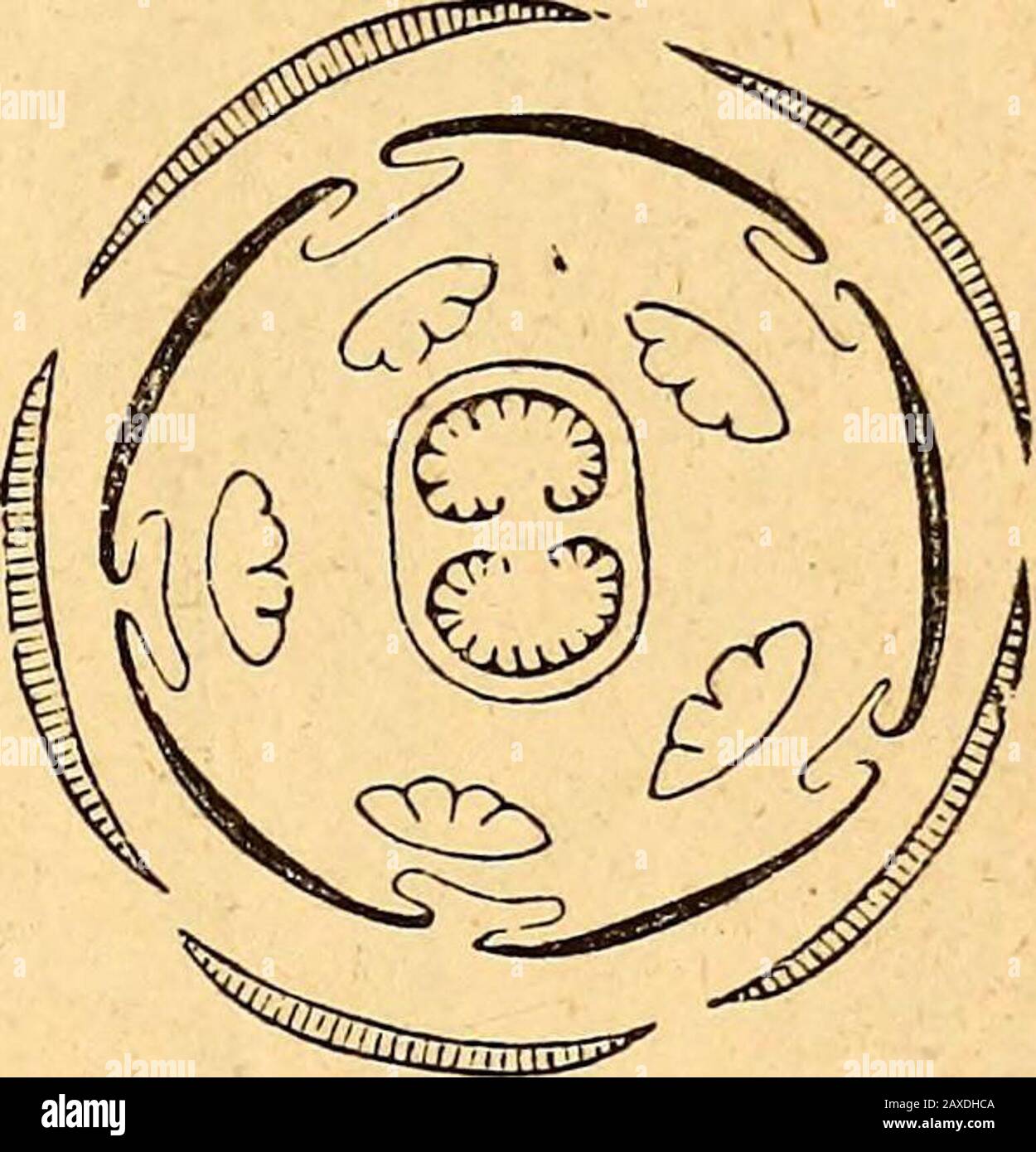 Text-book of structural and physiological botany . Fig. 497.—I. YXomox oiSocannin D7//err,t^m*^ (ms-gmfied) ; II. Floral diagrampotato {Sola7tacecB). Cohort V. Ebenales. Corolla gamopetalous or apopetalous,hypogynous or epigynous, rarely perigynous ; stamens usually manymore than the corolla-lobes, or if equal in number usually alternate withthem ; ovary 2- or multi-locuiar; ovules usually few; fruit rarelycapsular. Shrubs or trees, with alternate exstipulate leaves. Principalorders :—Ebenacece (Diospyros); Styracecs [Symplocos, Styj^ax^ Halesia). Cohort VI. Primulales. Corolla regular, hypogy Stock Photohttps://www.alamy.com/image-license-details/?v=1https://www.alamy.com/text-book-of-structural-and-physiological-botany-fig-497i-yxomox-oisocannin-d7errtm-ms-gmfied-ii-floral-diagrampotato-sola7tacecb-cohort-v-ebenales-corolla-gamopetalous-or-apopetaloushypogynous-or-epigynous-rarely-perigynous-stamens-usually-manymore-than-the-corolla-lobes-or-if-equal-in-number-usually-alternate-withthem-ovary-2-or-multi-locuiar-ovules-usually-few-fruit-rarelycapsular-shrubs-or-trees-with-alternate-exstipulate-leaves-principalorders-ebenacece-diospyros-styracecs-symplocos-styjax-halesia-cohort-vi-primulales-corolla-regular-hypogy-image343277098.html
Text-book of structural and physiological botany . Fig. 497.—I. YXomox oiSocannin D7//err,t^m*^ (ms-gmfied) ; II. Floral diagrampotato {Sola7tacecB). Cohort V. Ebenales. Corolla gamopetalous or apopetalous,hypogynous or epigynous, rarely perigynous ; stamens usually manymore than the corolla-lobes, or if equal in number usually alternate withthem ; ovary 2- or multi-locuiar; ovules usually few; fruit rarelycapsular. Shrubs or trees, with alternate exstipulate leaves. Principalorders :—Ebenacece (Diospyros); Styracecs [Symplocos, Styj^ax^ Halesia). Cohort VI. Primulales. Corolla regular, hypogy Stock Photohttps://www.alamy.com/image-license-details/?v=1https://www.alamy.com/text-book-of-structural-and-physiological-botany-fig-497i-yxomox-oisocannin-d7errtm-ms-gmfied-ii-floral-diagrampotato-sola7tacecb-cohort-v-ebenales-corolla-gamopetalous-or-apopetaloushypogynous-or-epigynous-rarely-perigynous-stamens-usually-manymore-than-the-corolla-lobes-or-if-equal-in-number-usually-alternate-withthem-ovary-2-or-multi-locuiar-ovules-usually-few-fruit-rarelycapsular-shrubs-or-trees-with-alternate-exstipulate-leaves-principalorders-ebenacece-diospyros-styracecs-symplocos-styjax-halesia-cohort-vi-primulales-corolla-regular-hypogy-image343277098.htmlRM2AXDHCA–Text-book of structural and physiological botany . Fig. 497.—I. YXomox oiSocannin D7//err,t^m*^ (ms-gmfied) ; II. Floral diagrampotato {Sola7tacecB). Cohort V. Ebenales. Corolla gamopetalous or apopetalous,hypogynous or epigynous, rarely perigynous ; stamens usually manymore than the corolla-lobes, or if equal in number usually alternate withthem ; ovary 2- or multi-locuiar; ovules usually few; fruit rarelycapsular. Shrubs or trees, with alternate exstipulate leaves. Principalorders :—Ebenacece (Diospyros); Styracecs [Symplocos, Styj^ax^ Halesia). Cohort VI. Primulales. Corolla regular, hypogy
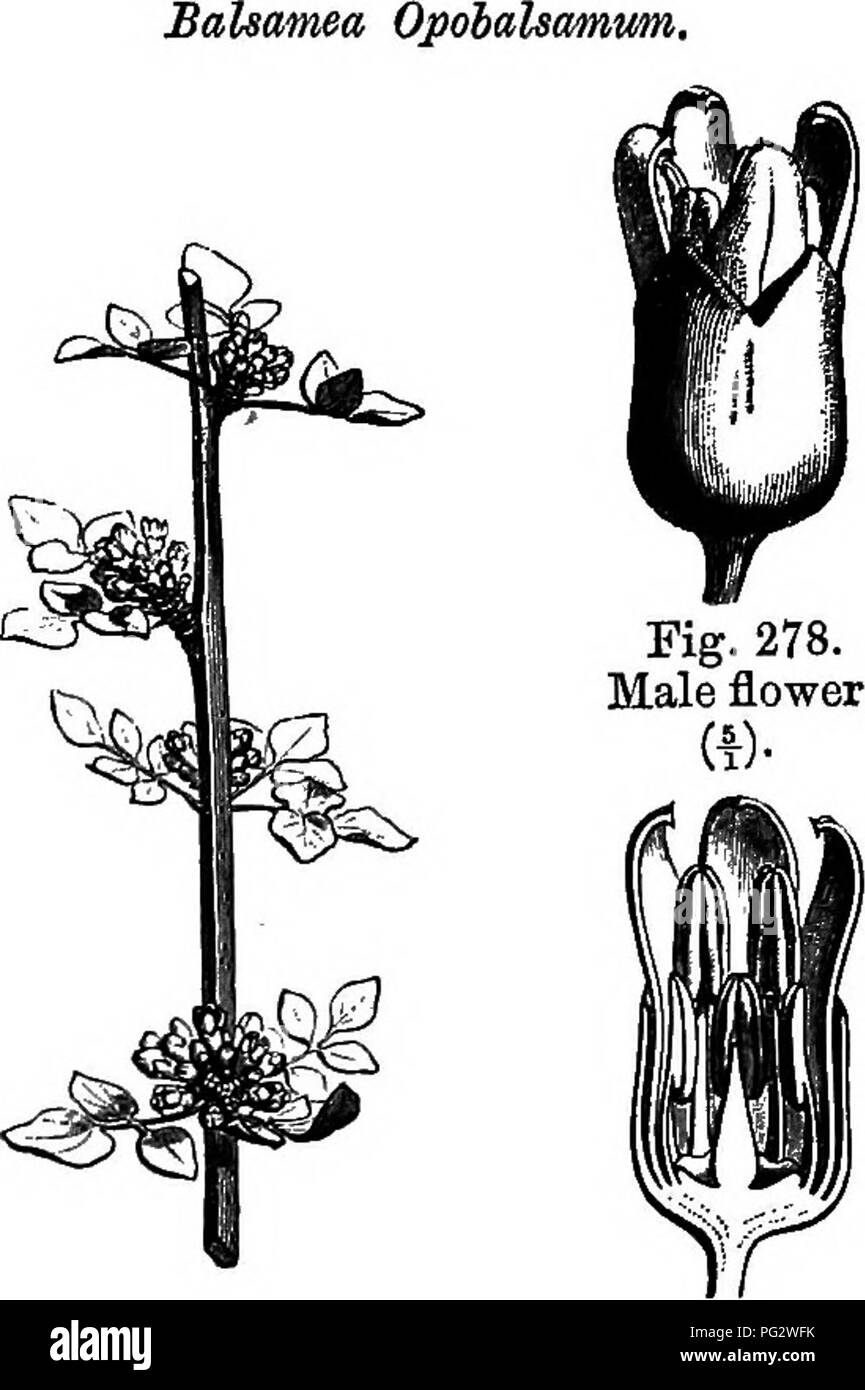 . The natural history of plants. Botany. TEREBINTHAOE^ 263 shrubs of tropical Africa, Asia and Oceania (fig. 277-279), having branches often thorny, and alternate leaves, imparipinnate or 1-3- foliolate, the polygamous flowers are usually tetramerous or diplo- stemonous, and the gynseceum generally reduced to two carpels. But these organs are nearly always inserted on a slightly concave re- ceptacle, lined by a cup-shaped disk, so that their insertion is slightly perigynous." The fruit is a drupe, with one or more stones united together by the axis, and an exocarp separating in two or mor Stock Photohttps://www.alamy.com/image-license-details/?v=1https://www.alamy.com/the-natural-history-of-plants-botany-terebinthaoe-263-shrubs-of-tropical-africa-asia-and-oceania-fig-277-279-having-branches-often-thorny-and-alternate-leaves-imparipinnate-or-1-3-foliolate-the-polygamous-flowers-are-usually-tetramerous-or-diplo-stemonous-and-the-gynseceum-generally-reduced-to-two-carpels-but-these-organs-are-nearly-always-inserted-on-a-slightly-concave-re-ceptacle-lined-by-a-cup-shaped-disk-so-that-their-insertion-is-slightly-perigynousquot-the-fruit-is-a-drupe-with-one-or-more-stones-united-together-by-the-axis-and-an-exocarp-separating-in-two-or-mor-image216422855.html
. The natural history of plants. Botany. TEREBINTHAOE^ 263 shrubs of tropical Africa, Asia and Oceania (fig. 277-279), having branches often thorny, and alternate leaves, imparipinnate or 1-3- foliolate, the polygamous flowers are usually tetramerous or diplo- stemonous, and the gynseceum generally reduced to two carpels. But these organs are nearly always inserted on a slightly concave re- ceptacle, lined by a cup-shaped disk, so that their insertion is slightly perigynous." The fruit is a drupe, with one or more stones united together by the axis, and an exocarp separating in two or mor Stock Photohttps://www.alamy.com/image-license-details/?v=1https://www.alamy.com/the-natural-history-of-plants-botany-terebinthaoe-263-shrubs-of-tropical-africa-asia-and-oceania-fig-277-279-having-branches-often-thorny-and-alternate-leaves-imparipinnate-or-1-3-foliolate-the-polygamous-flowers-are-usually-tetramerous-or-diplo-stemonous-and-the-gynseceum-generally-reduced-to-two-carpels-but-these-organs-are-nearly-always-inserted-on-a-slightly-concave-re-ceptacle-lined-by-a-cup-shaped-disk-so-that-their-insertion-is-slightly-perigynousquot-the-fruit-is-a-drupe-with-one-or-more-stones-united-together-by-the-axis-and-an-exocarp-separating-in-two-or-mor-image216422855.htmlRMPG2WFK–. The natural history of plants. Botany. TEREBINTHAOE^ 263 shrubs of tropical Africa, Asia and Oceania (fig. 277-279), having branches often thorny, and alternate leaves, imparipinnate or 1-3- foliolate, the polygamous flowers are usually tetramerous or diplo- stemonous, and the gynseceum generally reduced to two carpels. But these organs are nearly always inserted on a slightly concave re- ceptacle, lined by a cup-shaped disk, so that their insertion is slightly perigynous." The fruit is a drupe, with one or more stones united together by the axis, and an exocarp separating in two or mor
 Flowering Flowers of Colour and Beauty Stock Photohttps://www.alamy.com/image-license-details/?v=1https://www.alamy.com/stock-photo-flowering-flowers-of-colour-and-beauty-147785279.html
Flowering Flowers of Colour and Beauty Stock Photohttps://www.alamy.com/image-license-details/?v=1https://www.alamy.com/stock-photo-flowering-flowers-of-colour-and-beauty-147785279.htmlRFJGC5HK–Flowering Flowers of Colour and Beauty
![. Flora of Syria, Palestine, and Sinai : from the Taurus to Ras Muhammas and from the Mediterranean sea to the Syrian desert. ) Order XXXV. LEGUMIl^OSiE. (Pulse Family.) Trees, shruls or herls, with jpajpilionaceous or regularflowers, 10 (rarely 5-ooj stamens, monadelj)hous, diadel-2)hous, or rarely disti7ict, and a single, sim])le, free jpistilhecoming a legume. Albumen 0. Leaves alternate, stipu-led, usually comjpound— Calyx 6-toothed, the fifth toothbelow, or bilabiate, rarely parted to disk. Petals perigynous,rarely connate and adherent to stamens, in the irregularflowers 5, imbricated, in Stock Photo . Flora of Syria, Palestine, and Sinai : from the Taurus to Ras Muhammas and from the Mediterranean sea to the Syrian desert. ) Order XXXV. LEGUMIl^OSiE. (Pulse Family.) Trees, shruls or herls, with jpajpilionaceous or regularflowers, 10 (rarely 5-ooj stamens, monadelj)hous, diadel-2)hous, or rarely disti7ict, and a single, sim])le, free jpistilhecoming a legume. Albumen 0. Leaves alternate, stipu-led, usually comjpound— Calyx 6-toothed, the fifth toothbelow, or bilabiate, rarely parted to disk. Petals perigynous,rarely connate and adherent to stamens, in the irregularflowers 5, imbricated, in Stock Photo](https://c8.alamy.com/comp/2AFYXET/flora-of-syria-palestine-and-sinai-from-the-taurus-to-ras-muhammas-and-from-the-mediterranean-sea-to-the-syrian-desert-order-xxxv-legumilosie-pulse-family-trees-shruls-or-herls-with-jpajpilionaceous-or-regularflowers-10-rarely-5-ooj-stamens-monadeljhous-diadel-2hous-or-rarely-disti7ict-and-a-single-sim-le-free-jpistilhecoming-a-legume-albumen-0-leaves-alternate-stipu-led-usually-comjpound-calyx-6-toothed-the-fifth-toothbelow-or-bilabiate-rarely-parted-to-disk-petals-perigynousrarely-connate-and-adherent-to-stamens-in-the-irregularflowers-5-imbricated-in-2AFYXET.jpg) . Flora of Syria, Palestine, and Sinai : from the Taurus to Ras Muhammas and from the Mediterranean sea to the Syrian desert. ) Order XXXV. LEGUMIl^OSiE. (Pulse Family.) Trees, shruls or herls, with jpajpilionaceous or regularflowers, 10 (rarely 5-ooj stamens, monadelj)hous, diadel-2)hous, or rarely disti7ict, and a single, sim])le, free jpistilhecoming a legume. Albumen 0. Leaves alternate, stipu-led, usually comjpound— Calyx 6-toothed, the fifth toothbelow, or bilabiate, rarely parted to disk. Petals perigynous,rarely connate and adherent to stamens, in the irregularflowers 5, imbricated, in Stock Photohttps://www.alamy.com/image-license-details/?v=1https://www.alamy.com/flora-of-syria-palestine-and-sinai-from-the-taurus-to-ras-muhammas-and-from-the-mediterranean-sea-to-the-syrian-desert-order-xxxv-legumilosie-pulse-family-trees-shruls-or-herls-with-jpajpilionaceous-or-regularflowers-10-rarely-5-ooj-stamens-monadeljhous-diadel-2hous-or-rarely-disti7ict-and-a-single-sim-le-free-jpistilhecoming-a-legume-albumen-0-leaves-alternate-stipu-led-usually-comjpound-calyx-6-toothed-the-fifth-toothbelow-or-bilabiate-rarely-parted-to-disk-petals-perigynousrarely-connate-and-adherent-to-stamens-in-the-irregularflowers-5-imbricated-in-image336830336.html
. Flora of Syria, Palestine, and Sinai : from the Taurus to Ras Muhammas and from the Mediterranean sea to the Syrian desert. ) Order XXXV. LEGUMIl^OSiE. (Pulse Family.) Trees, shruls or herls, with jpajpilionaceous or regularflowers, 10 (rarely 5-ooj stamens, monadelj)hous, diadel-2)hous, or rarely disti7ict, and a single, sim])le, free jpistilhecoming a legume. Albumen 0. Leaves alternate, stipu-led, usually comjpound— Calyx 6-toothed, the fifth toothbelow, or bilabiate, rarely parted to disk. Petals perigynous,rarely connate and adherent to stamens, in the irregularflowers 5, imbricated, in Stock Photohttps://www.alamy.com/image-license-details/?v=1https://www.alamy.com/flora-of-syria-palestine-and-sinai-from-the-taurus-to-ras-muhammas-and-from-the-mediterranean-sea-to-the-syrian-desert-order-xxxv-legumilosie-pulse-family-trees-shruls-or-herls-with-jpajpilionaceous-or-regularflowers-10-rarely-5-ooj-stamens-monadeljhous-diadel-2hous-or-rarely-disti7ict-and-a-single-sim-le-free-jpistilhecoming-a-legume-albumen-0-leaves-alternate-stipu-led-usually-comjpound-calyx-6-toothed-the-fifth-toothbelow-or-bilabiate-rarely-parted-to-disk-petals-perigynousrarely-connate-and-adherent-to-stamens-in-the-irregularflowers-5-imbricated-in-image336830336.htmlRM2AFYXET–. Flora of Syria, Palestine, and Sinai : from the Taurus to Ras Muhammas and from the Mediterranean sea to the Syrian desert. ) Order XXXV. LEGUMIl^OSiE. (Pulse Family.) Trees, shruls or herls, with jpajpilionaceous or regularflowers, 10 (rarely 5-ooj stamens, monadelj)hous, diadel-2)hous, or rarely disti7ict, and a single, sim])le, free jpistilhecoming a legume. Albumen 0. Leaves alternate, stipu-led, usually comjpound— Calyx 6-toothed, the fifth toothbelow, or bilabiate, rarely parted to disk. Petals perigynous,rarely connate and adherent to stamens, in the irregularflowers 5, imbricated, in
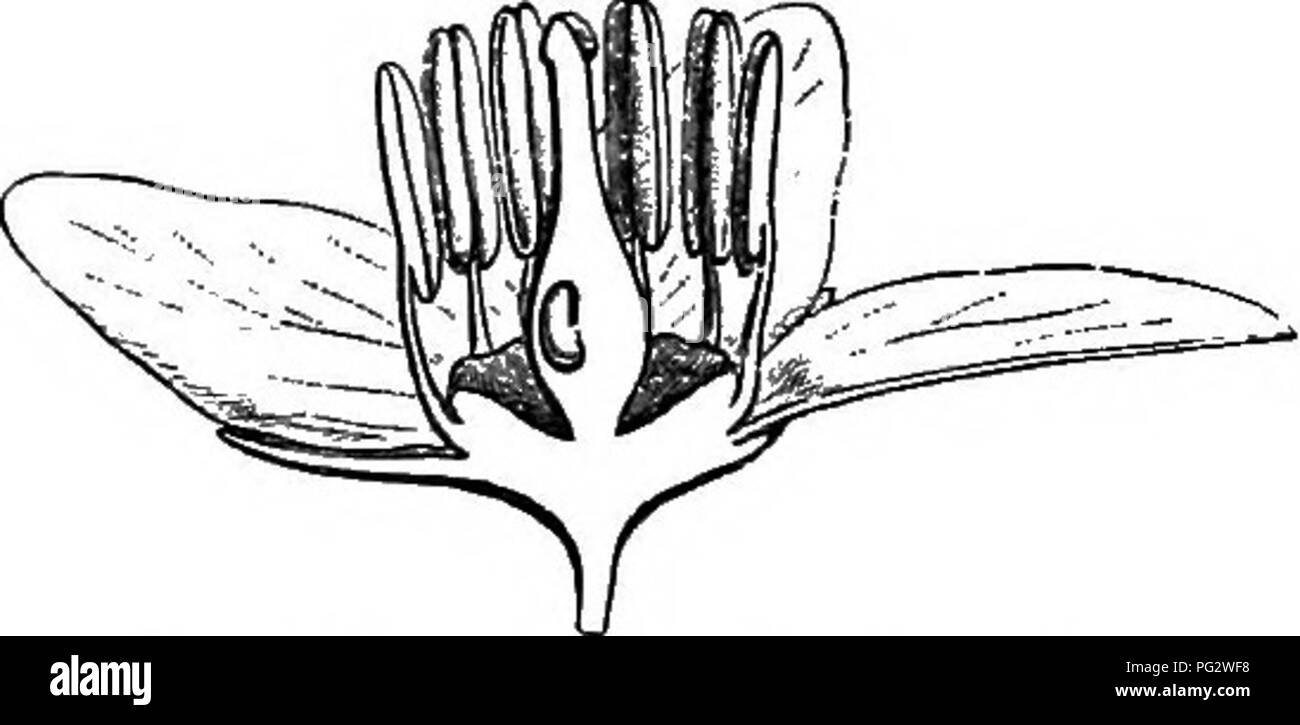 . The natural history of plants. Botany. Fig 280. Hermaphrodite flower (f). Kg. 281. Longitudinal section of flower. Soswellia papyracm. concave receptacle, often cup-shaped, more rarely in the form of a deep sac; this characterises Santiria^ often separated genericaUy from Canarium for this reason. The stamens, generally six in num- ber, and more or less perigynous, are usually free, more rarely mona- delphous at the base. The majority of the characters of any importance are therefore most variable in this genus; but all its species have this ia common, that their fruit is an elongated drupe, Stock Photohttps://www.alamy.com/image-license-details/?v=1https://www.alamy.com/the-natural-history-of-plants-botany-fig-280-hermaphrodite-flower-f-kg-281-longitudinal-section-of-flower-soswellia-papyracm-concave-receptacle-often-cup-shaped-more-rarely-in-the-form-of-a-deep-sac-this-characterises-santiria-often-separated-genericauy-from-canarium-for-this-reason-the-stamens-generally-six-in-num-ber-and-more-or-less-perigynous-are-usually-free-more-rarely-mona-delphous-at-the-base-the-majority-of-the-characters-of-any-importance-are-therefore-most-variable-in-this-genus-but-all-its-species-have-this-ia-common-that-their-fruit-is-an-elongated-drupe-image216422844.html
. The natural history of plants. Botany. Fig 280. Hermaphrodite flower (f). Kg. 281. Longitudinal section of flower. Soswellia papyracm. concave receptacle, often cup-shaped, more rarely in the form of a deep sac; this characterises Santiria^ often separated genericaUy from Canarium for this reason. The stamens, generally six in num- ber, and more or less perigynous, are usually free, more rarely mona- delphous at the base. The majority of the characters of any importance are therefore most variable in this genus; but all its species have this ia common, that their fruit is an elongated drupe, Stock Photohttps://www.alamy.com/image-license-details/?v=1https://www.alamy.com/the-natural-history-of-plants-botany-fig-280-hermaphrodite-flower-f-kg-281-longitudinal-section-of-flower-soswellia-papyracm-concave-receptacle-often-cup-shaped-more-rarely-in-the-form-of-a-deep-sac-this-characterises-santiria-often-separated-genericauy-from-canarium-for-this-reason-the-stamens-generally-six-in-num-ber-and-more-or-less-perigynous-are-usually-free-more-rarely-mona-delphous-at-the-base-the-majority-of-the-characters-of-any-importance-are-therefore-most-variable-in-this-genus-but-all-its-species-have-this-ia-common-that-their-fruit-is-an-elongated-drupe-image216422844.htmlRMPG2WF8–. The natural history of plants. Botany. Fig 280. Hermaphrodite flower (f). Kg. 281. Longitudinal section of flower. Soswellia papyracm. concave receptacle, often cup-shaped, more rarely in the form of a deep sac; this characterises Santiria^ often separated genericaUy from Canarium for this reason. The stamens, generally six in num- ber, and more or less perigynous, are usually free, more rarely mona- delphous at the base. The majority of the characters of any importance are therefore most variable in this genus; but all its species have this ia common, that their fruit is an elongated drupe,
 Flowering Flowers of Colour and Beauty Stock Photohttps://www.alamy.com/image-license-details/?v=1https://www.alamy.com/stock-photo-flowering-flowers-of-colour-and-beauty-147785152.html
Flowering Flowers of Colour and Beauty Stock Photohttps://www.alamy.com/image-license-details/?v=1https://www.alamy.com/stock-photo-flowering-flowers-of-colour-and-beauty-147785152.htmlRFJGC5D4–Flowering Flowers of Colour and Beauty
 . The standard cyclopedia of horticulture; a discussion, for the amateur, and the professional and commercial grower, of the kinds, characteristics and methods of cultivation of the species of plants grown in the regions of the United States and Canada for ornament, for fancy, for fruit and for vegetables; with keys to the natural families and genera, descriptions of the horticultural capabilities of the states and provinces and dependent islands, and sketches of eminent horticulturists . because of the perigynous flowers, but thespiral arrangement is not that of this latter family.The aromati Stock Photohttps://www.alamy.com/image-license-details/?v=1https://www.alamy.com/the-standard-cyclopedia-of-horticulture-a-discussion-for-the-amateur-and-the-professional-and-commercial-grower-of-the-kinds-characteristics-and-methods-of-cultivation-of-the-species-of-plants-grown-in-the-regions-of-the-united-states-and-canada-for-ornament-for-fancy-for-fruit-and-for-vegetables-with-keys-to-the-natural-families-and-genera-descriptions-of-the-horticultural-capabilities-of-the-states-and-provinces-and-dependent-islands-and-sketches-of-eminent-horticulturists-because-of-the-perigynous-flowers-but-thespiral-arrangement-is-not-that-of-this-latter-familythe-aromati-image369653808.html
. The standard cyclopedia of horticulture; a discussion, for the amateur, and the professional and commercial grower, of the kinds, characteristics and methods of cultivation of the species of plants grown in the regions of the United States and Canada for ornament, for fancy, for fruit and for vegetables; with keys to the natural families and genera, descriptions of the horticultural capabilities of the states and provinces and dependent islands, and sketches of eminent horticulturists . because of the perigynous flowers, but thespiral arrangement is not that of this latter family.The aromati Stock Photohttps://www.alamy.com/image-license-details/?v=1https://www.alamy.com/the-standard-cyclopedia-of-horticulture-a-discussion-for-the-amateur-and-the-professional-and-commercial-grower-of-the-kinds-characteristics-and-methods-of-cultivation-of-the-species-of-plants-grown-in-the-regions-of-the-united-states-and-canada-for-ornament-for-fancy-for-fruit-and-for-vegetables-with-keys-to-the-natural-families-and-genera-descriptions-of-the-horticultural-capabilities-of-the-states-and-provinces-and-dependent-islands-and-sketches-of-eminent-horticulturists-because-of-the-perigynous-flowers-but-thespiral-arrangement-is-not-that-of-this-latter-familythe-aromati-image369653808.htmlRM2CDB55M–. The standard cyclopedia of horticulture; a discussion, for the amateur, and the professional and commercial grower, of the kinds, characteristics and methods of cultivation of the species of plants grown in the regions of the United States and Canada for ornament, for fancy, for fruit and for vegetables; with keys to the natural families and genera, descriptions of the horticultural capabilities of the states and provinces and dependent islands, and sketches of eminent horticulturists . because of the perigynous flowers, but thespiral arrangement is not that of this latter family.The aromati
 . Lessons in botany. Botany. CHAPTER XLIII. DICOTYLEDONS (Continued). Topic VI: Dicotyledons with distinct petals and perigynous or epigynous flowers. Many trees and shrubs. Order JEscvlwje. 422. Lesson X. The maple family (aceracese).—Figure 223 represents a spray of the leaves and flowers of the sugar maple. Fig. 223. Spray of leaves and flowers of the sugar maple. (Acer saccharinum), a large and handsome tree. The leaves are opposite, somewhat ovate and heart-shaped, with three to 262. Please note that these images are extracted from scanned page images that may have been digitally enhanced Stock Photohttps://www.alamy.com/image-license-details/?v=1https://www.alamy.com/lessons-in-botany-botany-chapter-xliii-dicotyledons-continued-topic-vi-dicotyledons-with-distinct-petals-and-perigynous-or-epigynous-flowers-many-trees-and-shrubs-order-jescvlwje-422-lesson-x-the-maple-family-aceracesefigure-223-represents-a-spray-of-the-leaves-and-flowers-of-the-sugar-maple-fig-223-spray-of-leaves-and-flowers-of-the-sugar-maple-acer-saccharinum-a-large-and-handsome-tree-the-leaves-are-opposite-somewhat-ovate-and-heart-shaped-with-three-to-262-please-note-that-these-images-are-extracted-from-scanned-page-images-that-may-have-been-digitally-enhanced-image216359254.html
. Lessons in botany. Botany. CHAPTER XLIII. DICOTYLEDONS (Continued). Topic VI: Dicotyledons with distinct petals and perigynous or epigynous flowers. Many trees and shrubs. Order JEscvlwje. 422. Lesson X. The maple family (aceracese).—Figure 223 represents a spray of the leaves and flowers of the sugar maple. Fig. 223. Spray of leaves and flowers of the sugar maple. (Acer saccharinum), a large and handsome tree. The leaves are opposite, somewhat ovate and heart-shaped, with three to 262. Please note that these images are extracted from scanned page images that may have been digitally enhanced Stock Photohttps://www.alamy.com/image-license-details/?v=1https://www.alamy.com/lessons-in-botany-botany-chapter-xliii-dicotyledons-continued-topic-vi-dicotyledons-with-distinct-petals-and-perigynous-or-epigynous-flowers-many-trees-and-shrubs-order-jescvlwje-422-lesson-x-the-maple-family-aceracesefigure-223-represents-a-spray-of-the-leaves-and-flowers-of-the-sugar-maple-fig-223-spray-of-leaves-and-flowers-of-the-sugar-maple-acer-saccharinum-a-large-and-handsome-tree-the-leaves-are-opposite-somewhat-ovate-and-heart-shaped-with-three-to-262-please-note-that-these-images-are-extracted-from-scanned-page-images-that-may-have-been-digitally-enhanced-image216359254.htmlRMPG00C6–. Lessons in botany. Botany. CHAPTER XLIII. DICOTYLEDONS (Continued). Topic VI: Dicotyledons with distinct petals and perigynous or epigynous flowers. Many trees and shrubs. Order JEscvlwje. 422. Lesson X. The maple family (aceracese).—Figure 223 represents a spray of the leaves and flowers of the sugar maple. Fig. 223. Spray of leaves and flowers of the sugar maple. (Acer saccharinum), a large and handsome tree. The leaves are opposite, somewhat ovate and heart-shaped, with three to 262. Please note that these images are extracted from scanned page images that may have been digitally enhanced
 Flowering Flowers of Colour and Beauty Stock Photohttps://www.alamy.com/image-license-details/?v=1https://www.alamy.com/stock-photo-flowering-flowers-of-colour-and-beauty-147785253.html
Flowering Flowers of Colour and Beauty Stock Photohttps://www.alamy.com/image-license-details/?v=1https://www.alamy.com/stock-photo-flowering-flowers-of-colour-and-beauty-147785253.htmlRFJGC5GN–Flowering Flowers of Colour and Beauty
 . The vegetable kingdom : or, The structure, classification, and uses of plants, illustrated upon the natural system. Fig. CCCCXXI. Fig. CCCCXXI.—Schubertia multiflora. 1. the anthers united to the stigma ; 2. the ovary andstigma, from the latter of which the pollen masses have been removed ; 3. a pair of pendulous pollenmasses, with their gland ; 4. the ripe follicles. S S 2 628 CORDIACE^. [Perigynous Exogens.. .-. J^zi^^ Stock Photohttps://www.alamy.com/image-license-details/?v=1https://www.alamy.com/the-vegetable-kingdom-or-the-structure-classification-and-uses-of-plants-illustrated-upon-the-natural-system-fig-ccccxxi-fig-ccccxxischubertia-multiflora-1-the-anthers-united-to-the-stigma-2-the-ovary-andstigma-from-the-latter-of-which-the-pollen-masses-have-been-removed-3-a-pair-of-pendulous-pollenmasses-with-their-gland-4-the-ripe-follicles-s-s-2-628-cordiace-perigynous-exogens-jzi-image370563178.html
. The vegetable kingdom : or, The structure, classification, and uses of plants, illustrated upon the natural system. Fig. CCCCXXI. Fig. CCCCXXI.—Schubertia multiflora. 1. the anthers united to the stigma ; 2. the ovary andstigma, from the latter of which the pollen masses have been removed ; 3. a pair of pendulous pollenmasses, with their gland ; 4. the ripe follicles. S S 2 628 CORDIACE^. [Perigynous Exogens.. .-. J^zi^^ Stock Photohttps://www.alamy.com/image-license-details/?v=1https://www.alamy.com/the-vegetable-kingdom-or-the-structure-classification-and-uses-of-plants-illustrated-upon-the-natural-system-fig-ccccxxi-fig-ccccxxischubertia-multiflora-1-the-anthers-united-to-the-stigma-2-the-ovary-andstigma-from-the-latter-of-which-the-pollen-masses-have-been-removed-3-a-pair-of-pendulous-pollenmasses-with-their-gland-4-the-ripe-follicles-s-s-2-628-cordiace-perigynous-exogens-jzi-image370563178.htmlRM2CETH36–. The vegetable kingdom : or, The structure, classification, and uses of plants, illustrated upon the natural system. Fig. CCCCXXI. Fig. CCCCXXI.—Schubertia multiflora. 1. the anthers united to the stigma ; 2. the ovary andstigma, from the latter of which the pollen masses have been removed ; 3. a pair of pendulous pollenmasses, with their gland ; 4. the ripe follicles. S S 2 628 CORDIACE^. [Perigynous Exogens.. .-. J^zi^^
 . Analytical class-book of botany : designed for academies and private students. Plants. OKDEK XVII. CISTACE^. OEDEK XXIV. TILIAOEJS. 109 loculioidal dehiscence, and 2—5 parietal placentae. Seeds usually many. Embryo small. A small order of marsh plants, of which Drosera, or the Sun-dew^ is an ex- ample. To this order the following suborder is usually appended:— Sdu-oeder.—Paesassle. Plants without glandular hairs, the petals imbricate in prefloration, and furnished with 5 appendages opposite each petal, consisting of several sterile stamens united together. Stamens somewhat perigynous. Anther Stock Photohttps://www.alamy.com/image-license-details/?v=1https://www.alamy.com/analytical-class-book-of-botany-designed-for-academies-and-private-students-plants-okdek-xvii-cistace-oedek-xxiv-tiliaoejs-109-loculioidal-dehiscence-and-25-parietal-placentae-seeds-usually-many-embryo-small-a-small-order-of-marsh-plants-of-which-drosera-or-the-sun-dew-is-an-ex-ample-to-this-order-the-following-suborder-is-usually-appended-sdu-oederpaesassle-plants-without-glandular-hairs-the-petals-imbricate-in-prefloration-and-furnished-with-5-appendages-opposite-each-petal-consisting-of-several-sterile-stamens-united-together-stamens-somewhat-perigynous-anther-image216367651.html
. Analytical class-book of botany : designed for academies and private students. Plants. OKDEK XVII. CISTACE^. OEDEK XXIV. TILIAOEJS. 109 loculioidal dehiscence, and 2—5 parietal placentae. Seeds usually many. Embryo small. A small order of marsh plants, of which Drosera, or the Sun-dew^ is an ex- ample. To this order the following suborder is usually appended:— Sdu-oeder.—Paesassle. Plants without glandular hairs, the petals imbricate in prefloration, and furnished with 5 appendages opposite each petal, consisting of several sterile stamens united together. Stamens somewhat perigynous. Anther Stock Photohttps://www.alamy.com/image-license-details/?v=1https://www.alamy.com/analytical-class-book-of-botany-designed-for-academies-and-private-students-plants-okdek-xvii-cistace-oedek-xxiv-tiliaoejs-109-loculioidal-dehiscence-and-25-parietal-placentae-seeds-usually-many-embryo-small-a-small-order-of-marsh-plants-of-which-drosera-or-the-sun-dew-is-an-ex-ample-to-this-order-the-following-suborder-is-usually-appended-sdu-oederpaesassle-plants-without-glandular-hairs-the-petals-imbricate-in-prefloration-and-furnished-with-5-appendages-opposite-each-petal-consisting-of-several-sterile-stamens-united-together-stamens-somewhat-perigynous-anther-image216367651.htmlRMPG0B43–. Analytical class-book of botany : designed for academies and private students. Plants. OKDEK XVII. CISTACE^. OEDEK XXIV. TILIAOEJS. 109 loculioidal dehiscence, and 2—5 parietal placentae. Seeds usually many. Embryo small. A small order of marsh plants, of which Drosera, or the Sun-dew^ is an ex- ample. To this order the following suborder is usually appended:— Sdu-oeder.—Paesassle. Plants without glandular hairs, the petals imbricate in prefloration, and furnished with 5 appendages opposite each petal, consisting of several sterile stamens united together. Stamens somewhat perigynous. Anther
 Flowering Flowers of Colour and Beauty Stock Photohttps://www.alamy.com/image-license-details/?v=1https://www.alamy.com/stock-photo-flowering-flowers-of-colour-and-beauty-147784960.html
Flowering Flowers of Colour and Beauty Stock Photohttps://www.alamy.com/image-license-details/?v=1https://www.alamy.com/stock-photo-flowering-flowers-of-colour-and-beauty-147784960.htmlRFJGC568–Flowering Flowers of Colour and Beauty
 . The vegetable kingdom : or, The structure, classification, and uses of plants, illustrated upon the natural system. hole Portulaceous Order as it stands here,it is plain that such a distinction has no existence.I have, therefore, thought it ad^^sable to reject aportion of Endlicher and Fenzls Purslanes, in whichthe perigynous msertion is very marked, placmg them in the Ficoidal Alliance, whileall his hypogynous genera vith symmetrical flowers are conveniently arranged amongthe Cloveworts. The principal deviation from the general featmes ofthe Order strictlylimited, consists in some species Stock Photohttps://www.alamy.com/image-license-details/?v=1https://www.alamy.com/the-vegetable-kingdom-or-the-structure-classification-and-uses-of-plants-illustrated-upon-the-natural-system-hole-portulaceous-order-as-it-stands-hereit-is-plain-that-such-a-distinction-has-no-existencei-have-therefore-thought-it-adsable-to-reject-aportion-of-endlicher-and-fenzls-purslanes-in-whichthe-perigynous-msertion-is-very-marked-placmg-them-in-the-ficoidal-alliance-whileall-his-hypogynous-genera-vith-symmetrical-flowers-are-conveniently-arranged-amongthe-cloveworts-the-principal-deviation-from-the-general-featmes-ofthe-order-strictlylimited-consists-in-some-species-image370570934.html
. The vegetable kingdom : or, The structure, classification, and uses of plants, illustrated upon the natural system. hole Portulaceous Order as it stands here,it is plain that such a distinction has no existence.I have, therefore, thought it ad^^sable to reject aportion of Endlicher and Fenzls Purslanes, in whichthe perigynous msertion is very marked, placmg them in the Ficoidal Alliance, whileall his hypogynous genera vith symmetrical flowers are conveniently arranged amongthe Cloveworts. The principal deviation from the general featmes ofthe Order strictlylimited, consists in some species Stock Photohttps://www.alamy.com/image-license-details/?v=1https://www.alamy.com/the-vegetable-kingdom-or-the-structure-classification-and-uses-of-plants-illustrated-upon-the-natural-system-hole-portulaceous-order-as-it-stands-hereit-is-plain-that-such-a-distinction-has-no-existencei-have-therefore-thought-it-adsable-to-reject-aportion-of-endlicher-and-fenzls-purslanes-in-whichthe-perigynous-msertion-is-very-marked-placmg-them-in-the-ficoidal-alliance-whileall-his-hypogynous-genera-vith-symmetrical-flowers-are-conveniently-arranged-amongthe-cloveworts-the-principal-deviation-from-the-general-featmes-ofthe-order-strictlylimited-consists-in-some-species-image370570934.htmlRM2CETY06–. The vegetable kingdom : or, The structure, classification, and uses of plants, illustrated upon the natural system. hole Portulaceous Order as it stands here,it is plain that such a distinction has no existence.I have, therefore, thought it ad^^sable to reject aportion of Endlicher and Fenzls Purslanes, in whichthe perigynous msertion is very marked, placmg them in the Ficoidal Alliance, whileall his hypogynous genera vith symmetrical flowers are conveniently arranged amongthe Cloveworts. The principal deviation from the general featmes ofthe Order strictlylimited, consists in some species
 . Trees and shrubs : an abridgment of the Arboretum et fruticetum britannicum : containing the hardy trees and schrubs of Britain, native and foreign, scientifically and popularly described : with their propagation, culture and uses and engravings of nearly all the species. Trees; Shrubs; Forests and forestry. 1328. C. Fall^ta Order LIX. ZAURA^CE^. OnD. Char. Perianth 4—6-cleft; aestivation imbricate. Stamens definite, perigynous; opposite the segments, but often double their number, in two series. Anthers adnate, 2—4-celled. Ovarium free, 1-seeded. Style and Stigma simple. Fruit a berry or dr Stock Photohttps://www.alamy.com/image-license-details/?v=1https://www.alamy.com/trees-and-shrubs-an-abridgment-of-the-arboretum-et-fruticetum-britannicum-containing-the-hardy-trees-and-schrubs-of-britain-native-and-foreign-scientifically-and-popularly-described-with-their-propagation-culture-and-uses-and-engravings-of-nearly-all-the-species-trees-shrubs-forests-and-forestry-1328-c-fallta-order-lix-zaurace-ond-char-perianth-46-cleft-aestivation-imbricate-stamens-definite-perigynous-opposite-the-segments-but-often-double-their-number-in-two-series-anthers-adnate-24-celled-ovarium-free-1-seeded-style-and-stigma-simple-fruit-a-berry-or-dr-image216397421.html
. Trees and shrubs : an abridgment of the Arboretum et fruticetum britannicum : containing the hardy trees and schrubs of Britain, native and foreign, scientifically and popularly described : with their propagation, culture and uses and engravings of nearly all the species. Trees; Shrubs; Forests and forestry. 1328. C. Fall^ta Order LIX. ZAURA^CE^. OnD. Char. Perianth 4—6-cleft; aestivation imbricate. Stamens definite, perigynous; opposite the segments, but often double their number, in two series. Anthers adnate, 2—4-celled. Ovarium free, 1-seeded. Style and Stigma simple. Fruit a berry or dr Stock Photohttps://www.alamy.com/image-license-details/?v=1https://www.alamy.com/trees-and-shrubs-an-abridgment-of-the-arboretum-et-fruticetum-britannicum-containing-the-hardy-trees-and-schrubs-of-britain-native-and-foreign-scientifically-and-popularly-described-with-their-propagation-culture-and-uses-and-engravings-of-nearly-all-the-species-trees-shrubs-forests-and-forestry-1328-c-fallta-order-lix-zaurace-ond-char-perianth-46-cleft-aestivation-imbricate-stamens-definite-perigynous-opposite-the-segments-but-often-double-their-number-in-two-series-anthers-adnate-24-celled-ovarium-free-1-seeded-style-and-stigma-simple-fruit-a-berry-or-dr-image216397421.htmlRMPG1N39–. Trees and shrubs : an abridgment of the Arboretum et fruticetum britannicum : containing the hardy trees and schrubs of Britain, native and foreign, scientifically and popularly described : with their propagation, culture and uses and engravings of nearly all the species. Trees; Shrubs; Forests and forestry. 1328. C. Fall^ta Order LIX. ZAURA^CE^. OnD. Char. Perianth 4—6-cleft; aestivation imbricate. Stamens definite, perigynous; opposite the segments, but often double their number, in two series. Anthers adnate, 2—4-celled. Ovarium free, 1-seeded. Style and Stigma simple. Fruit a berry or dr
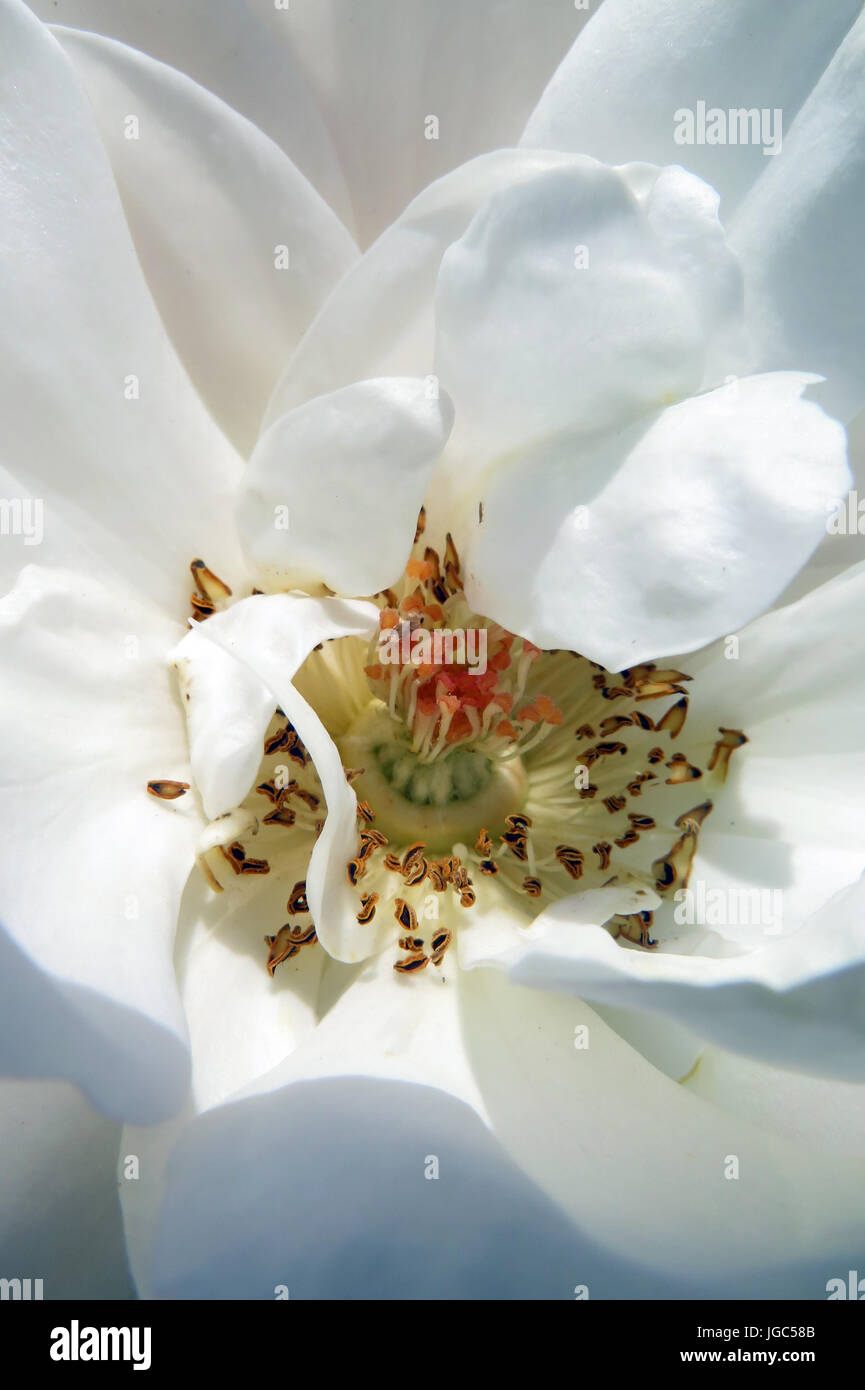 Flowering Flowers of Colour and Beauty Stock Photohttps://www.alamy.com/image-license-details/?v=1https://www.alamy.com/stock-photo-flowering-flowers-of-colour-and-beauty-147785019.html
Flowering Flowers of Colour and Beauty Stock Photohttps://www.alamy.com/image-license-details/?v=1https://www.alamy.com/stock-photo-flowering-flowers-of-colour-and-beauty-147785019.htmlRFJGC58B–Flowering Flowers of Colour and Beauty
 . The vegetable kingdom : or, The structure, classification, and uses of plants, illustrated upon the natural system. CCCCLIII. the structure of its calyx, in its four distinct placentae, horizontal, not suspended oules, Fig. CCCCLII.—Crescentia obovata. 1. a cross section of its ovary.Fig. CCCCLIII.—Cross section of fruit of Crescentia cucurbitina.X X 674 CRESCENTIACEiE. [Perigynous Exogens. and particularly in habit. The same observations apply to Pedahaceae, which are also1-celled; for although the ripe fruit of both them and Cj-rtandracese possesses apparentlymore than one cell, as if pro Stock Photohttps://www.alamy.com/image-license-details/?v=1https://www.alamy.com/the-vegetable-kingdom-or-the-structure-classification-and-uses-of-plants-illustrated-upon-the-natural-system-ccccliii-the-structure-of-its-calyx-in-its-four-distinct-placentae-horizontal-not-suspended-oules-fig-ccccliicrescentia-obovata-1-a-cross-section-of-its-ovaryfig-ccccliiicross-section-of-fruit-of-crescentia-cucurbitinax-x-674-crescentiaceie-perigynous-exogens-and-particularly-in-habit-the-same-observations-apply-to-pedahaceae-which-are-also1-celled-for-although-the-ripe-fruit-of-both-them-and-cj-rtandracese-possesses-apparentlymore-than-one-cell-as-if-pro-image370560314.html
. The vegetable kingdom : or, The structure, classification, and uses of plants, illustrated upon the natural system. CCCCLIII. the structure of its calyx, in its four distinct placentae, horizontal, not suspended oules, Fig. CCCCLII.—Crescentia obovata. 1. a cross section of its ovary.Fig. CCCCLIII.—Cross section of fruit of Crescentia cucurbitina.X X 674 CRESCENTIACEiE. [Perigynous Exogens. and particularly in habit. The same observations apply to Pedahaceae, which are also1-celled; for although the ripe fruit of both them and Cj-rtandracese possesses apparentlymore than one cell, as if pro Stock Photohttps://www.alamy.com/image-license-details/?v=1https://www.alamy.com/the-vegetable-kingdom-or-the-structure-classification-and-uses-of-plants-illustrated-upon-the-natural-system-ccccliii-the-structure-of-its-calyx-in-its-four-distinct-placentae-horizontal-not-suspended-oules-fig-ccccliicrescentia-obovata-1-a-cross-section-of-its-ovaryfig-ccccliiicross-section-of-fruit-of-crescentia-cucurbitinax-x-674-crescentiaceie-perigynous-exogens-and-particularly-in-habit-the-same-observations-apply-to-pedahaceae-which-are-also1-celled-for-although-the-ripe-fruit-of-both-them-and-cj-rtandracese-possesses-apparentlymore-than-one-cell-as-if-pro-image370560314.htmlRM2CETDCX–. The vegetable kingdom : or, The structure, classification, and uses of plants, illustrated upon the natural system. CCCCLIII. the structure of its calyx, in its four distinct placentae, horizontal, not suspended oules, Fig. CCCCLII.—Crescentia obovata. 1. a cross section of its ovary.Fig. CCCCLIII.—Cross section of fruit of Crescentia cucurbitina.X X 674 CRESCENTIACEiE. [Perigynous Exogens. and particularly in habit. The same observations apply to Pedahaceae, which are also1-celled; for although the ripe fruit of both them and Cj-rtandracese possesses apparentlymore than one cell, as if pro
 Flowering Flowers of Colour and Beauty Stock Photohttps://www.alamy.com/image-license-details/?v=1https://www.alamy.com/stock-photo-flowering-flowers-of-colour-and-beauty-147785518.html
Flowering Flowers of Colour and Beauty Stock Photohttps://www.alamy.com/image-license-details/?v=1https://www.alamy.com/stock-photo-flowering-flowers-of-colour-and-beauty-147785518.htmlRFJGC5X6–Flowering Flowers of Colour and Beauty
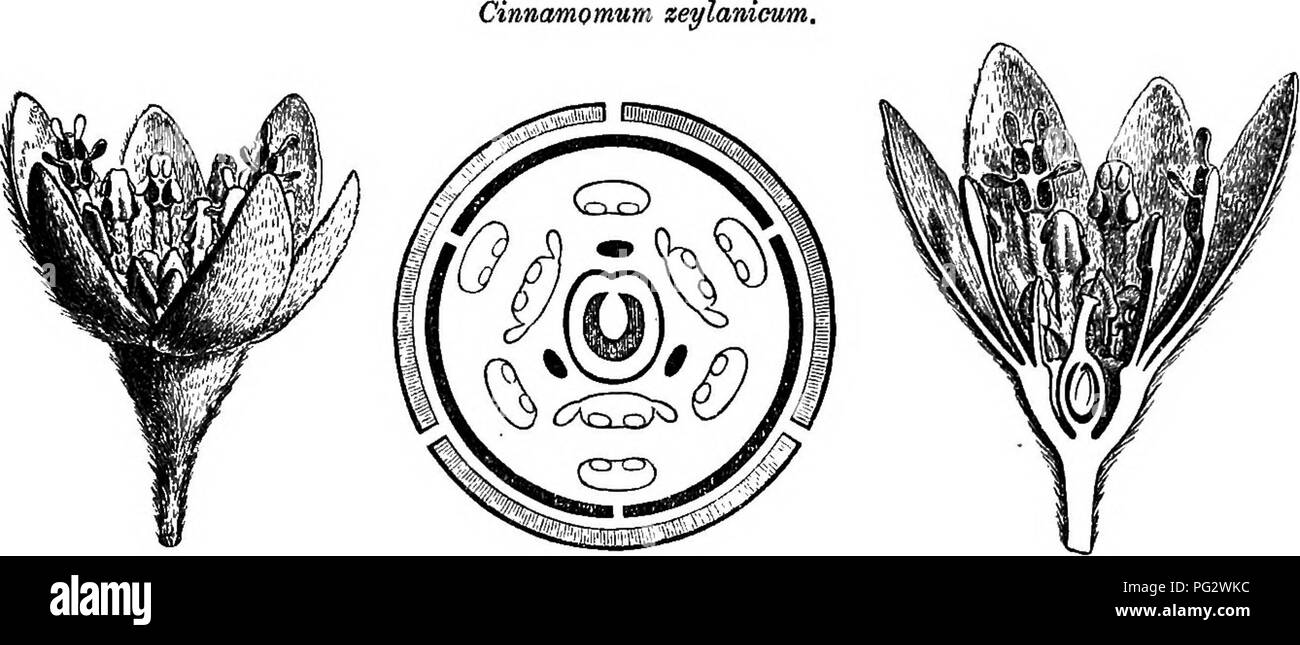 . The natural history of plants. Botany. LAUBAOEJE. 427 The receptacle forms a pretty deep cup, on whose edges are inserted a perigynous perianth and androceum, and which contains the gynseceum in its cavity. The perianth is double : the three outer leaves or sepals are free and equal, coloured, and valvate in the bud. The three inner leaves, alternate with these, form a regular verticil.. Fio. 241. Flower (f). Fia. 242. Diagram. Fi&. 243. Long, section of flower. which must be considered a corolla,^ also of valvate prsefloration (fig. 342). The androceum consists of four verticils also tr Stock Photohttps://www.alamy.com/image-license-details/?v=1https://www.alamy.com/the-natural-history-of-plants-botany-laubaoeje-427-the-receptacle-forms-a-pretty-deep-cup-on-whose-edges-are-inserted-a-perigynous-perianth-and-androceum-and-which-contains-the-gynseceum-in-its-cavity-the-perianth-is-double-the-three-outer-leaves-or-sepals-are-free-and-equal-coloured-and-valvate-in-the-bud-the-three-inner-leaves-alternate-with-these-form-a-regular-verticil-fio-241-flower-f-fia-242-diagram-fiamp-243-long-section-of-flower-which-must-be-considered-a-corolla-also-of-valvate-prsefloration-fig-342-the-androceum-consists-of-four-verticils-also-tr-image216422960.html
. The natural history of plants. Botany. LAUBAOEJE. 427 The receptacle forms a pretty deep cup, on whose edges are inserted a perigynous perianth and androceum, and which contains the gynseceum in its cavity. The perianth is double : the three outer leaves or sepals are free and equal, coloured, and valvate in the bud. The three inner leaves, alternate with these, form a regular verticil.. Fio. 241. Flower (f). Fia. 242. Diagram. Fi&. 243. Long, section of flower. which must be considered a corolla,^ also of valvate prsefloration (fig. 342). The androceum consists of four verticils also tr Stock Photohttps://www.alamy.com/image-license-details/?v=1https://www.alamy.com/the-natural-history-of-plants-botany-laubaoeje-427-the-receptacle-forms-a-pretty-deep-cup-on-whose-edges-are-inserted-a-perigynous-perianth-and-androceum-and-which-contains-the-gynseceum-in-its-cavity-the-perianth-is-double-the-three-outer-leaves-or-sepals-are-free-and-equal-coloured-and-valvate-in-the-bud-the-three-inner-leaves-alternate-with-these-form-a-regular-verticil-fio-241-flower-f-fia-242-diagram-fiamp-243-long-section-of-flower-which-must-be-considered-a-corolla-also-of-valvate-prsefloration-fig-342-the-androceum-consists-of-four-verticils-also-tr-image216422960.htmlRMPG2WKC–. The natural history of plants. Botany. LAUBAOEJE. 427 The receptacle forms a pretty deep cup, on whose edges are inserted a perigynous perianth and androceum, and which contains the gynseceum in its cavity. The perianth is double : the three outer leaves or sepals are free and equal, coloured, and valvate in the bud. The three inner leaves, alternate with these, form a regular verticil.. Fio. 241. Flower (f). Fia. 242. Diagram. Fi&. 243. Long, section of flower. which must be considered a corolla,^ also of valvate prsefloration (fig. 342). The androceum consists of four verticils also tr
 Flowering Flowers of Colour and Beauty Stock Photohttps://www.alamy.com/image-license-details/?v=1https://www.alamy.com/stock-photo-flowering-flowers-of-colour-and-beauty-147785005.html
Flowering Flowers of Colour and Beauty Stock Photohttps://www.alamy.com/image-license-details/?v=1https://www.alamy.com/stock-photo-flowering-flowers-of-colour-and-beauty-147785005.htmlRFJGC57W–Flowering Flowers of Colour and Beauty
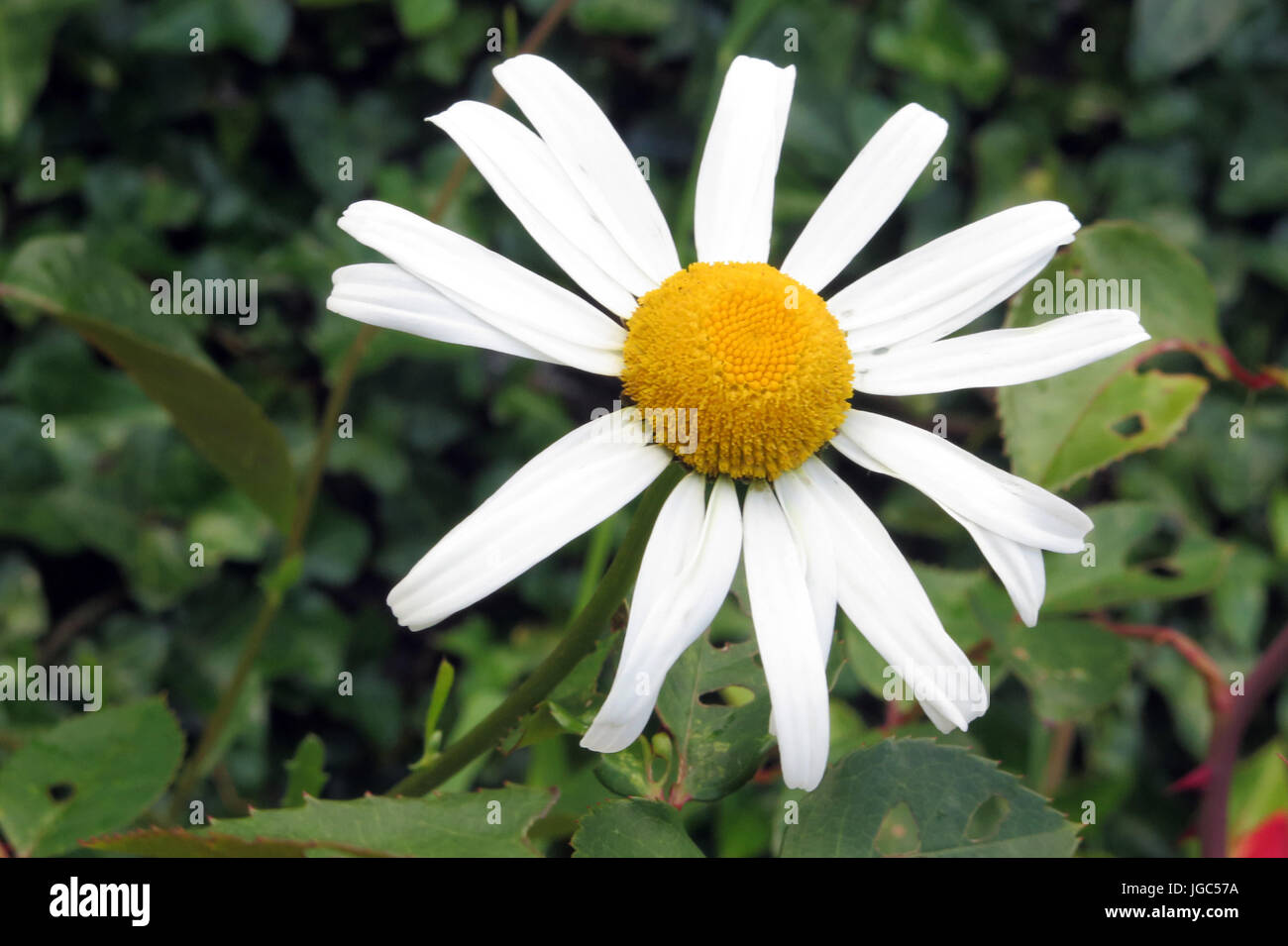 Flowering Flowers of Colour and Beauty Stock Photohttps://www.alamy.com/image-license-details/?v=1https://www.alamy.com/stock-photo-flowering-flowers-of-colour-and-beauty-147784990.html
Flowering Flowers of Colour and Beauty Stock Photohttps://www.alamy.com/image-license-details/?v=1https://www.alamy.com/stock-photo-flowering-flowers-of-colour-and-beauty-147784990.htmlRFJGC57A–Flowering Flowers of Colour and Beauty
 . The elements of structural botany... . corolla consists of four petals, free from eachother, and is consequently polypetalous. It- is alsoregular, the petals being alike in size and shape. Eachpetal is narrowed at the base into what is called thedaw of the petal, the broad part, as in the ordinaryfoliage-leaf, being the blade. The stamens are eight in number (octandrous), fourshort and four long, and are attached to the calyx(perigynous). 41. The pistil has its three parts, ovary, style, andstigma, very distinctly marked. The stigma consistsof four long lobes, which curl outwards after the f Stock Photohttps://www.alamy.com/image-license-details/?v=1https://www.alamy.com/the-elements-of-structural-botany-corolla-consists-of-four-petals-free-from-eachother-and-is-consequently-polypetalous-it-is-alsoregular-the-petals-being-alike-in-size-and-shape-eachpetal-is-narrowed-at-the-base-into-what-is-called-thedaw-of-the-petal-the-broad-part-as-in-the-ordinaryfoliage-leaf-being-the-blade-the-stamens-are-eight-in-number-octandrous-fourshort-and-four-long-and-are-attached-to-the-calyxperigynous-41-the-pistil-has-its-three-parts-ovary-style-andstigma-very-distinctly-marked-the-stigma-consistsof-four-long-lobes-which-curl-outwards-after-the-f-image371644284.html
. The elements of structural botany... . corolla consists of four petals, free from eachother, and is consequently polypetalous. It- is alsoregular, the petals being alike in size and shape. Eachpetal is narrowed at the base into what is called thedaw of the petal, the broad part, as in the ordinaryfoliage-leaf, being the blade. The stamens are eight in number (octandrous), fourshort and four long, and are attached to the calyx(perigynous). 41. The pistil has its three parts, ovary, style, andstigma, very distinctly marked. The stigma consistsof four long lobes, which curl outwards after the f Stock Photohttps://www.alamy.com/image-license-details/?v=1https://www.alamy.com/the-elements-of-structural-botany-corolla-consists-of-four-petals-free-from-eachother-and-is-consequently-polypetalous-it-is-alsoregular-the-petals-being-alike-in-size-and-shape-eachpetal-is-narrowed-at-the-base-into-what-is-called-thedaw-of-the-petal-the-broad-part-as-in-the-ordinaryfoliage-leaf-being-the-blade-the-stamens-are-eight-in-number-octandrous-fourshort-and-four-long-and-are-attached-to-the-calyxperigynous-41-the-pistil-has-its-three-parts-ovary-style-andstigma-very-distinctly-marked-the-stigma-consistsof-four-long-lobes-which-curl-outwards-after-the-f-image371644284.htmlRM2CGHT24–. The elements of structural botany... . corolla consists of four petals, free from eachother, and is consequently polypetalous. It- is alsoregular, the petals being alike in size and shape. Eachpetal is narrowed at the base into what is called thedaw of the petal, the broad part, as in the ordinaryfoliage-leaf, being the blade. The stamens are eight in number (octandrous), fourshort and four long, and are attached to the calyx(perigynous). 41. The pistil has its three parts, ovary, style, andstigma, very distinctly marked. The stigma consistsof four long lobes, which curl outwards after the f
 . The natural history of plants. Botany. 294 NATURAL HISTORY OF PLANTS.. Fig. 270. Long. sect. of flower (-1). Fig. 271. Long, sect, of fruit. and Gassipourece have been given. The flowers are regular, with a receptacle in the form of a shallow cup, bearing on its margin five valvate and slightly reduplicate sepals, and five alternate petals, spoon-shaped at the base, with a limb divided into unequal lobes. ^ The perigynous stamens are inserted on the receptacle within the petals; they are formed Macarisia lanceoiata. oach of a free filament and an introrse bilo- cular anther, dehiscing by two Stock Photohttps://www.alamy.com/image-license-details/?v=1https://www.alamy.com/the-natural-history-of-plants-botany-294-natural-history-of-plants-fig-270-long-sect-of-flower-1-fig-271-long-sect-of-fruit-and-gassipourece-have-been-given-the-flowers-are-regular-with-a-receptacle-in-the-form-of-a-shallow-cup-bearing-on-its-margin-five-valvate-and-slightly-reduplicate-sepals-and-five-alternate-petals-spoon-shaped-at-the-base-with-a-limb-divided-into-unequal-lobes-the-perigynous-stamens-are-inserted-on-the-receptacle-within-the-petals-they-are-formed-macarisia-lanceoiata-oach-of-a-free-filament-and-an-introrse-bilo-cular-anther-dehiscing-by-two-image216401254.html
. The natural history of plants. Botany. 294 NATURAL HISTORY OF PLANTS.. Fig. 270. Long. sect. of flower (-1). Fig. 271. Long, sect, of fruit. and Gassipourece have been given. The flowers are regular, with a receptacle in the form of a shallow cup, bearing on its margin five valvate and slightly reduplicate sepals, and five alternate petals, spoon-shaped at the base, with a limb divided into unequal lobes. ^ The perigynous stamens are inserted on the receptacle within the petals; they are formed Macarisia lanceoiata. oach of a free filament and an introrse bilo- cular anther, dehiscing by two Stock Photohttps://www.alamy.com/image-license-details/?v=1https://www.alamy.com/the-natural-history-of-plants-botany-294-natural-history-of-plants-fig-270-long-sect-of-flower-1-fig-271-long-sect-of-fruit-and-gassipourece-have-been-given-the-flowers-are-regular-with-a-receptacle-in-the-form-of-a-shallow-cup-bearing-on-its-margin-five-valvate-and-slightly-reduplicate-sepals-and-five-alternate-petals-spoon-shaped-at-the-base-with-a-limb-divided-into-unequal-lobes-the-perigynous-stamens-are-inserted-on-the-receptacle-within-the-petals-they-are-formed-macarisia-lanceoiata-oach-of-a-free-filament-and-an-introrse-bilo-cular-anther-dehiscing-by-two-image216401254.htmlRMPG1X06–. The natural history of plants. Botany. 294 NATURAL HISTORY OF PLANTS.. Fig. 270. Long. sect. of flower (-1). Fig. 271. Long, sect, of fruit. and Gassipourece have been given. The flowers are regular, with a receptacle in the form of a shallow cup, bearing on its margin five valvate and slightly reduplicate sepals, and five alternate petals, spoon-shaped at the base, with a limb divided into unequal lobes. ^ The perigynous stamens are inserted on the receptacle within the petals; they are formed Macarisia lanceoiata. oach of a free filament and an introrse bilo- cular anther, dehiscing by two
 Flowering Flowers of Colour and Beauty Stock Photohttps://www.alamy.com/image-license-details/?v=1https://www.alamy.com/stock-photo-flowering-flowers-of-colour-and-beauty-147784973.html
Flowering Flowers of Colour and Beauty Stock Photohttps://www.alamy.com/image-license-details/?v=1https://www.alamy.com/stock-photo-flowering-flowers-of-colour-and-beauty-147784973.htmlRFJGC56N–Flowering Flowers of Colour and Beauty
 Flowering Flowers of Colour and Beauty Stock Photohttps://www.alamy.com/image-license-details/?v=1https://www.alamy.com/stock-photo-flowering-flowers-of-colour-and-beauty-147784938.html
Flowering Flowers of Colour and Beauty Stock Photohttps://www.alamy.com/image-license-details/?v=1https://www.alamy.com/stock-photo-flowering-flowers-of-colour-and-beauty-147784938.htmlRFJGC55E–Flowering Flowers of Colour and Beauty
 . The vegetable kingdom : or, The structure, classification, and uses of plants, illustrated upon the natural system. 3. a ripe fruit;. Fig. CCCCXL. Fig. CCCCXL.-4. embryo. U U 658 BRUNONIACE^. [Perigynous Exogens. or vascular cords are observable, which are continued into the style, where they becomeapproximated and parallel. This stmctme, so nearly resembling that of Compositse,seems to strengthen the analogical argument in favour of the hypothesis of the com-pound natvire of the pistillum in that Order, and of its type in ph^nogamous plantsgenerally ; Brunonia having an obvious and near aff Stock Photohttps://www.alamy.com/image-license-details/?v=1https://www.alamy.com/the-vegetable-kingdom-or-the-structure-classification-and-uses-of-plants-illustrated-upon-the-natural-system-3-a-ripe-fruit-fig-ccccxl-fig-ccccxl-4-embryo-u-u-658-brunoniace-perigynous-exogens-or-vascular-cords-are-observable-which-are-continued-into-the-style-where-they-becomeapproximated-and-parallel-this-stmctme-so-nearly-resembling-that-of-compositseseems-to-strengthen-the-analogical-argument-in-favour-of-the-hypothesis-of-the-com-pound-natvire-of-the-pistillum-in-that-order-and-of-its-type-in-phnogamous-plantsgenerally-brunonia-having-an-obvious-and-near-aff-image370561505.html
. The vegetable kingdom : or, The structure, classification, and uses of plants, illustrated upon the natural system. 3. a ripe fruit;. Fig. CCCCXL. Fig. CCCCXL.-4. embryo. U U 658 BRUNONIACE^. [Perigynous Exogens. or vascular cords are observable, which are continued into the style, where they becomeapproximated and parallel. This stmctme, so nearly resembling that of Compositse,seems to strengthen the analogical argument in favour of the hypothesis of the com-pound natvire of the pistillum in that Order, and of its type in ph^nogamous plantsgenerally ; Brunonia having an obvious and near aff Stock Photohttps://www.alamy.com/image-license-details/?v=1https://www.alamy.com/the-vegetable-kingdom-or-the-structure-classification-and-uses-of-plants-illustrated-upon-the-natural-system-3-a-ripe-fruit-fig-ccccxl-fig-ccccxl-4-embryo-u-u-658-brunoniace-perigynous-exogens-or-vascular-cords-are-observable-which-are-continued-into-the-style-where-they-becomeapproximated-and-parallel-this-stmctme-so-nearly-resembling-that-of-compositseseems-to-strengthen-the-analogical-argument-in-favour-of-the-hypothesis-of-the-com-pound-natvire-of-the-pistillum-in-that-order-and-of-its-type-in-phnogamous-plantsgenerally-brunonia-having-an-obvious-and-near-aff-image370561505.htmlRM2CETEYD–. The vegetable kingdom : or, The structure, classification, and uses of plants, illustrated upon the natural system. 3. a ripe fruit;. Fig. CCCCXL. Fig. CCCCXL.-4. embryo. U U 658 BRUNONIACE^. [Perigynous Exogens. or vascular cords are observable, which are continued into the style, where they becomeapproximated and parallel. This stmctme, so nearly resembling that of Compositse,seems to strengthen the analogical argument in favour of the hypothesis of the com-pound natvire of the pistillum in that Order, and of its type in ph^nogamous plantsgenerally ; Brunonia having an obvious and near aff
 . Foundations of botany. Botany; Botany. A [ B C Via. 154. —Principal Types of Placenta. At parietal placenta; £, central placenta; C, free central placenta; A and JB, trans- verse sections ; C, longitudinal section.. II III Pig. 155.—Insertion of the Floral Organs. I, Hypogynous, all the other parts on the receptacle, beneath the pistil; II, Perigynous, petals and stamens apparently growing ont of the calyx, aronnd the pistil; III, corolla hypogynous, stamens epipetalous. Fig. 156. —White Water-Lily. The inner petals and the stamens grow- ing from the ovary. of the white water-lily, of which Stock Photohttps://www.alamy.com/image-license-details/?v=1https://www.alamy.com/foundations-of-botany-botany-botany-a-b-c-via-154-principal-types-of-placenta-at-parietal-placenta-central-placenta-c-free-central-placenta-a-and-jb-trans-verse-sections-c-longitudinal-section-ii-iii-pig-155insertion-of-the-floral-organs-i-hypogynous-all-the-other-parts-on-the-receptacle-beneath-the-pistil-ii-perigynous-petals-and-stamens-apparently-growing-ont-of-the-calyx-aronnd-the-pistil-iii-corolla-hypogynous-stamens-epipetalous-fig-156-white-water-lily-the-inner-petals-and-the-stamens-grow-ing-from-the-ovary-of-the-white-water-lily-of-which-image216448074.html
. Foundations of botany. Botany; Botany. A [ B C Via. 154. —Principal Types of Placenta. At parietal placenta; £, central placenta; C, free central placenta; A and JB, trans- verse sections ; C, longitudinal section.. II III Pig. 155.—Insertion of the Floral Organs. I, Hypogynous, all the other parts on the receptacle, beneath the pistil; II, Perigynous, petals and stamens apparently growing ont of the calyx, aronnd the pistil; III, corolla hypogynous, stamens epipetalous. Fig. 156. —White Water-Lily. The inner petals and the stamens grow- ing from the ovary. of the white water-lily, of which Stock Photohttps://www.alamy.com/image-license-details/?v=1https://www.alamy.com/foundations-of-botany-botany-botany-a-b-c-via-154-principal-types-of-placenta-at-parietal-placenta-central-placenta-c-free-central-placenta-a-and-jb-trans-verse-sections-c-longitudinal-section-ii-iii-pig-155insertion-of-the-floral-organs-i-hypogynous-all-the-other-parts-on-the-receptacle-beneath-the-pistil-ii-perigynous-petals-and-stamens-apparently-growing-ont-of-the-calyx-aronnd-the-pistil-iii-corolla-hypogynous-stamens-epipetalous-fig-156-white-water-lily-the-inner-petals-and-the-stamens-grow-ing-from-the-ovary-of-the-white-water-lily-of-which-image216448074.htmlRMPG41MA–. Foundations of botany. Botany; Botany. A [ B C Via. 154. —Principal Types of Placenta. At parietal placenta; £, central placenta; C, free central placenta; A and JB, trans- verse sections ; C, longitudinal section.. II III Pig. 155.—Insertion of the Floral Organs. I, Hypogynous, all the other parts on the receptacle, beneath the pistil; II, Perigynous, petals and stamens apparently growing ont of the calyx, aronnd the pistil; III, corolla hypogynous, stamens epipetalous. Fig. 156. —White Water-Lily. The inner petals and the stamens grow- ing from the ovary. of the white water-lily, of which
 Flowering Flowers of Colour and Beauty Stock Photohttps://www.alamy.com/image-license-details/?v=1https://www.alamy.com/stock-photo-flowering-flowers-of-colour-and-beauty-147784924.html
Flowering Flowers of Colour and Beauty Stock Photohttps://www.alamy.com/image-license-details/?v=1https://www.alamy.com/stock-photo-flowering-flowers-of-colour-and-beauty-147784924.htmlRFJGC550–Flowering Flowers of Colour and Beauty
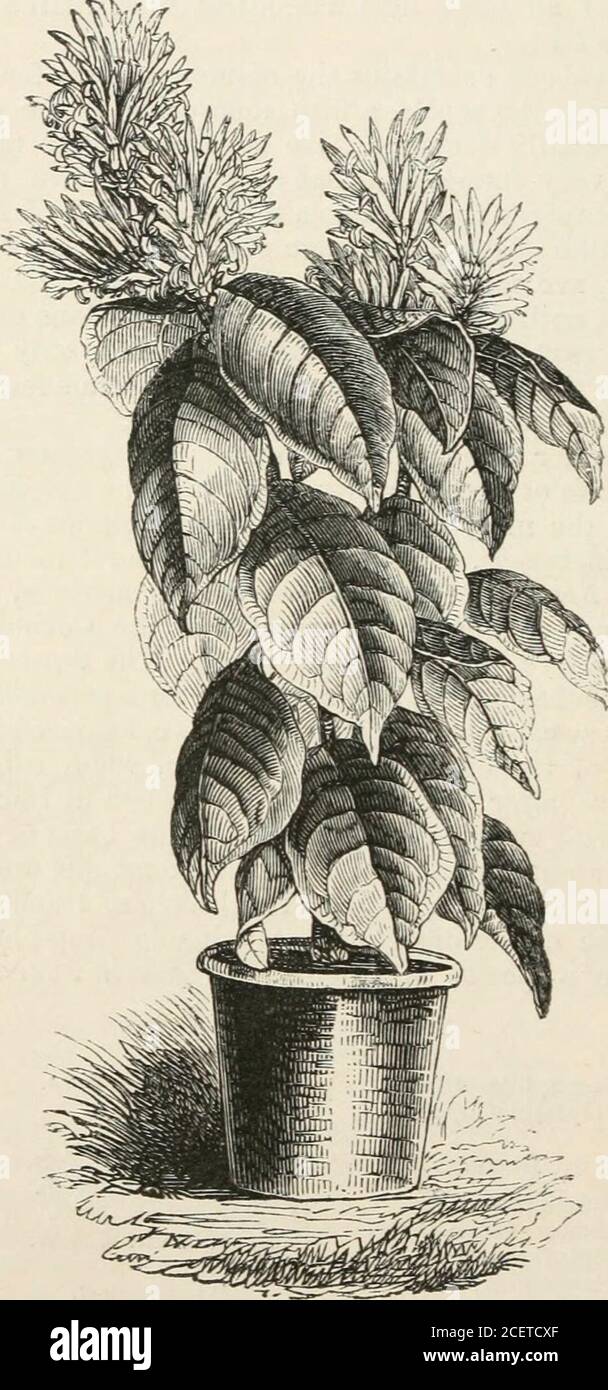 . The vegetable kingdom : or, The structure, classification, and uses of plants, illustrated upon the natural system. ria, Reichetib. 680 ACANTHACEiE. [Perigynous Exogens. Rostellaria, Nees.Hemichoriste, Wall.Odontonema, Nees.Graptophyllum, Nees.Beloperone, Nees.Schaueria, Nees.Tyloglossa, Hochst.Gendarussa, Nees. Adhatoda, Herm.Rhytiglossa, Nees.Leptostachya, Nees.Gymnostachyum, Nees.Eranthemum, R. Br. Chameranthemum, Nees.Justicia, Nees.Rhinacanthus, Nees. DiCLIPTERID/E. Blechum, P. Br.Rungia, Nees.Dicliptera, Juss. Dianthera, Soland.Amphiscopia, Nees.Peristrophe, Nees.Sautiera, Decaisne. Hy Stock Photohttps://www.alamy.com/image-license-details/?v=1https://www.alamy.com/the-vegetable-kingdom-or-the-structure-classification-and-uses-of-plants-illustrated-upon-the-natural-system-ria-reichetib-680-acanthaceie-perigynous-exogens-rostellaria-neeshemichoriste-wallodontonema-neesgraptophyllum-neesbeloperone-neesschaueria-neestyloglossa-hochstgendarussa-nees-adhatoda-hermrhytiglossa-neesleptostachya-neesgymnostachyum-neeseranthemum-r-br-chameranthemum-neesjusticia-neesrhinacanthus-nees-diclipteride-blechum-p-brrungia-neesdicliptera-juss-dianthera-solandamphiscopia-neesperistrophe-neessautiera-decaisne-hy-image370559911.html
. The vegetable kingdom : or, The structure, classification, and uses of plants, illustrated upon the natural system. ria, Reichetib. 680 ACANTHACEiE. [Perigynous Exogens. Rostellaria, Nees.Hemichoriste, Wall.Odontonema, Nees.Graptophyllum, Nees.Beloperone, Nees.Schaueria, Nees.Tyloglossa, Hochst.Gendarussa, Nees. Adhatoda, Herm.Rhytiglossa, Nees.Leptostachya, Nees.Gymnostachyum, Nees.Eranthemum, R. Br. Chameranthemum, Nees.Justicia, Nees.Rhinacanthus, Nees. DiCLIPTERID/E. Blechum, P. Br.Rungia, Nees.Dicliptera, Juss. Dianthera, Soland.Amphiscopia, Nees.Peristrophe, Nees.Sautiera, Decaisne. Hy Stock Photohttps://www.alamy.com/image-license-details/?v=1https://www.alamy.com/the-vegetable-kingdom-or-the-structure-classification-and-uses-of-plants-illustrated-upon-the-natural-system-ria-reichetib-680-acanthaceie-perigynous-exogens-rostellaria-neeshemichoriste-wallodontonema-neesgraptophyllum-neesbeloperone-neesschaueria-neestyloglossa-hochstgendarussa-nees-adhatoda-hermrhytiglossa-neesleptostachya-neesgymnostachyum-neeseranthemum-r-br-chameranthemum-neesjusticia-neesrhinacanthus-nees-diclipteride-blechum-p-brrungia-neesdicliptera-juss-dianthera-solandamphiscopia-neesperistrophe-neessautiera-decaisne-hy-image370559911.htmlRM2CETCXF–. The vegetable kingdom : or, The structure, classification, and uses of plants, illustrated upon the natural system. ria, Reichetib. 680 ACANTHACEiE. [Perigynous Exogens. Rostellaria, Nees.Hemichoriste, Wall.Odontonema, Nees.Graptophyllum, Nees.Beloperone, Nees.Schaueria, Nees.Tyloglossa, Hochst.Gendarussa, Nees. Adhatoda, Herm.Rhytiglossa, Nees.Leptostachya, Nees.Gymnostachyum, Nees.Eranthemum, R. Br. Chameranthemum, Nees.Justicia, Nees.Rhinacanthus, Nees. DiCLIPTERID/E. Blechum, P. Br.Rungia, Nees.Dicliptera, Juss. Dianthera, Soland.Amphiscopia, Nees.Peristrophe, Nees.Sautiera, Decaisne. Hy
 . The natural history of plants. Botany. Via. 133. Flower (). Via. 134. Longitudinal section of flower. insertion of the perianth and androceum is far more decidedly perigynous. The receptacle is lined with glandular tissue; on its rim are inserted a five-toothed gamosepalous calyx, five equal petals, at first slightly imbricate but later valvate, and ten free stamens, five superposed to the teeth of the calyx, and five shorter to the petals ; the filament of each stamen bears an introrse two-celled anther of 1 Haev. & SoND., M. Cap., ii. 271.—Olit., M. Trap. Afr., ii. 319. 2 Apzei., ex E Stock Photohttps://www.alamy.com/image-license-details/?v=1https://www.alamy.com/the-natural-history-of-plants-botany-via-133-flower-via-134-longitudinal-section-of-flower-insertion-of-the-perianth-and-androceum-is-far-more-decidedly-perigynous-the-receptacle-is-lined-with-glandular-tissue-on-its-rim-are-inserted-a-five-toothed-gamosepalous-calyx-five-equal-petals-at-first-slightly-imbricate-but-later-valvate-and-ten-free-stamens-five-superposed-to-the-teeth-of-the-calyx-and-five-shorter-to-the-petals-the-filament-of-each-stamen-bears-an-introrse-two-celled-anther-of-1-haev-amp-sond-m-cap-ii-271olit-m-trap-afr-ii-319-2-apzei-ex-e-image216423281.html
. The natural history of plants. Botany. Via. 133. Flower (). Via. 134. Longitudinal section of flower. insertion of the perianth and androceum is far more decidedly perigynous. The receptacle is lined with glandular tissue; on its rim are inserted a five-toothed gamosepalous calyx, five equal petals, at first slightly imbricate but later valvate, and ten free stamens, five superposed to the teeth of the calyx, and five shorter to the petals ; the filament of each stamen bears an introrse two-celled anther of 1 Haev. & SoND., M. Cap., ii. 271.—Olit., M. Trap. Afr., ii. 319. 2 Apzei., ex E Stock Photohttps://www.alamy.com/image-license-details/?v=1https://www.alamy.com/the-natural-history-of-plants-botany-via-133-flower-via-134-longitudinal-section-of-flower-insertion-of-the-perianth-and-androceum-is-far-more-decidedly-perigynous-the-receptacle-is-lined-with-glandular-tissue-on-its-rim-are-inserted-a-five-toothed-gamosepalous-calyx-five-equal-petals-at-first-slightly-imbricate-but-later-valvate-and-ten-free-stamens-five-superposed-to-the-teeth-of-the-calyx-and-five-shorter-to-the-petals-the-filament-of-each-stamen-bears-an-introrse-two-celled-anther-of-1-haev-amp-sond-m-cap-ii-271olit-m-trap-afr-ii-319-2-apzei-ex-e-image216423281.htmlRMPG2X2W–. The natural history of plants. Botany. Via. 133. Flower (). Via. 134. Longitudinal section of flower. insertion of the perianth and androceum is far more decidedly perigynous. The receptacle is lined with glandular tissue; on its rim are inserted a five-toothed gamosepalous calyx, five equal petals, at first slightly imbricate but later valvate, and ten free stamens, five superposed to the teeth of the calyx, and five shorter to the petals ; the filament of each stamen bears an introrse two-celled anther of 1 Haev. & SoND., M. Cap., ii. 271.—Olit., M. Trap. Afr., ii. 319. 2 Apzei., ex E